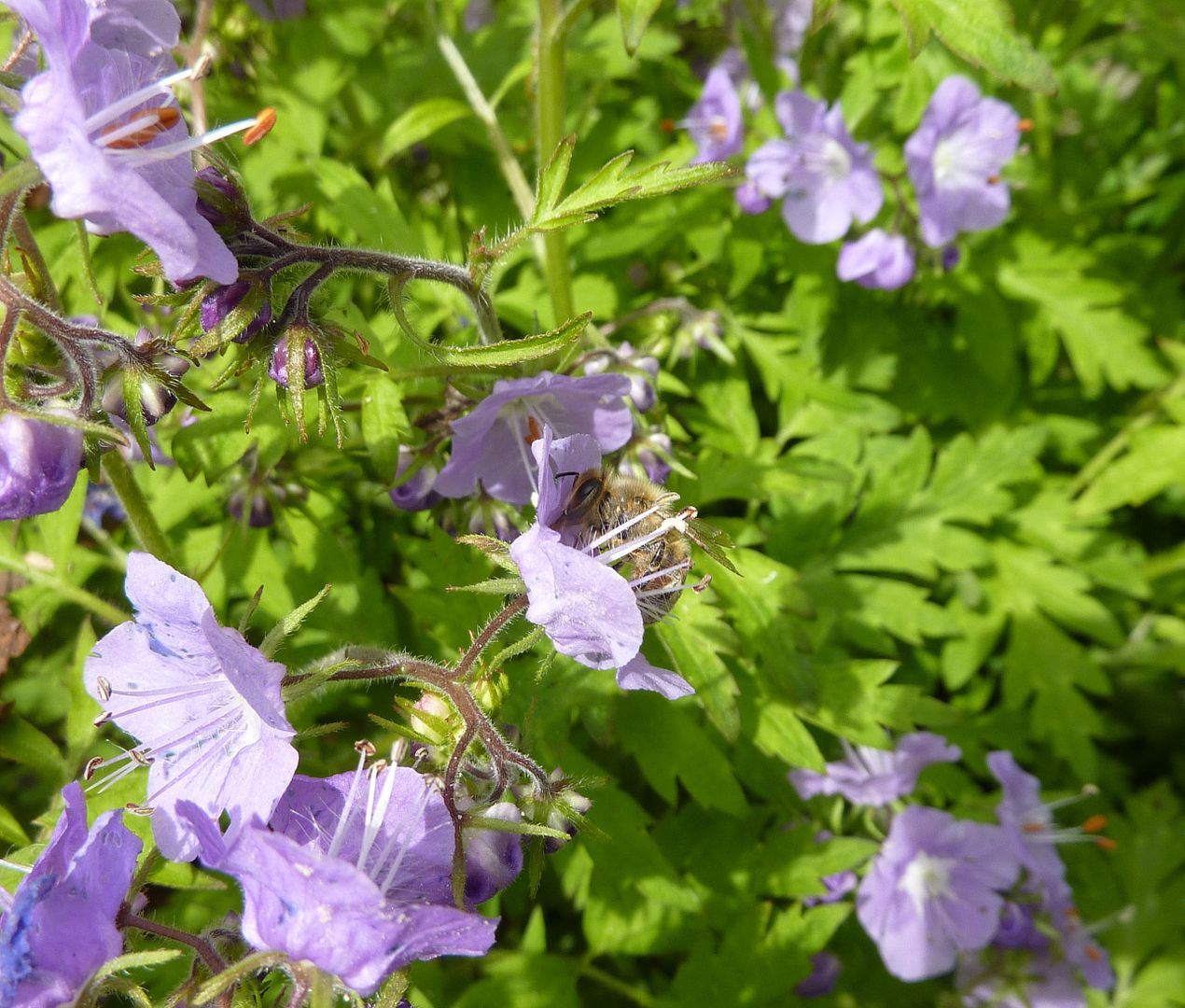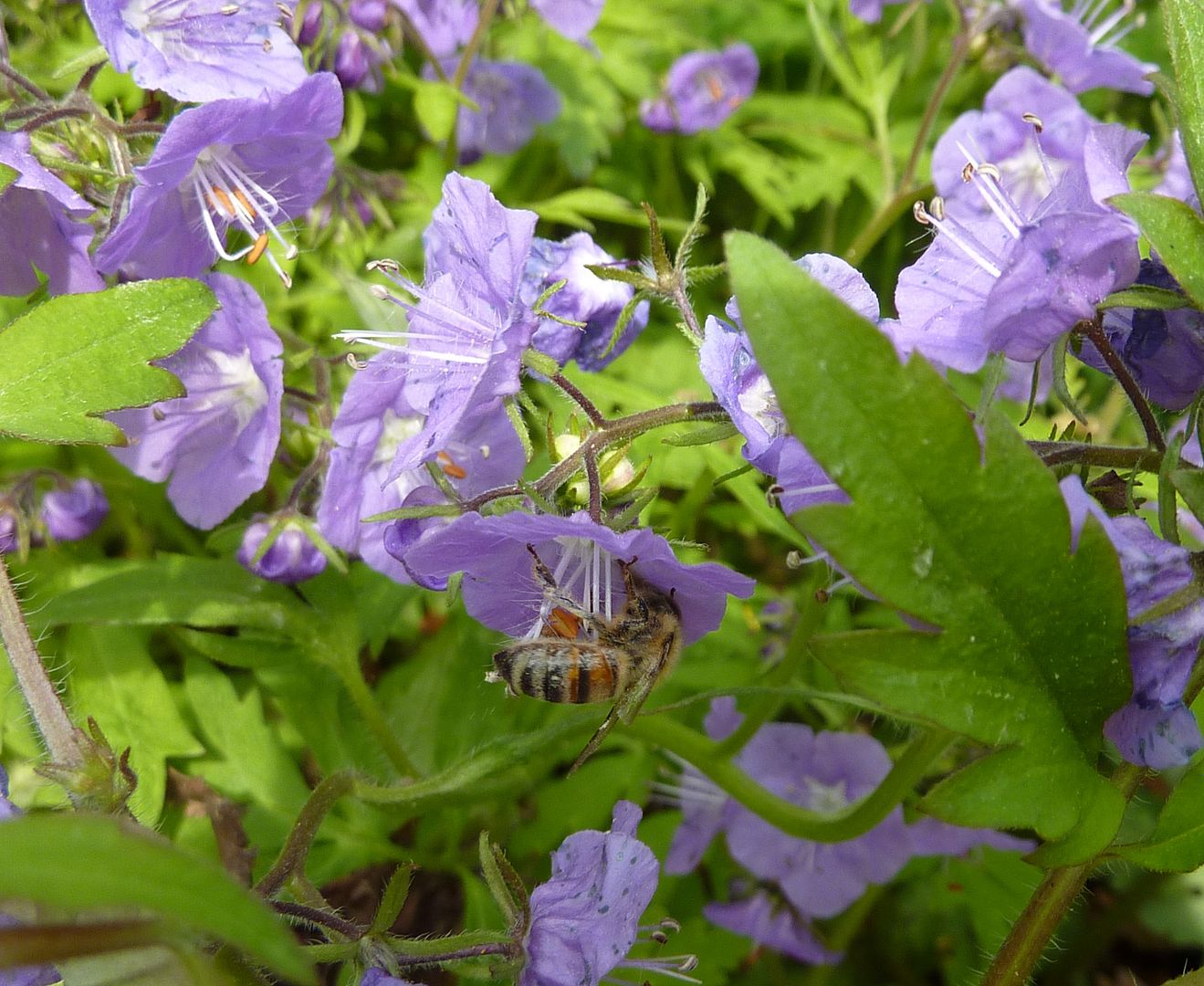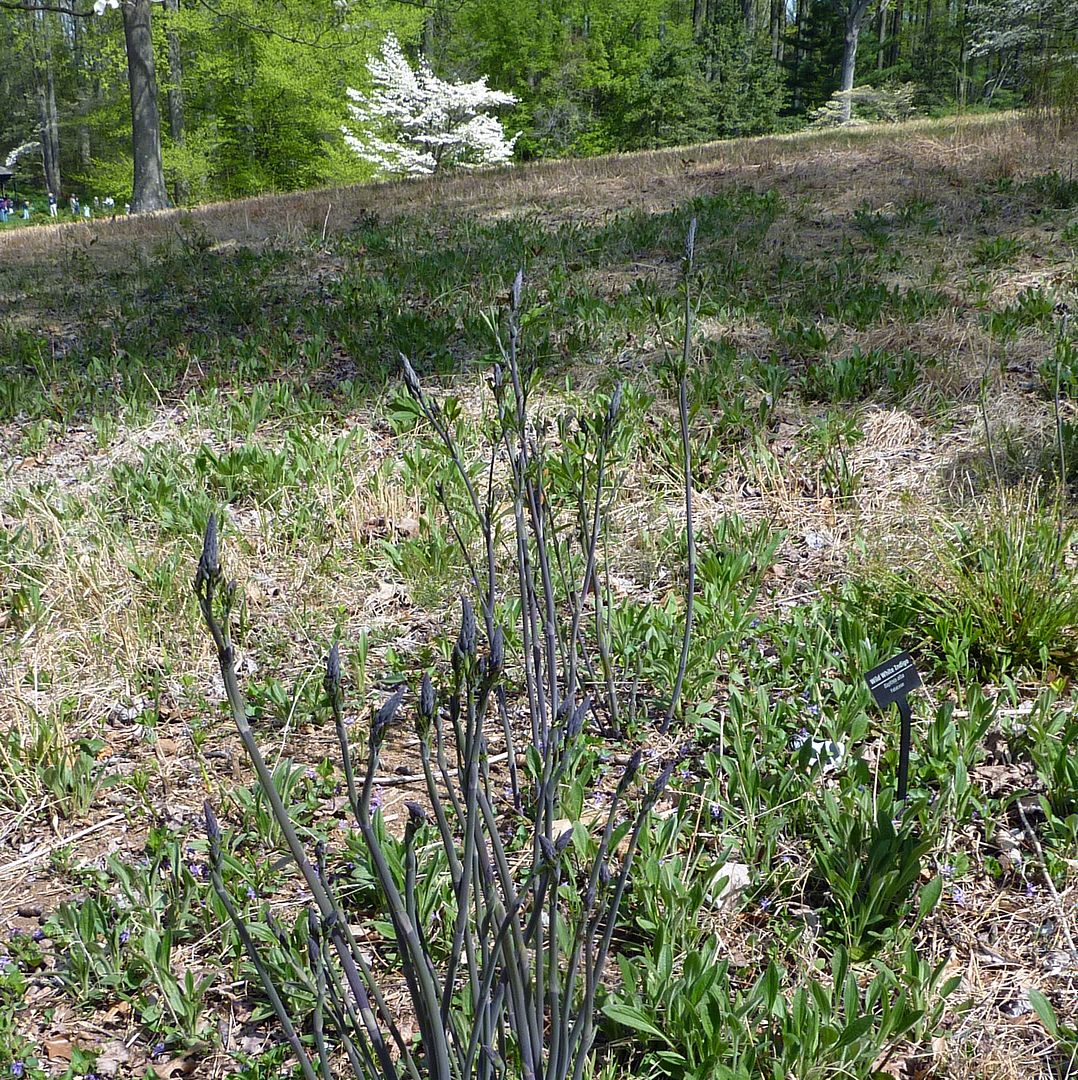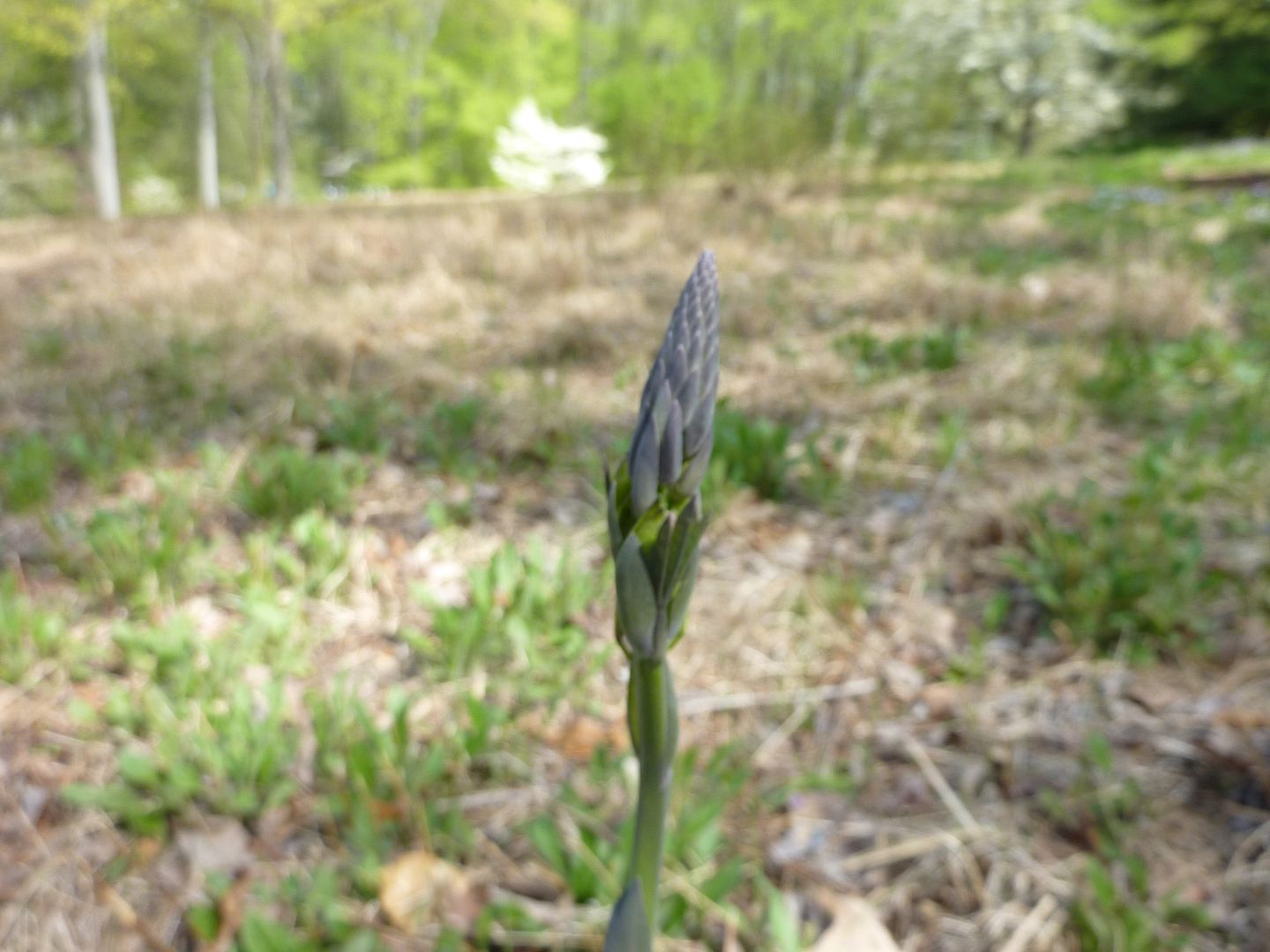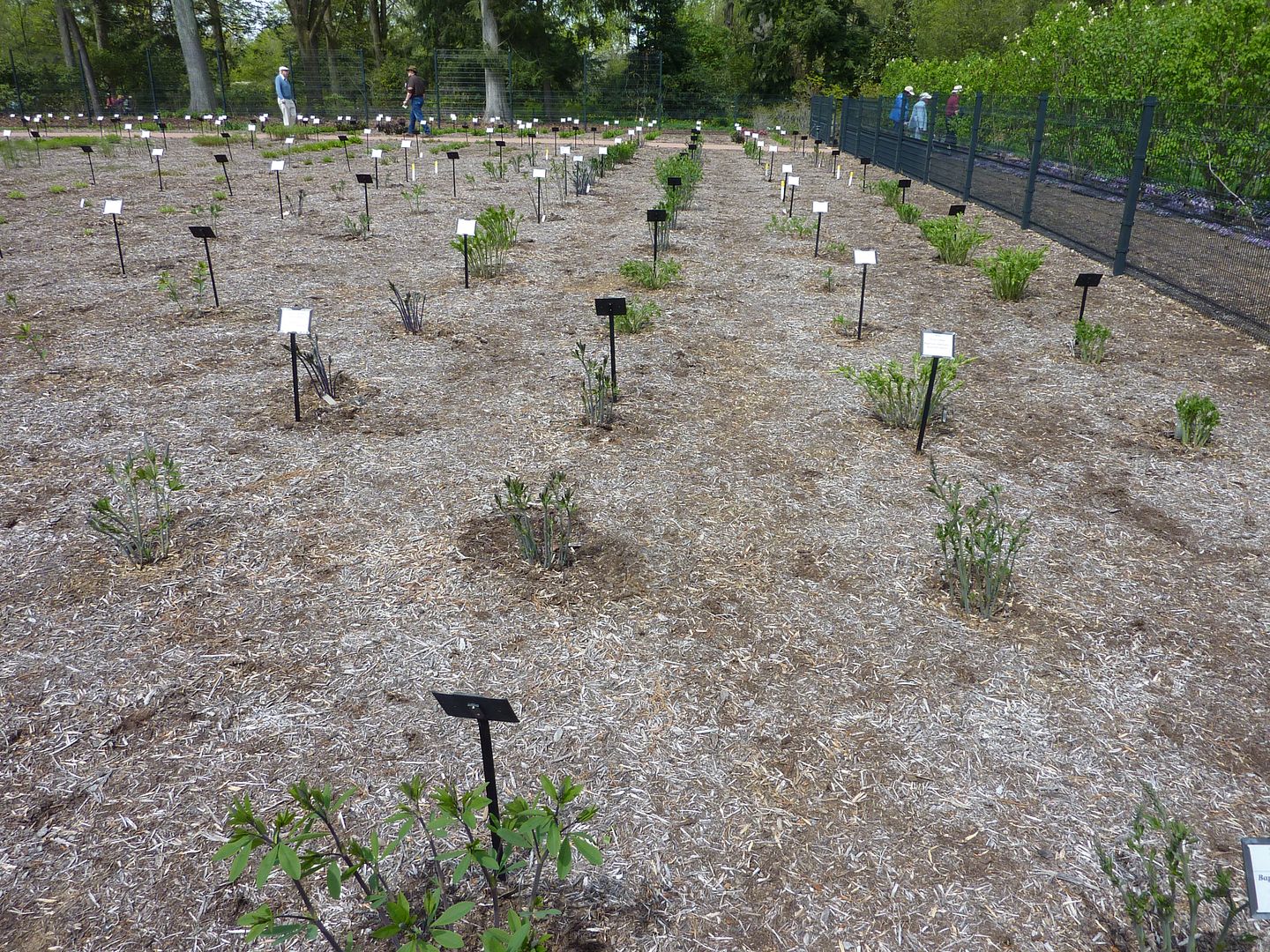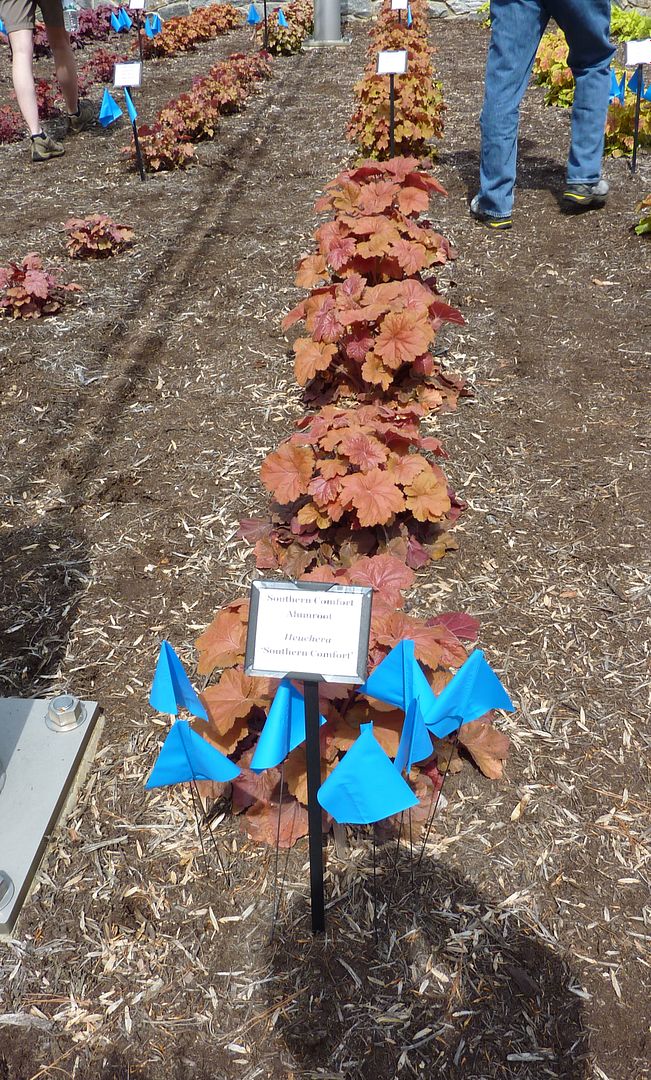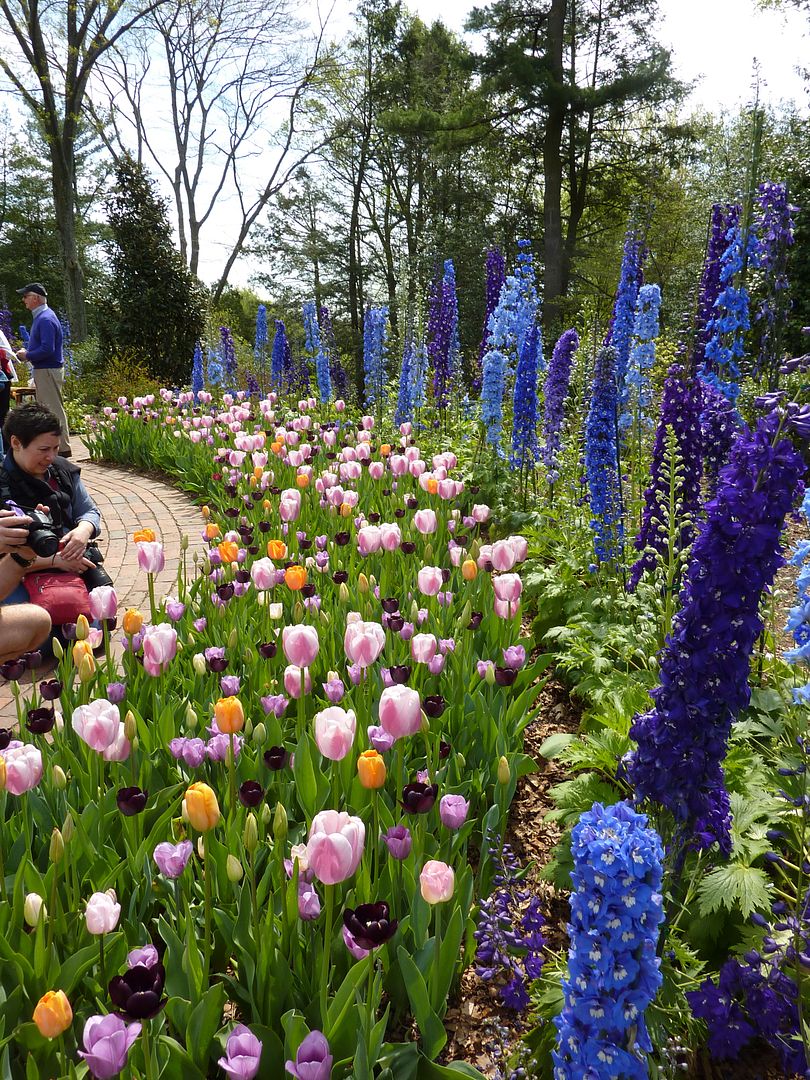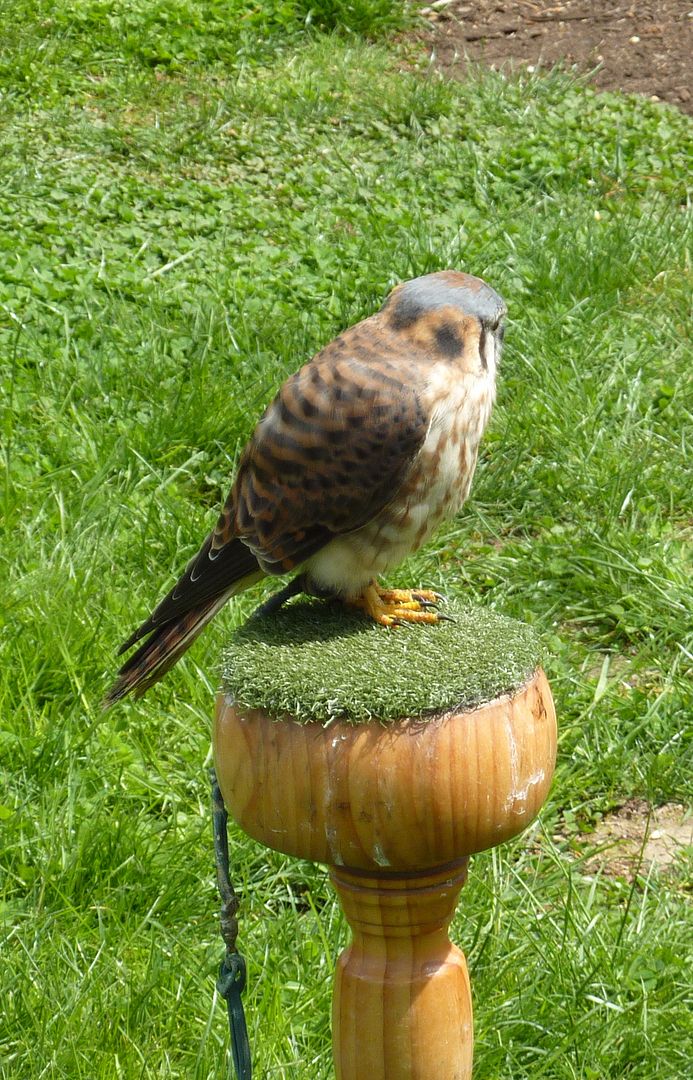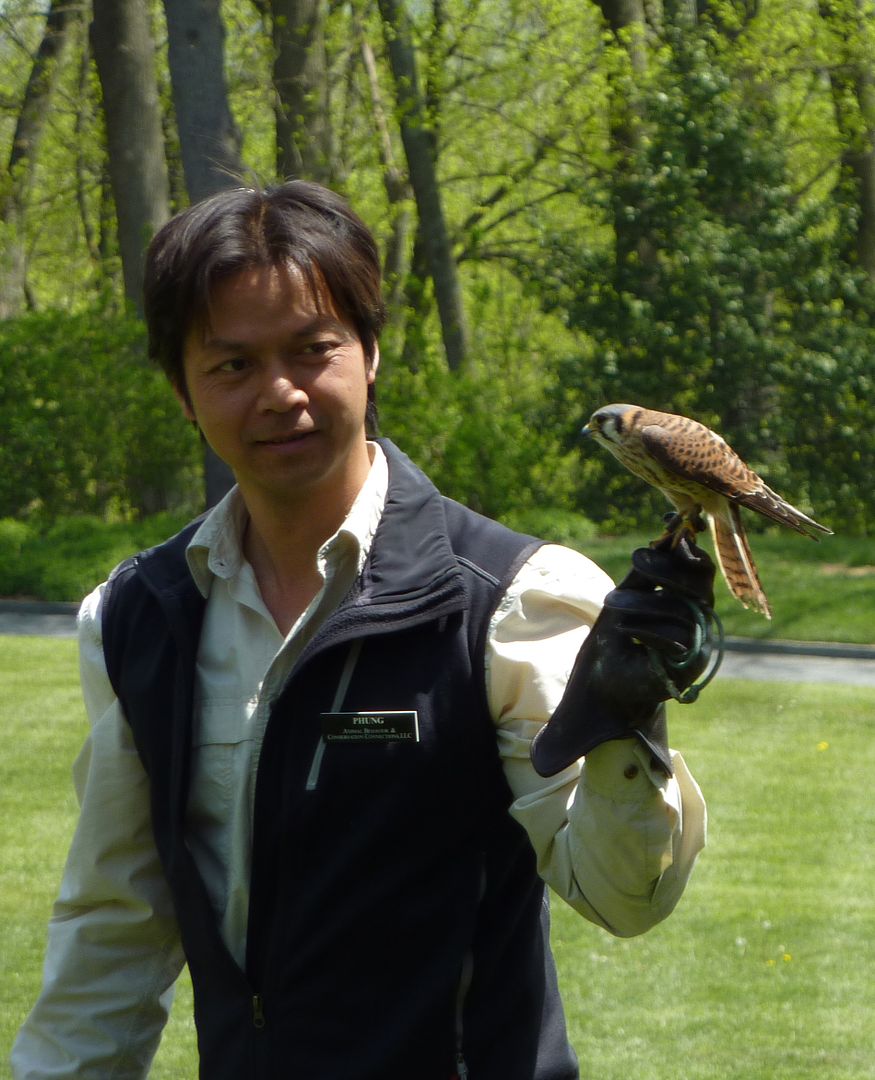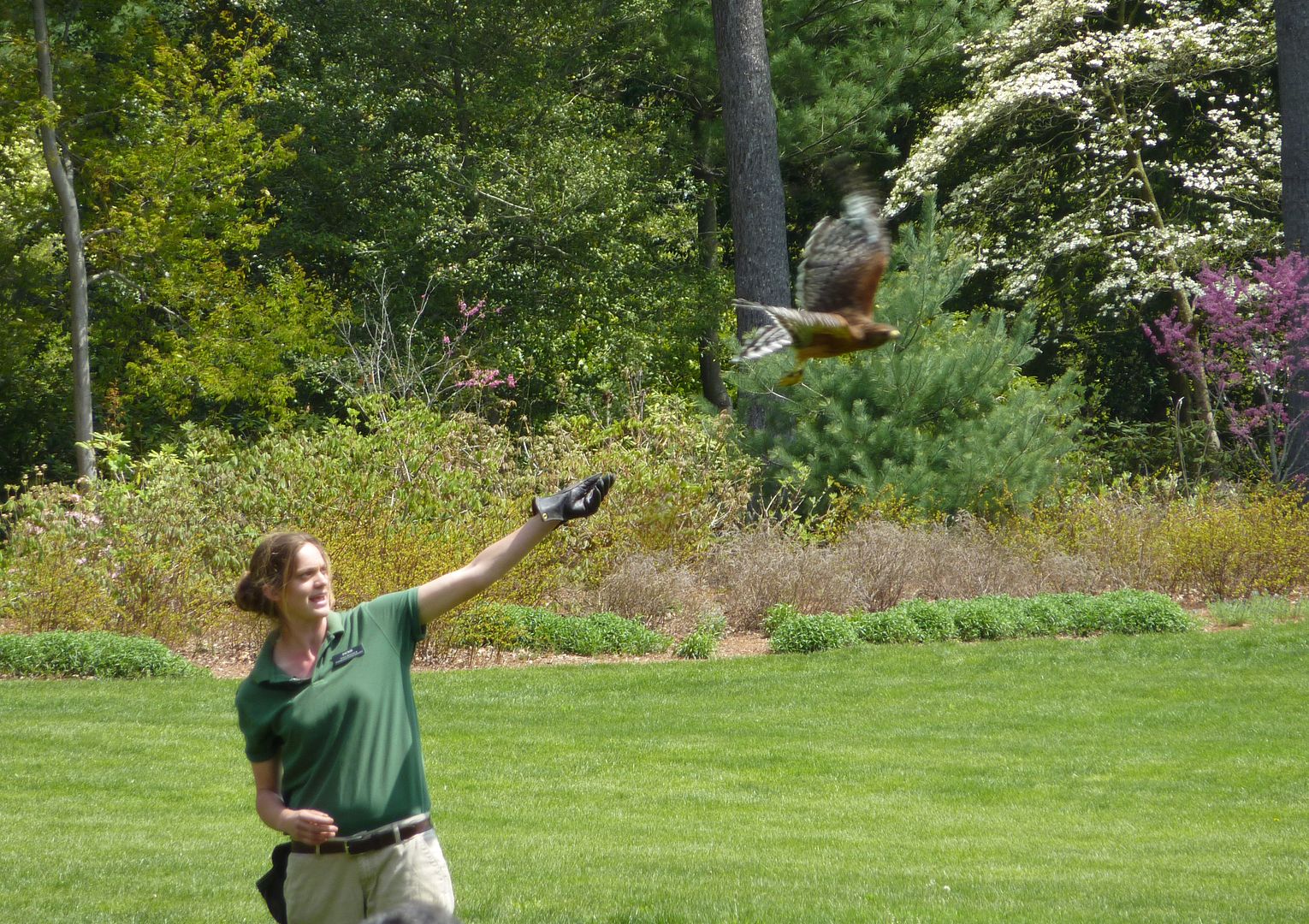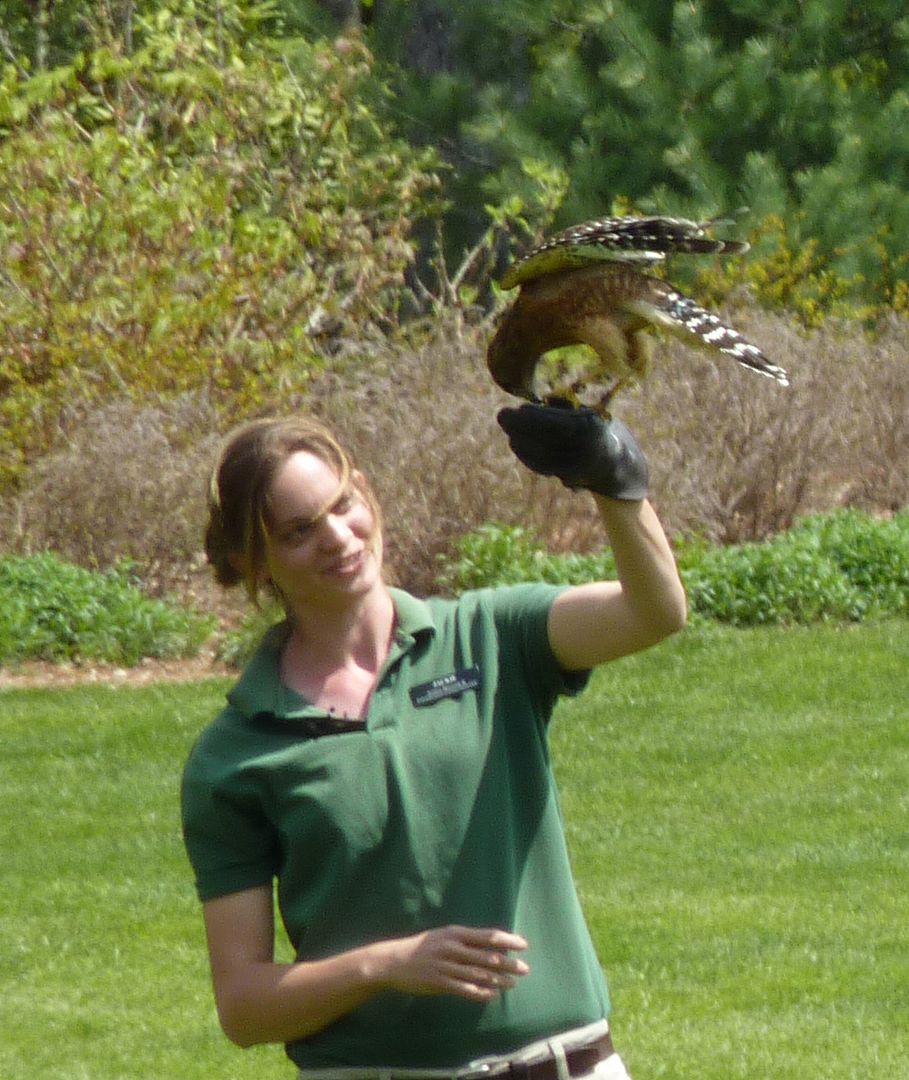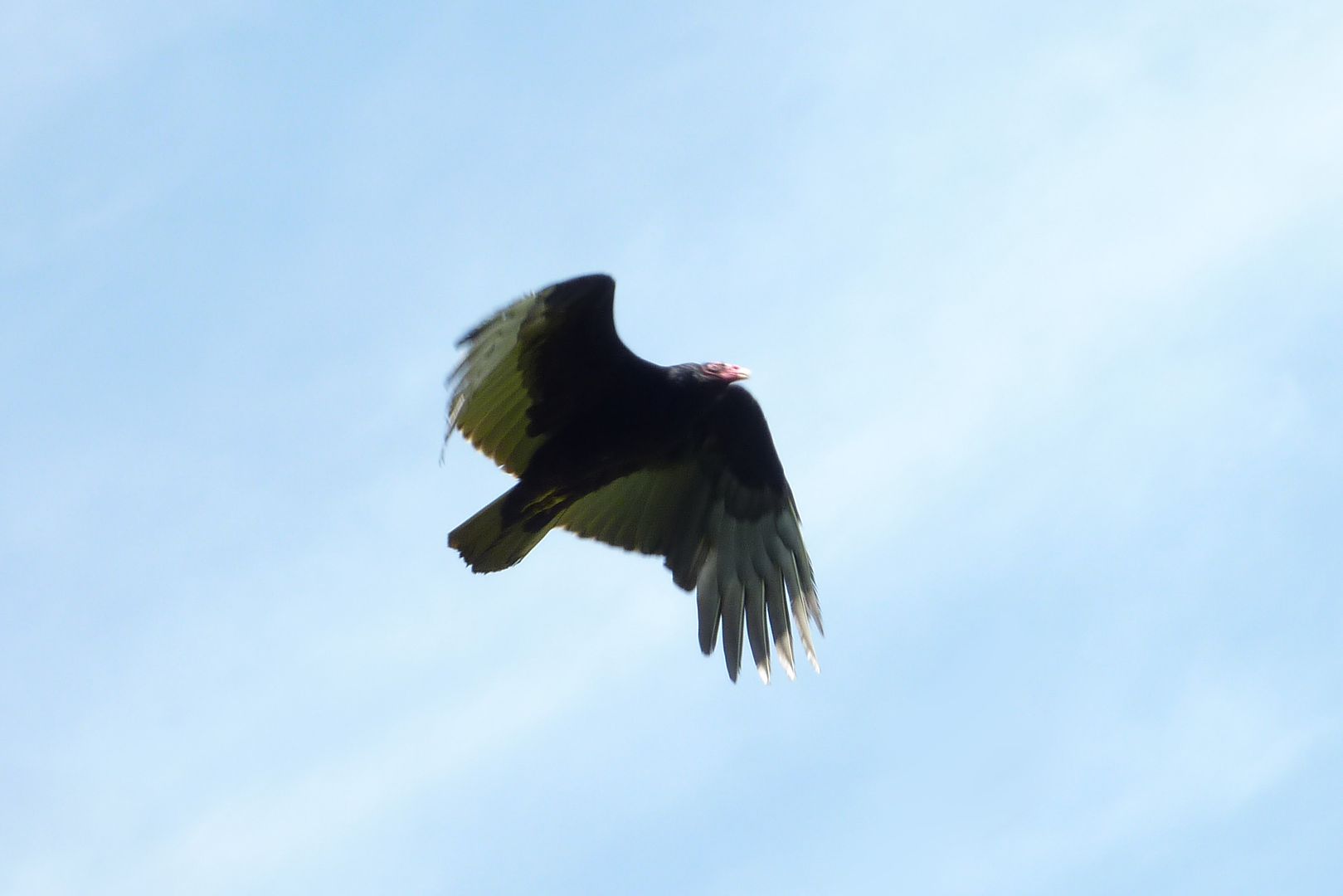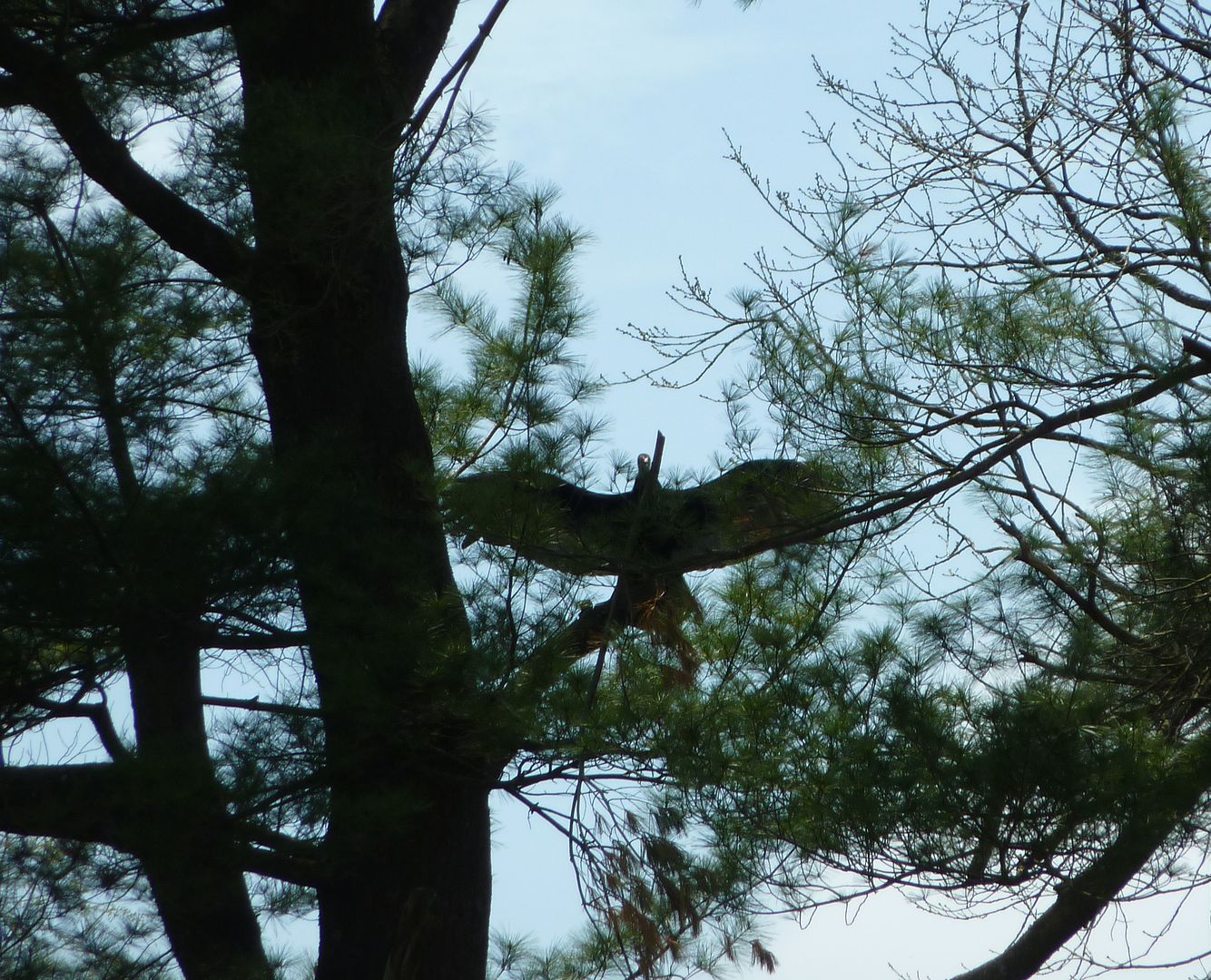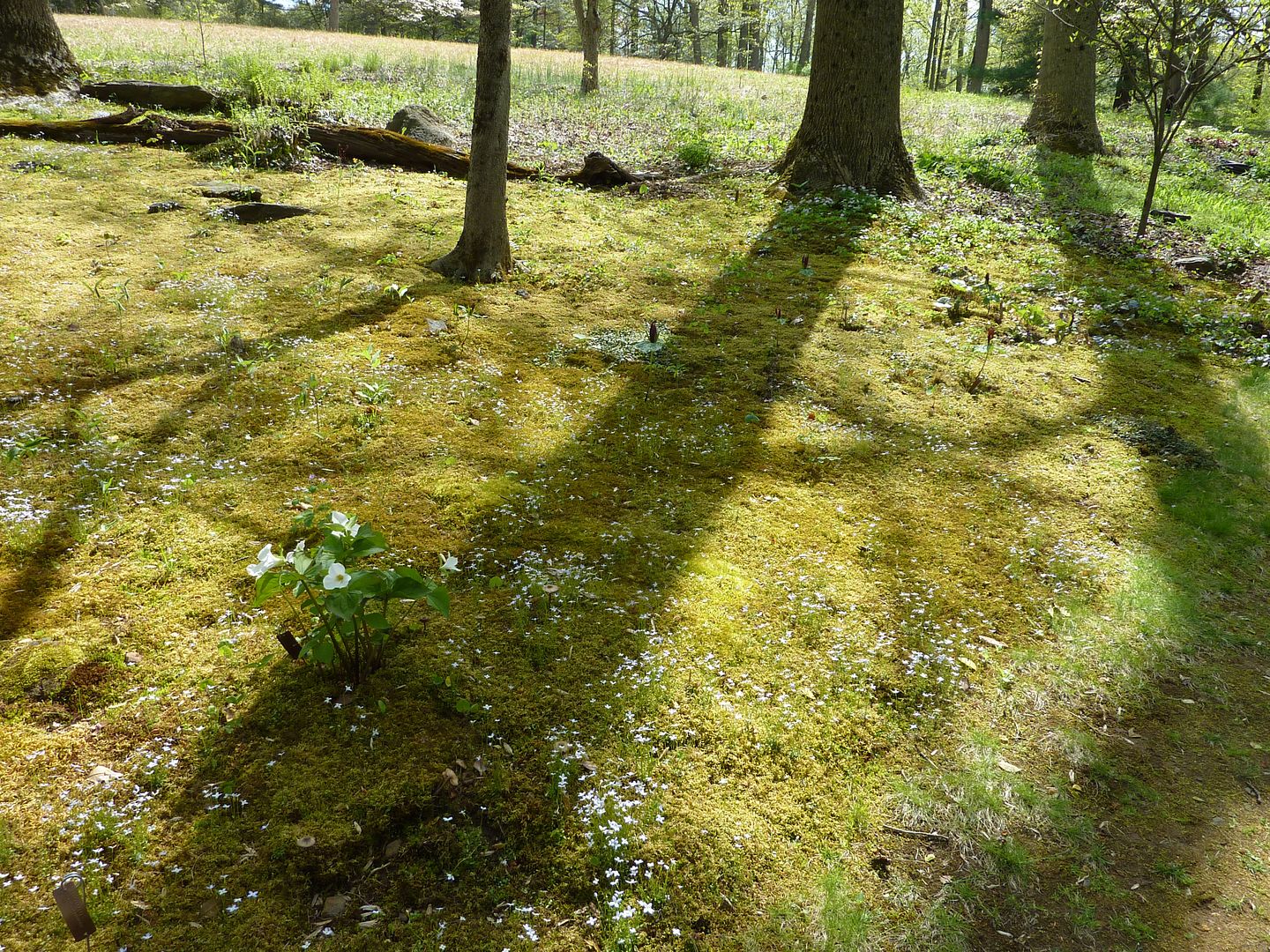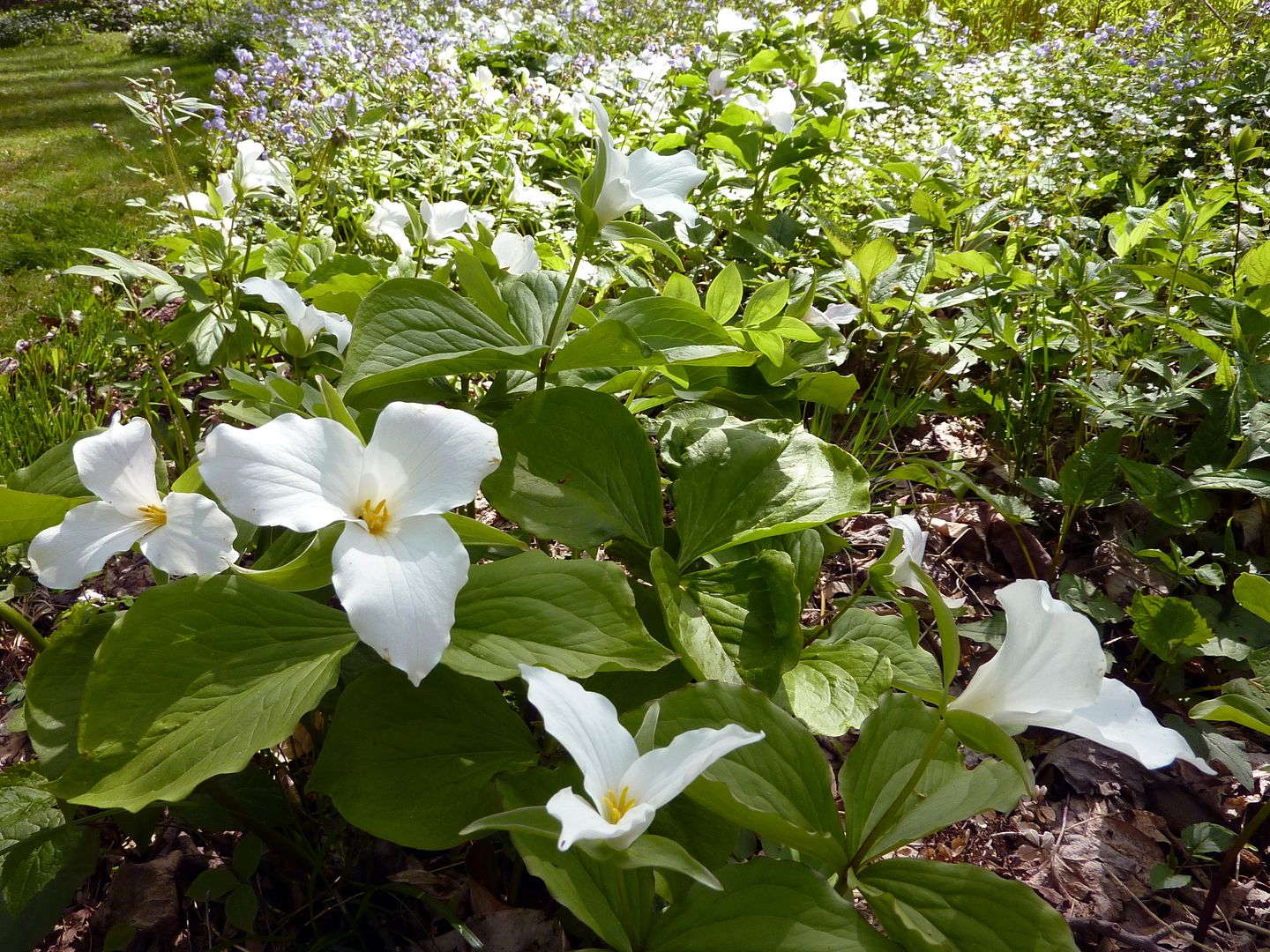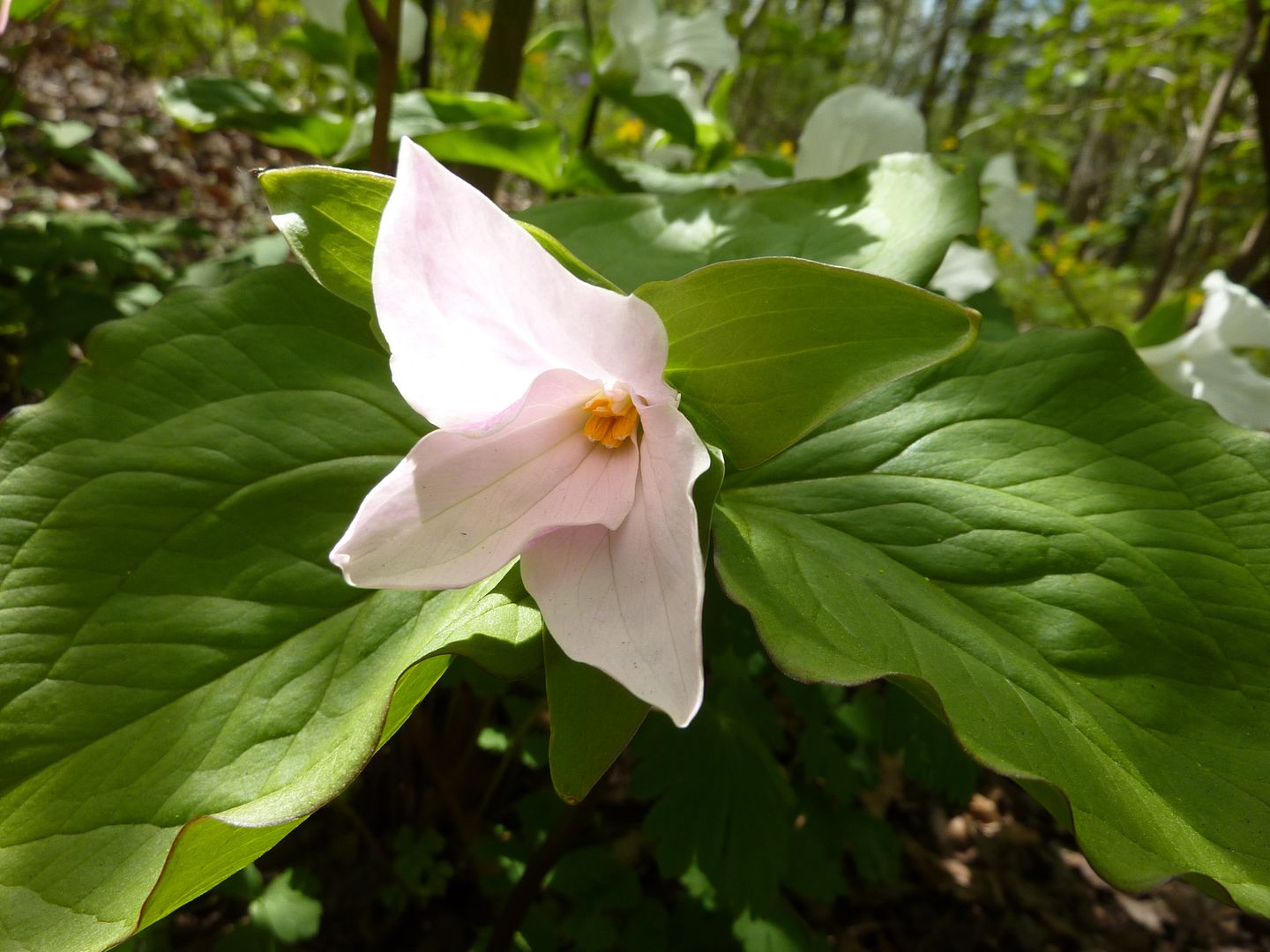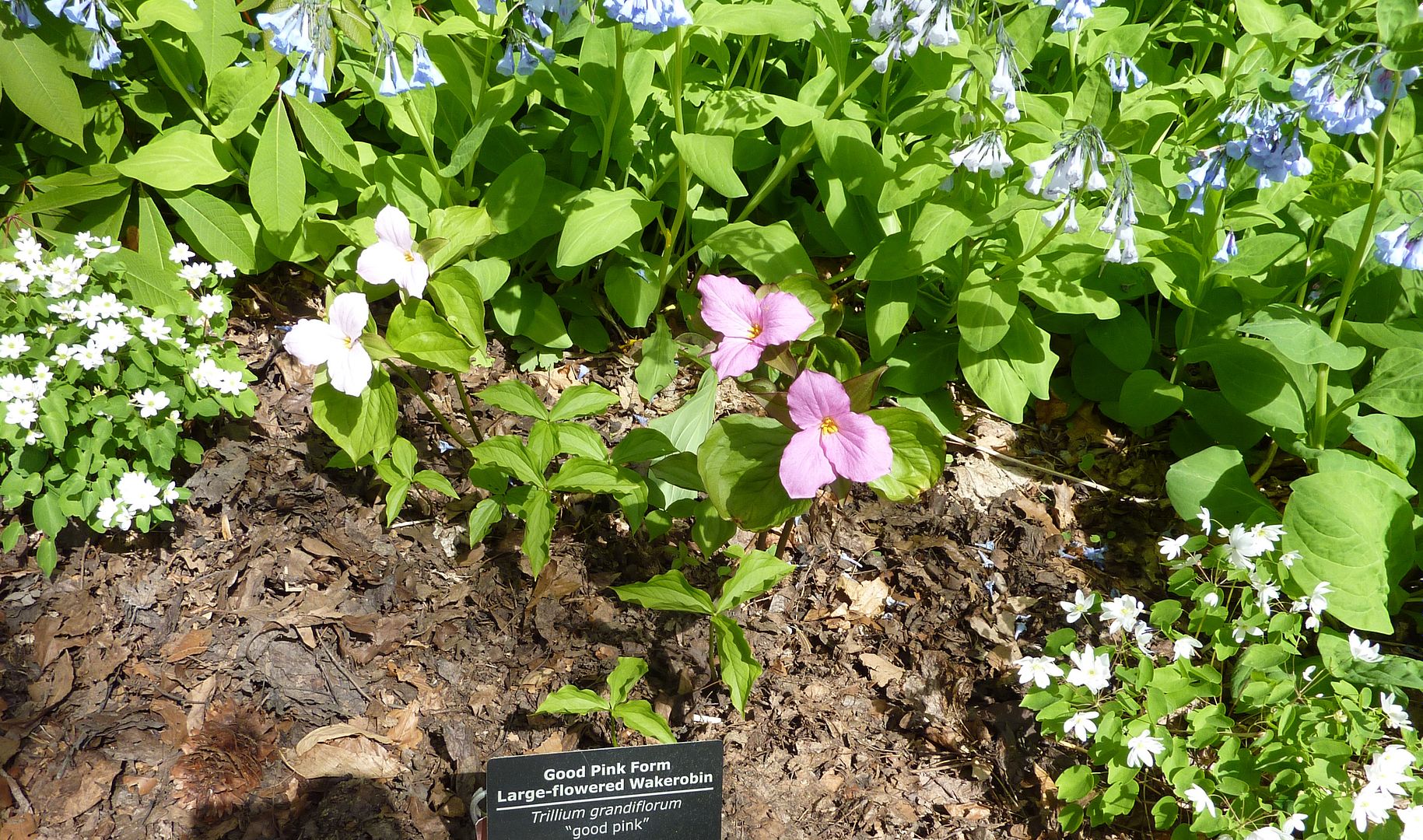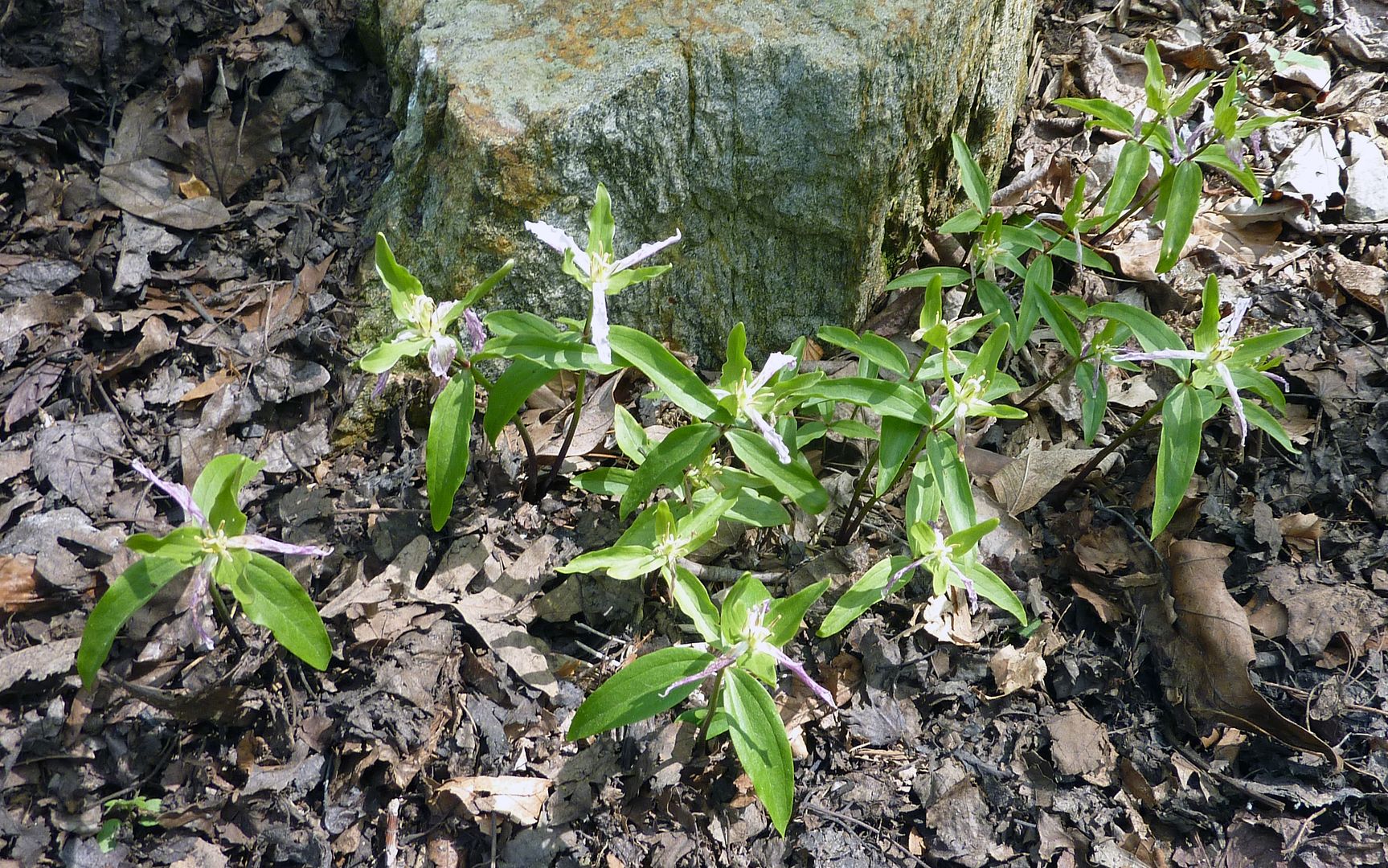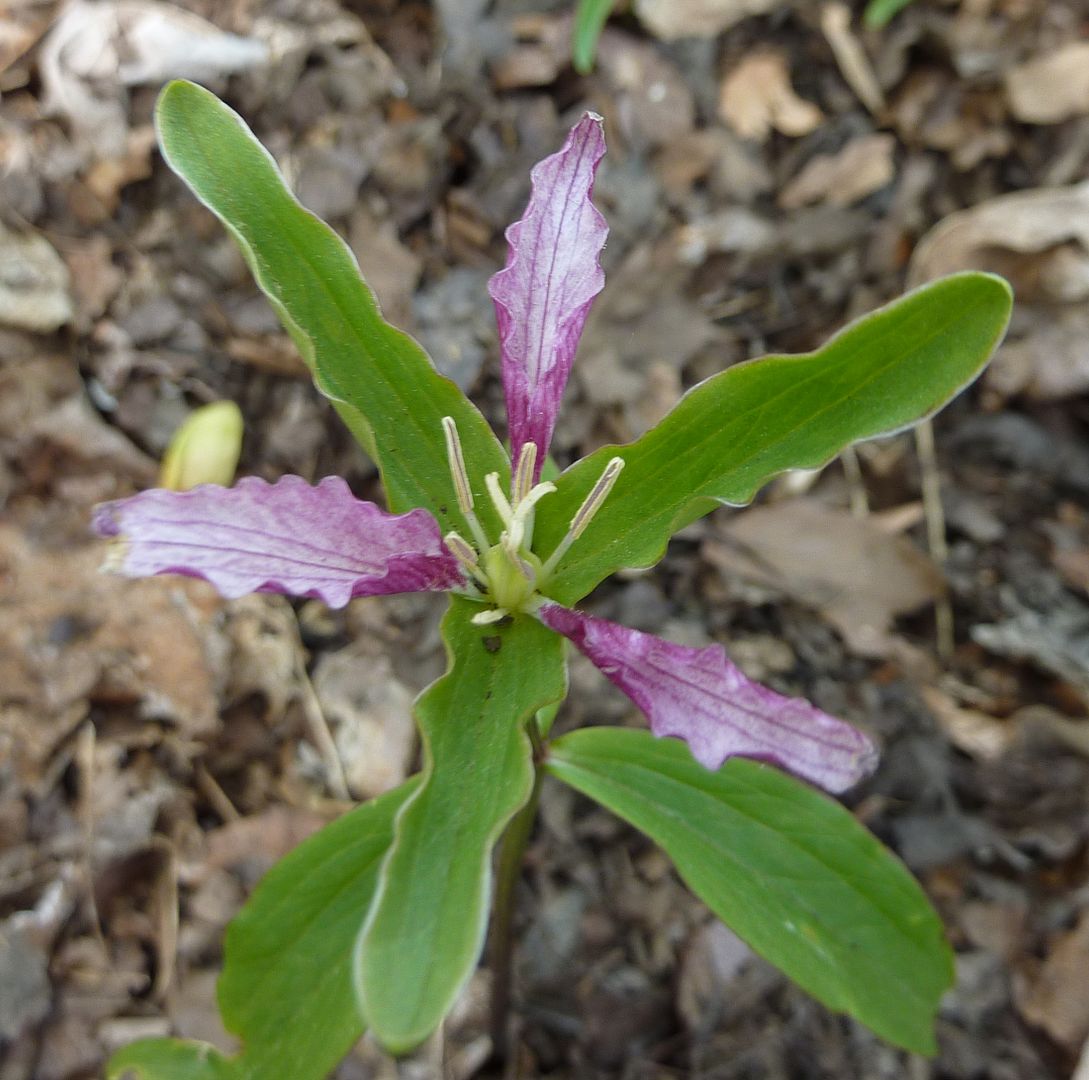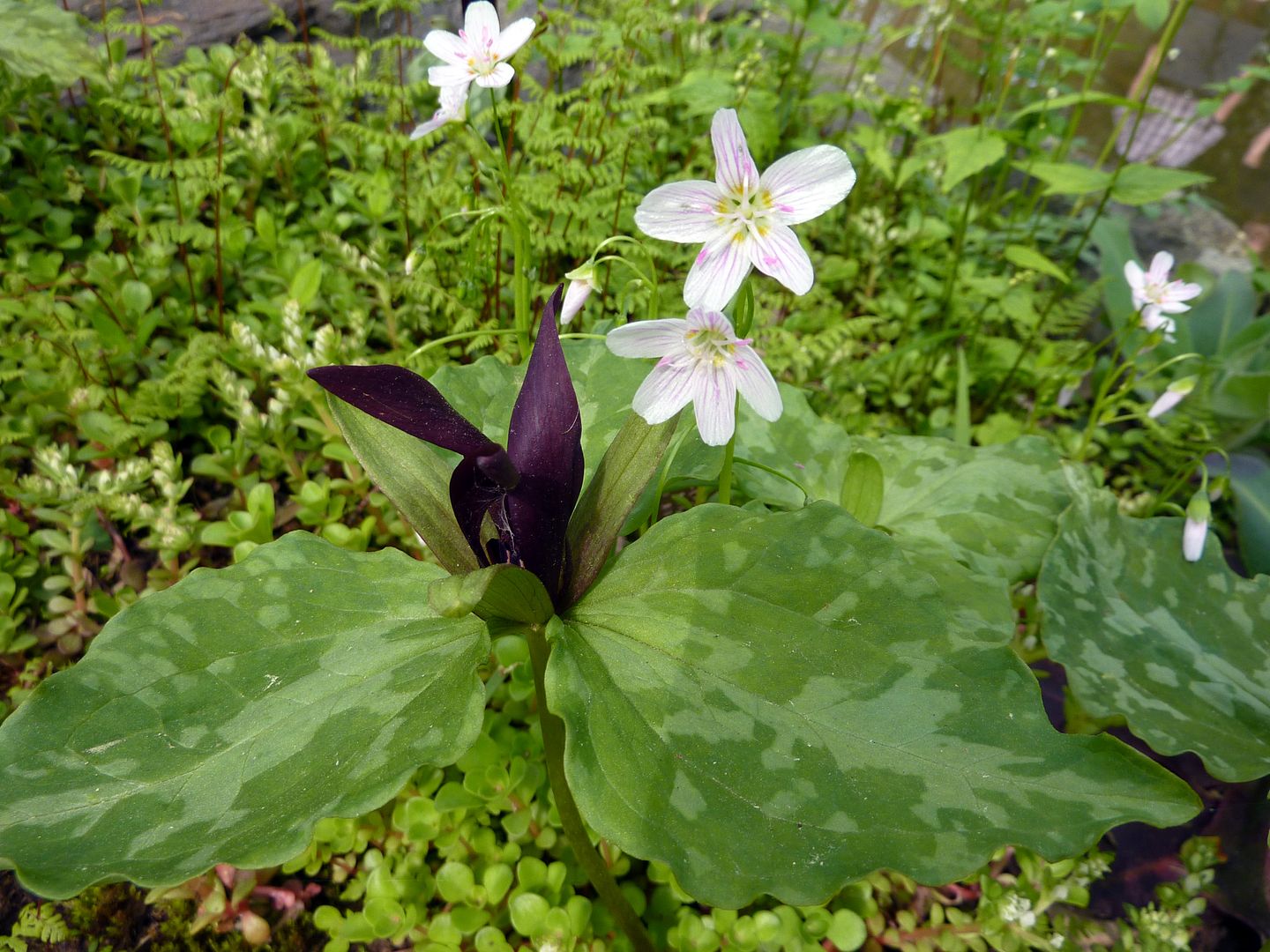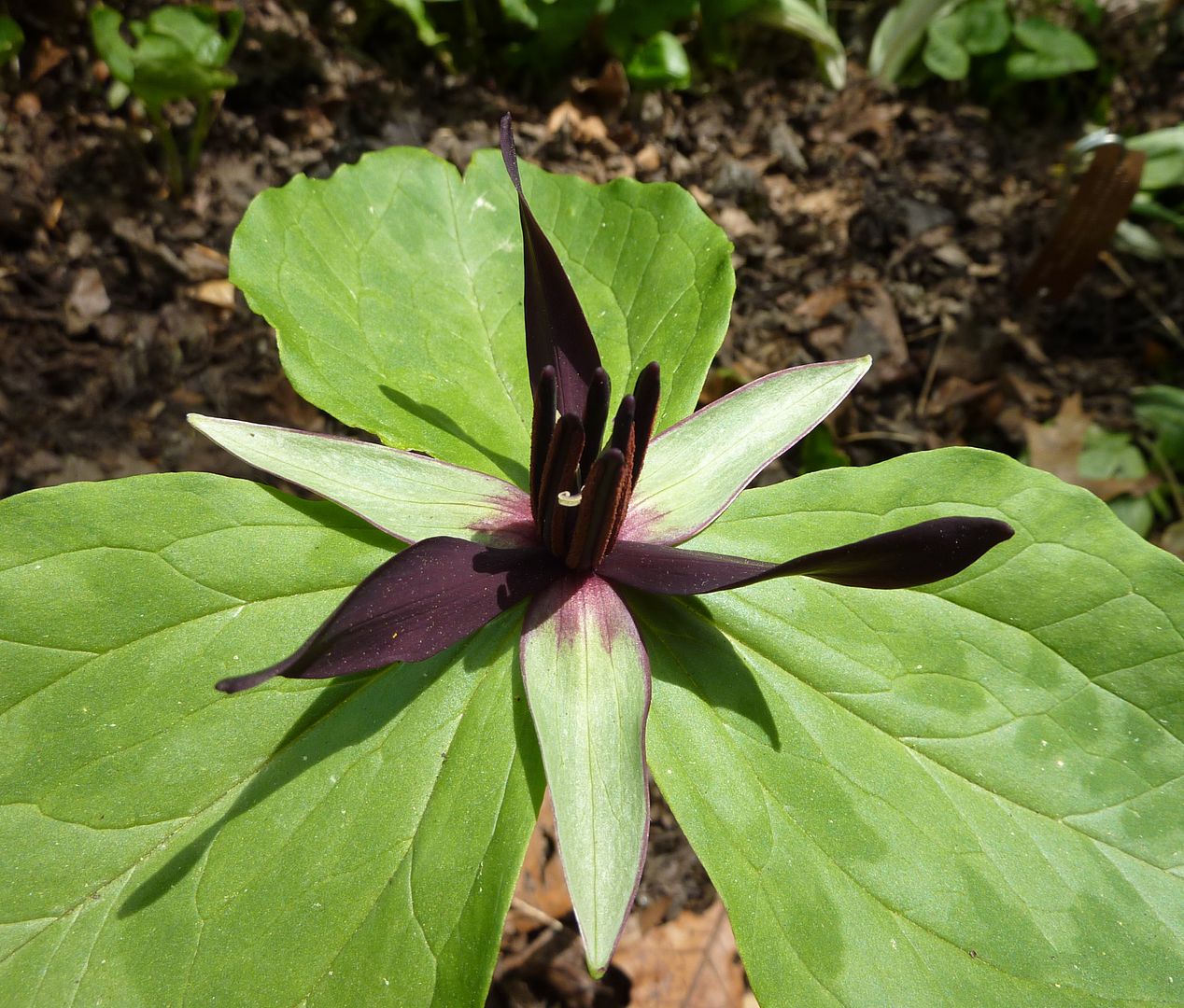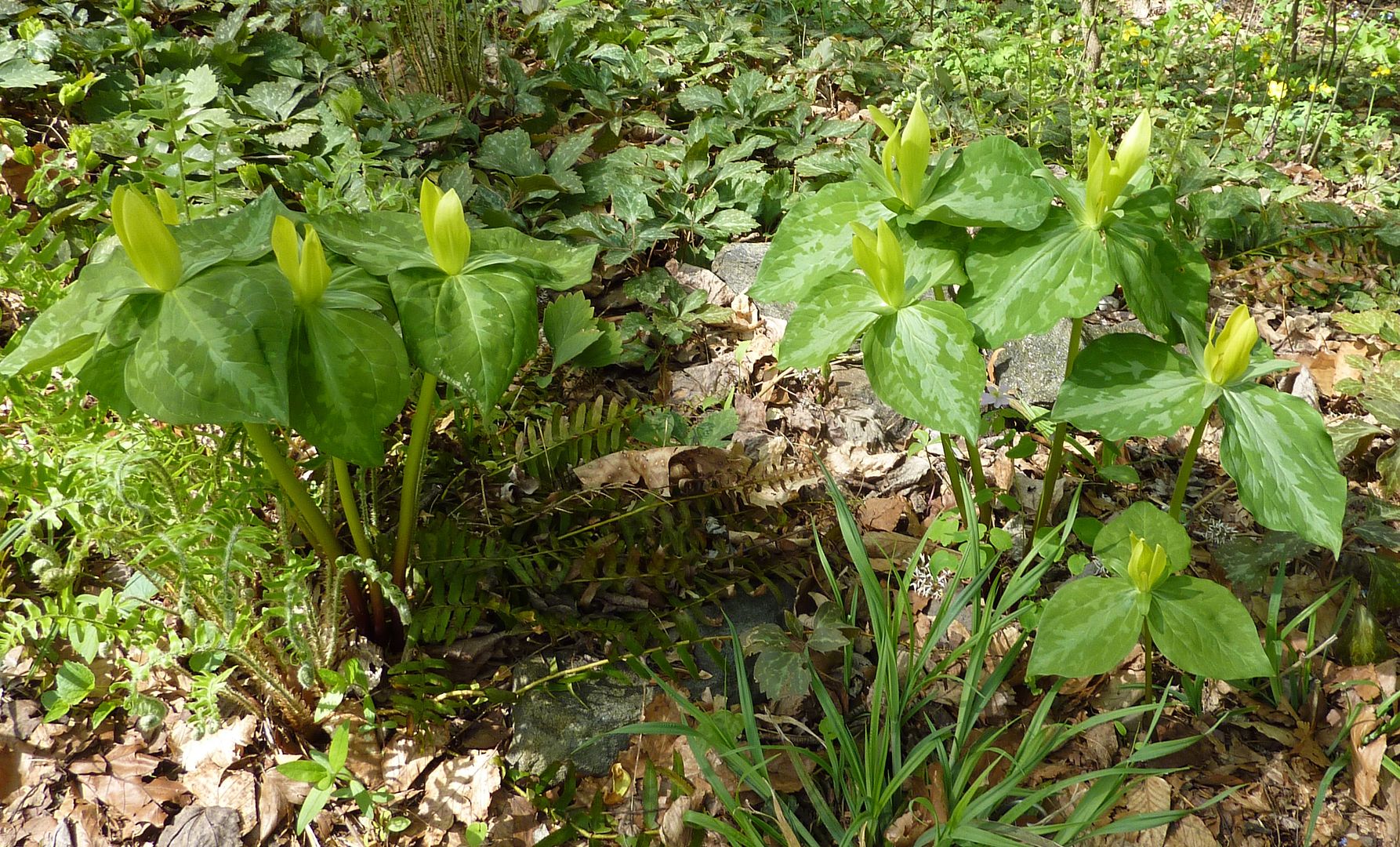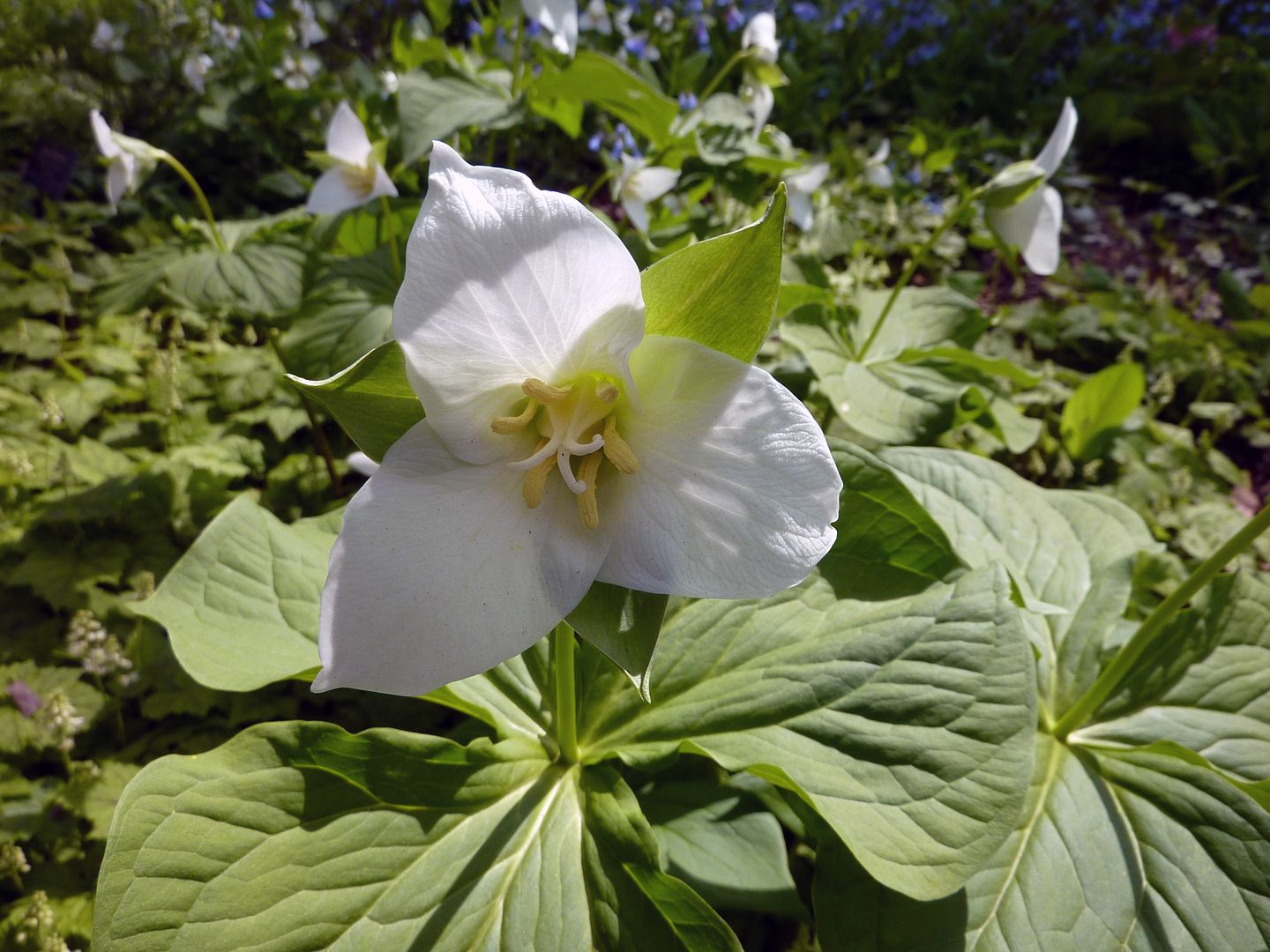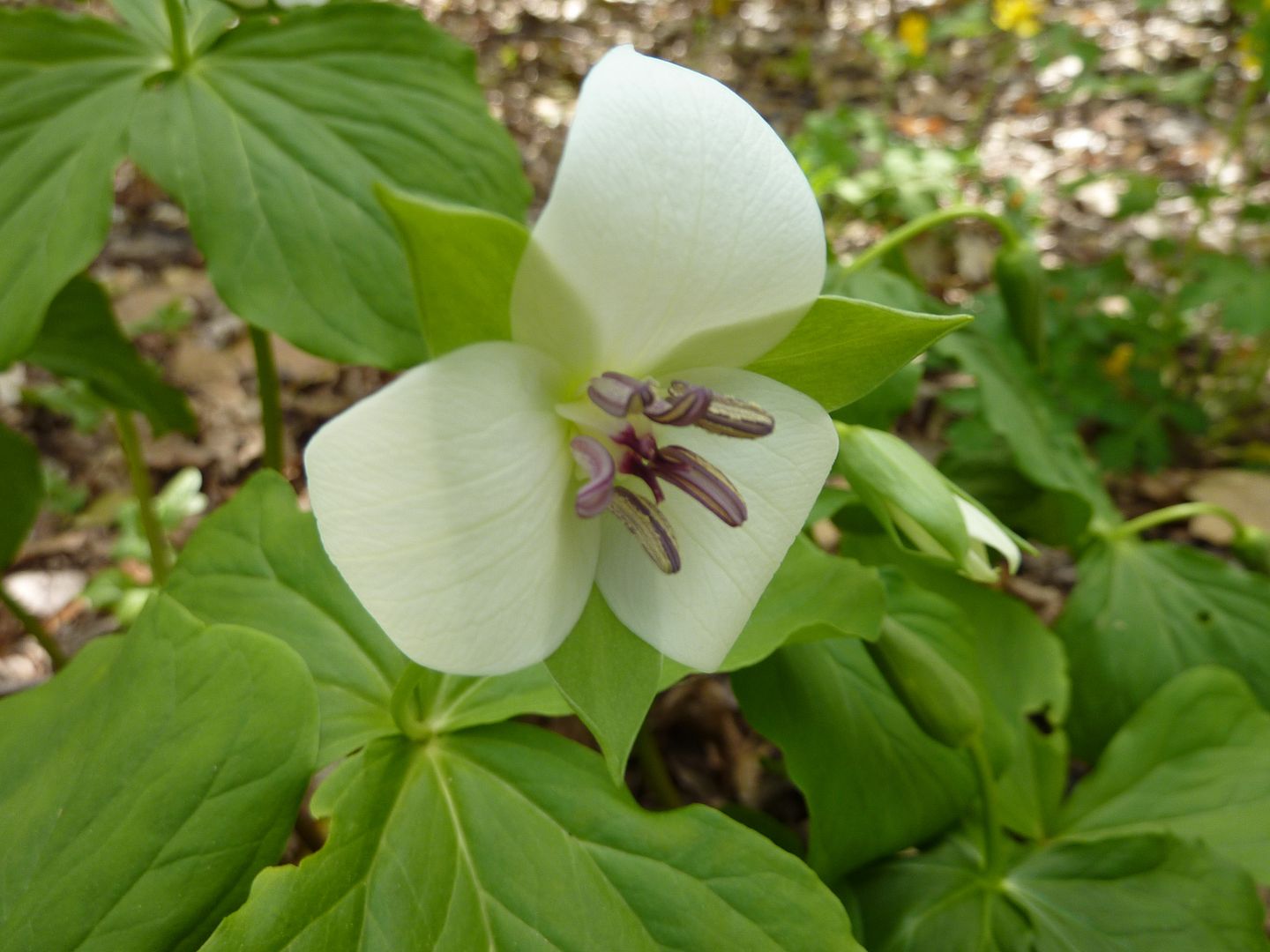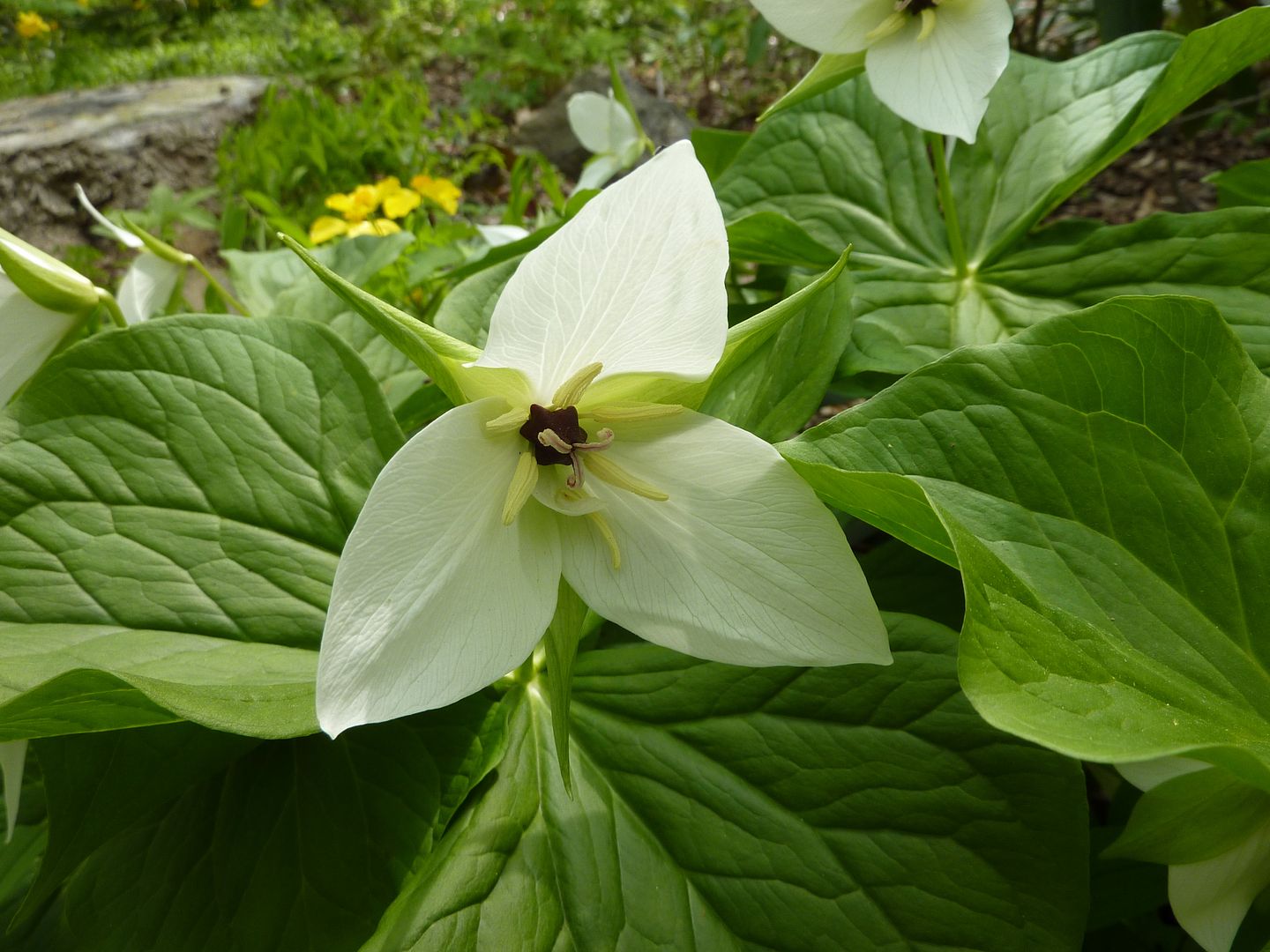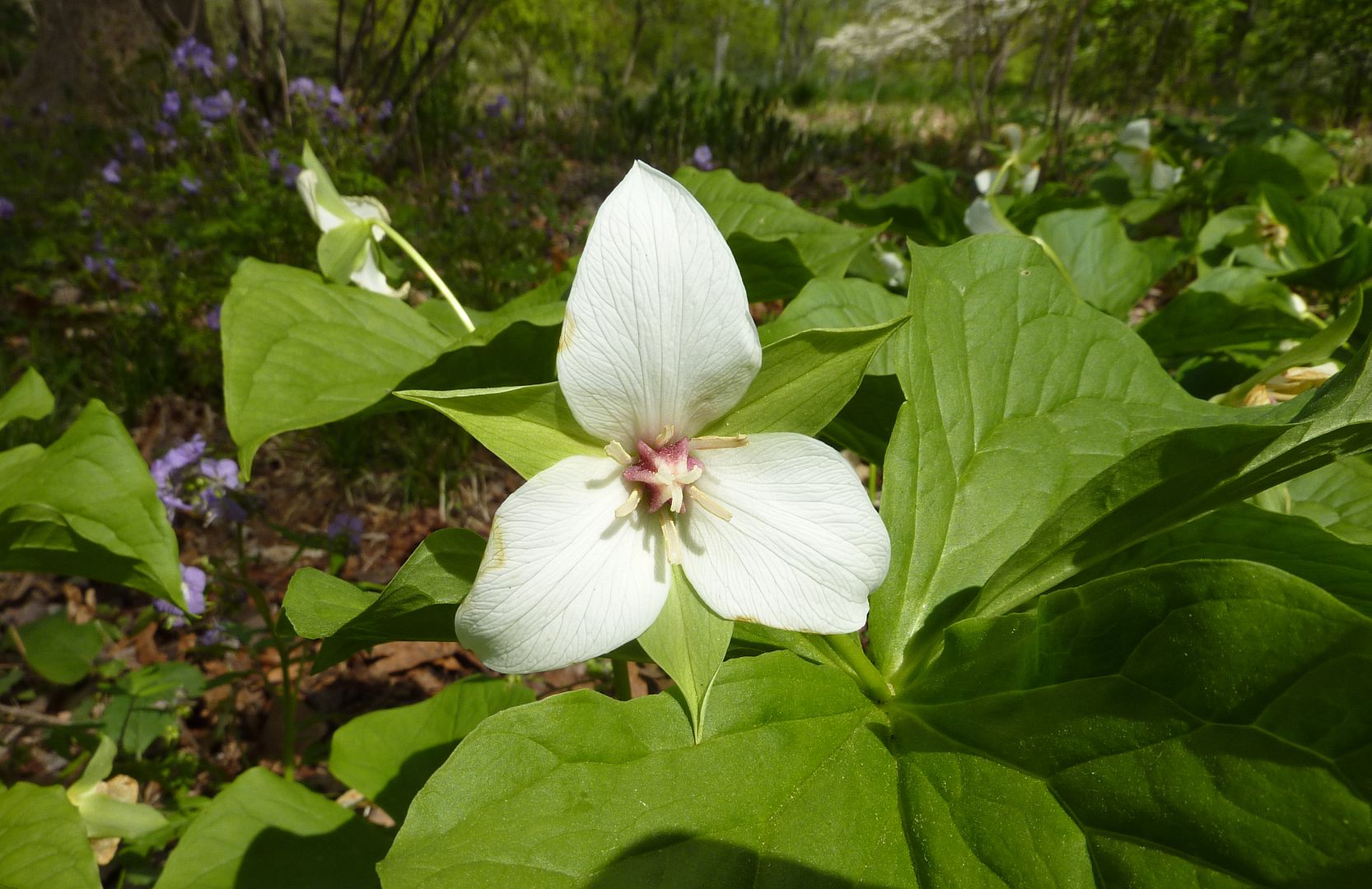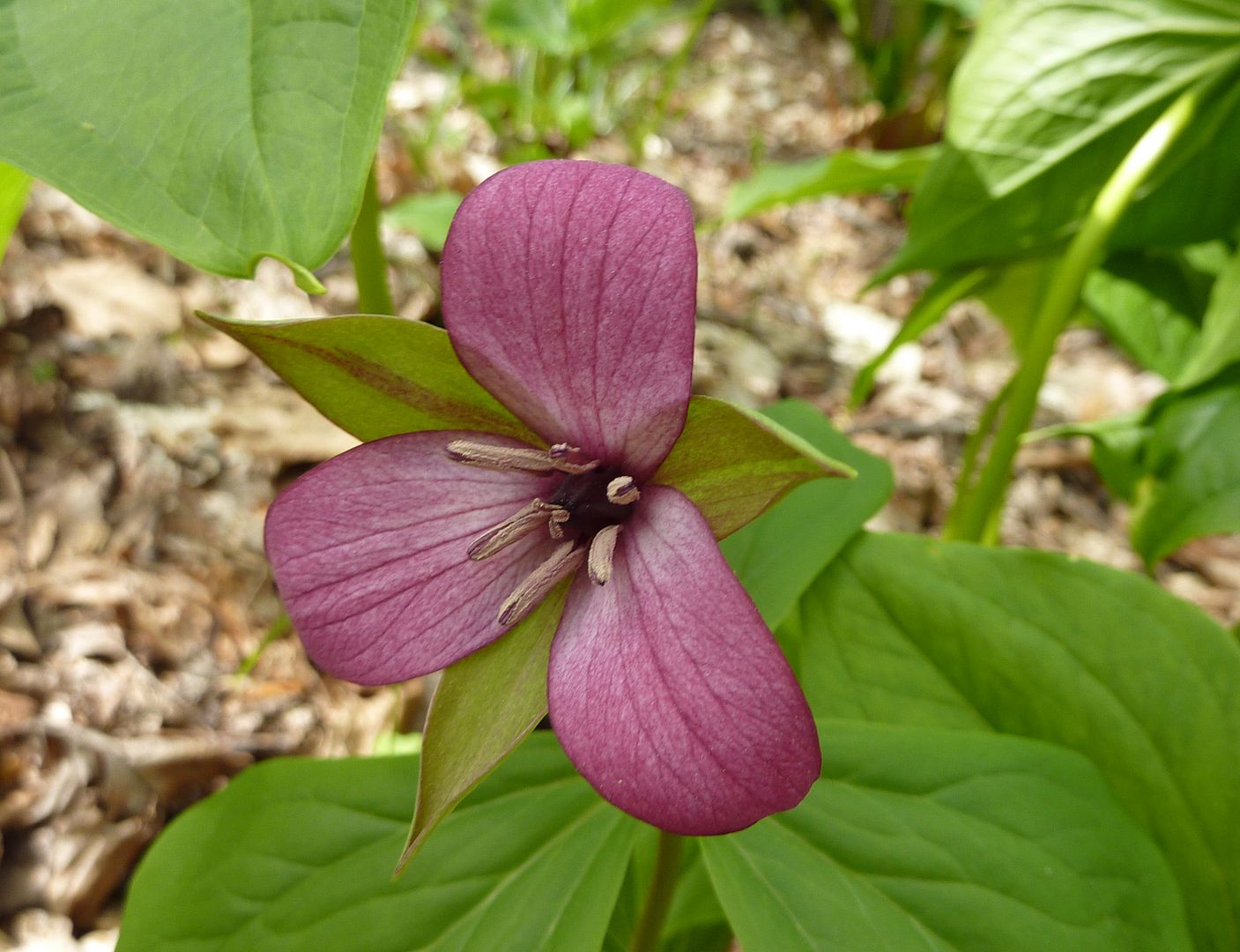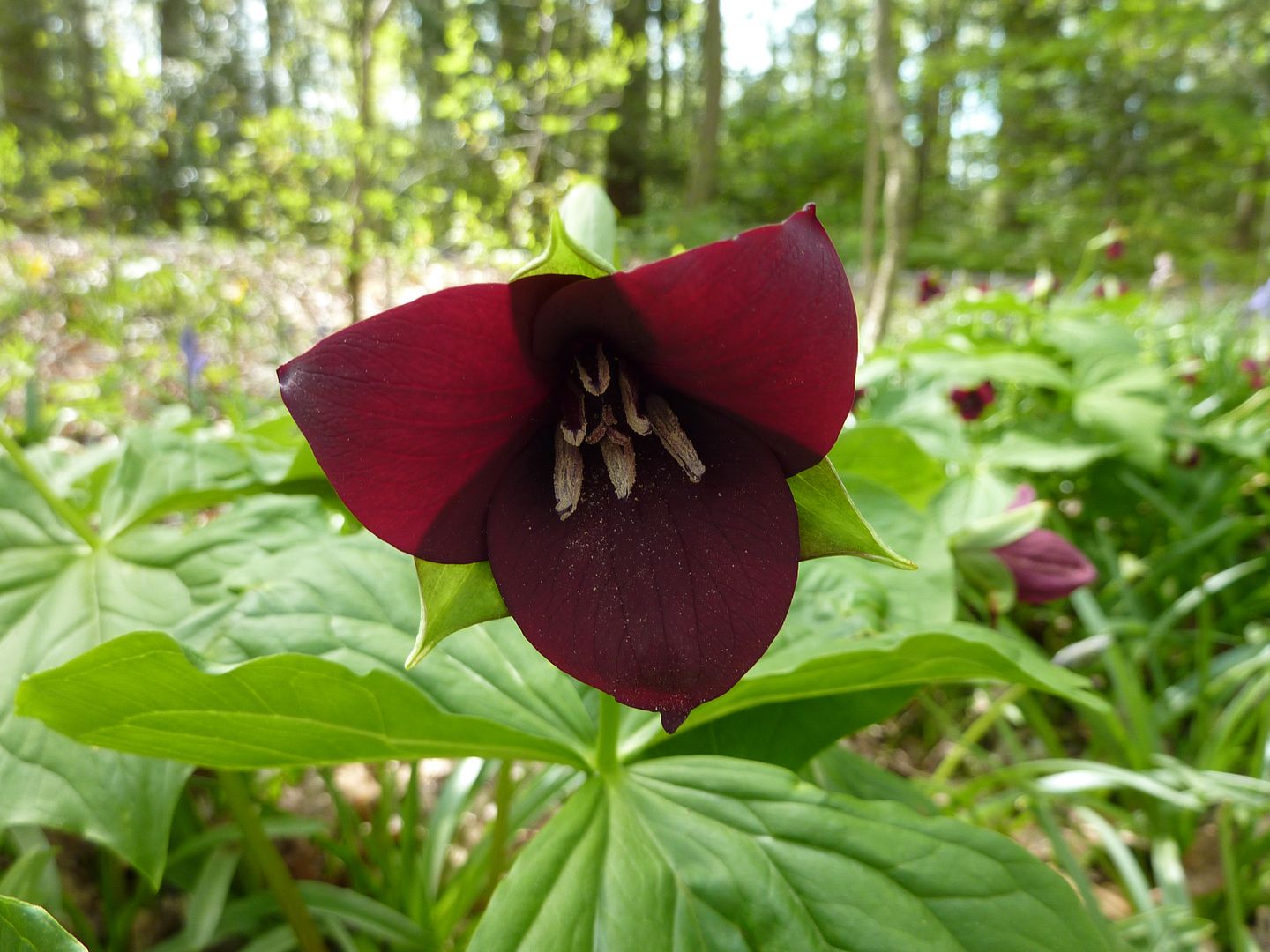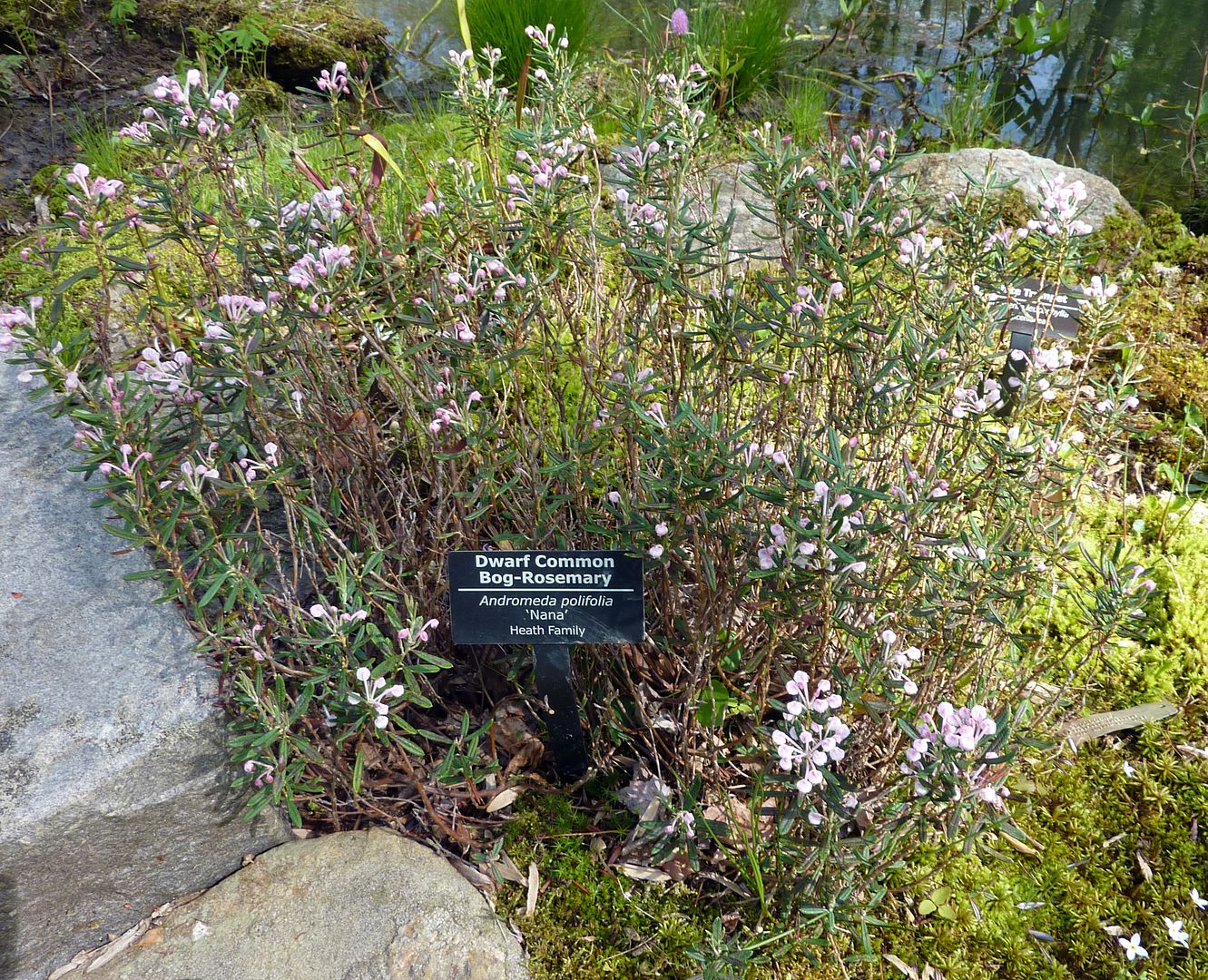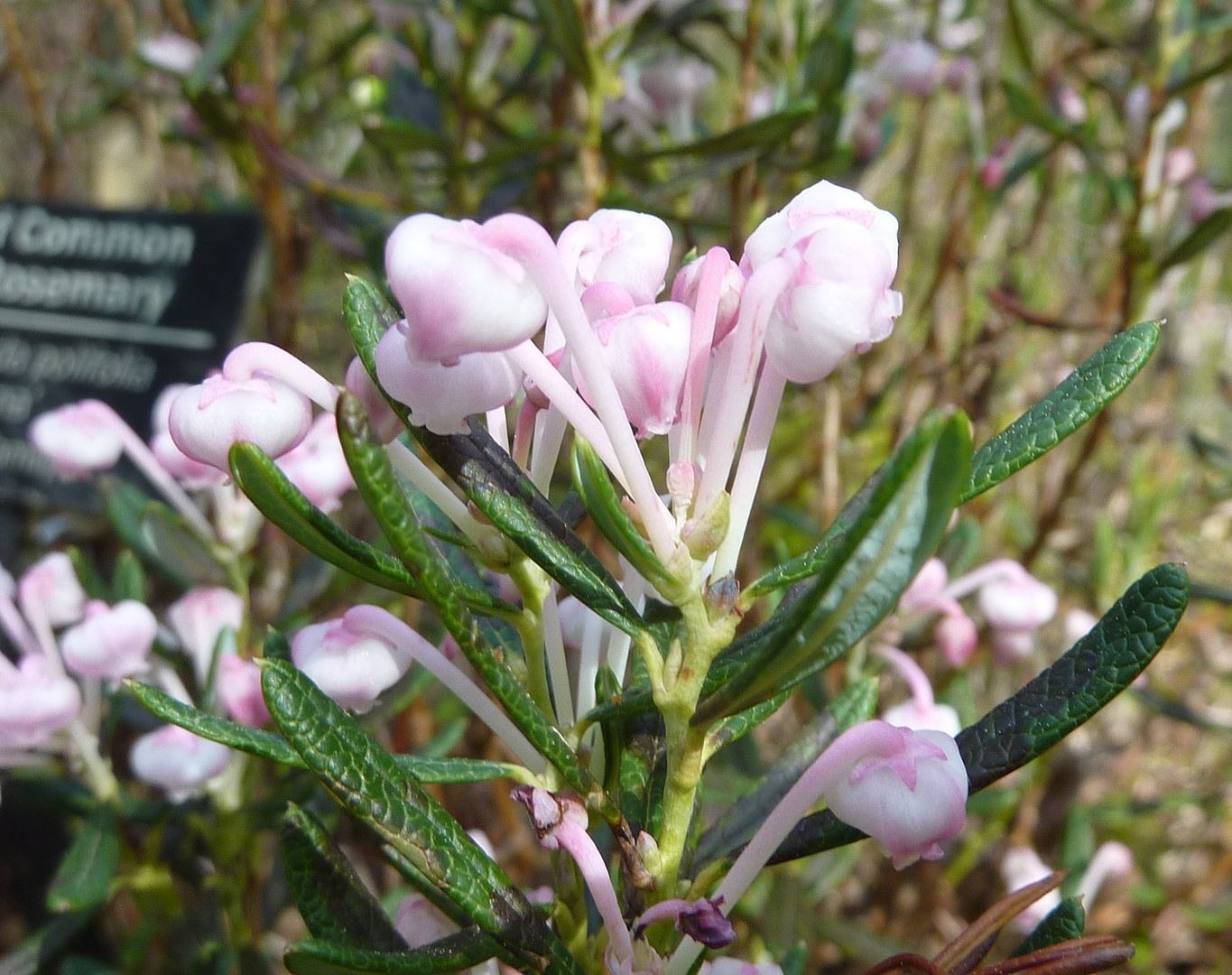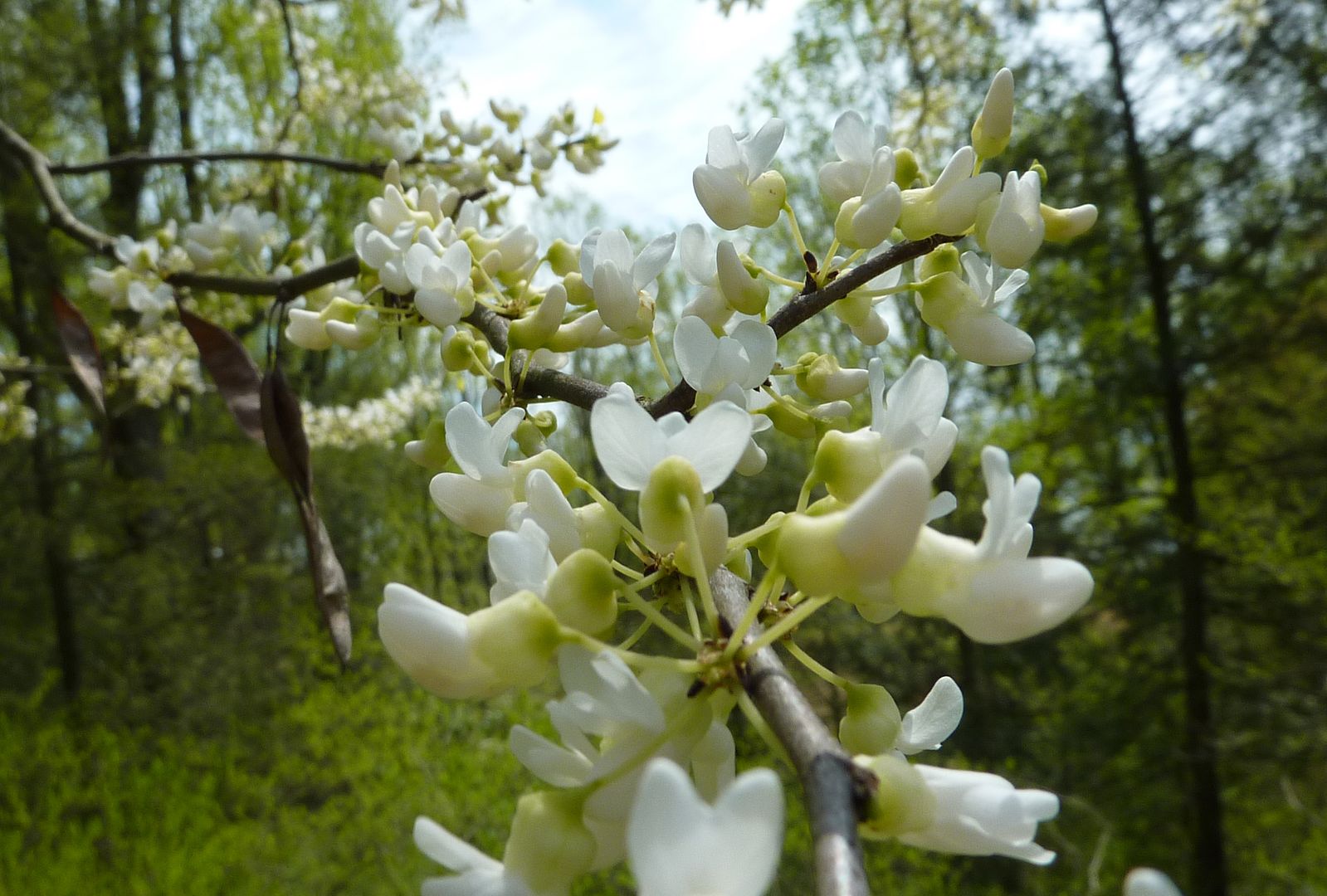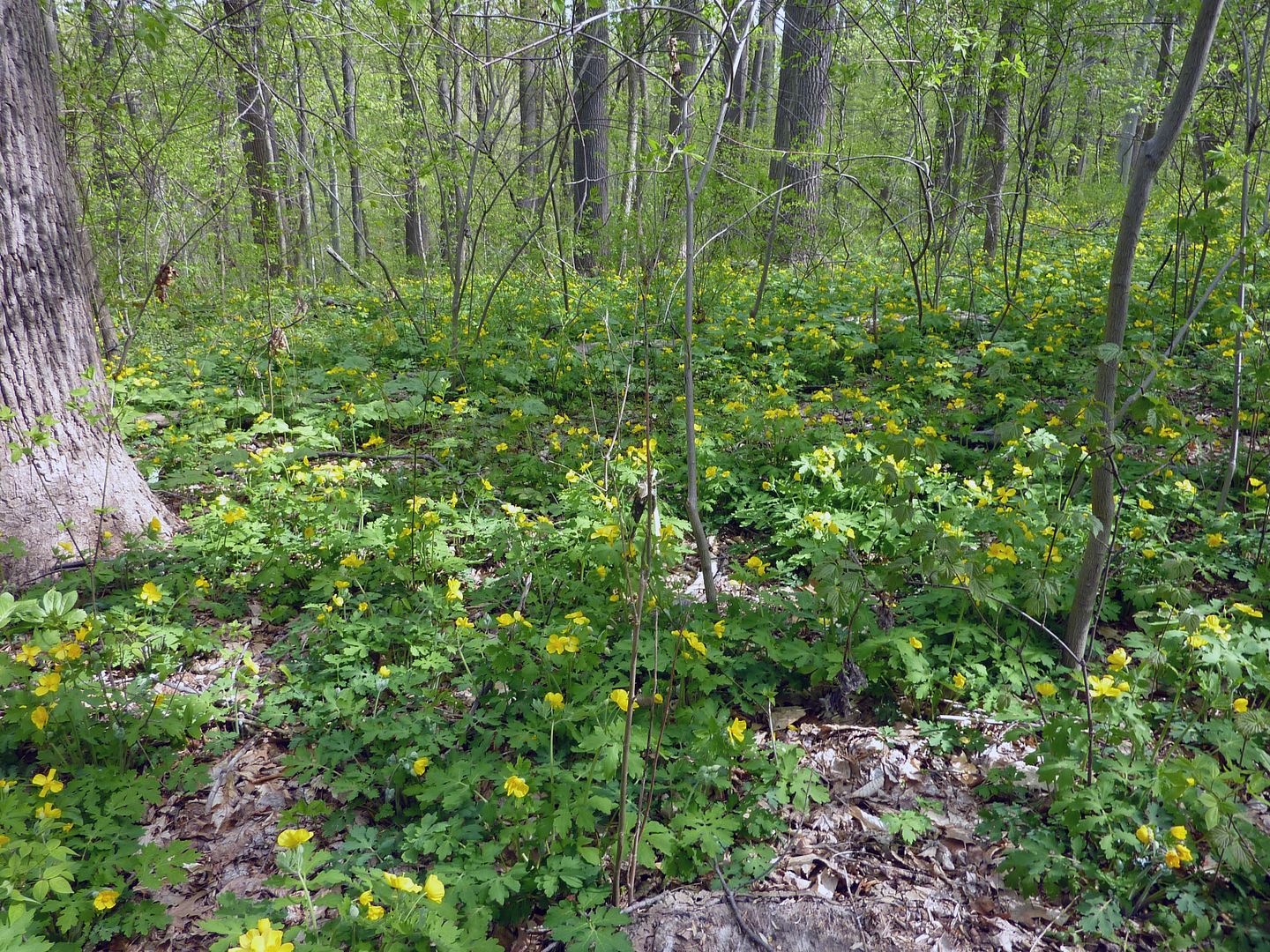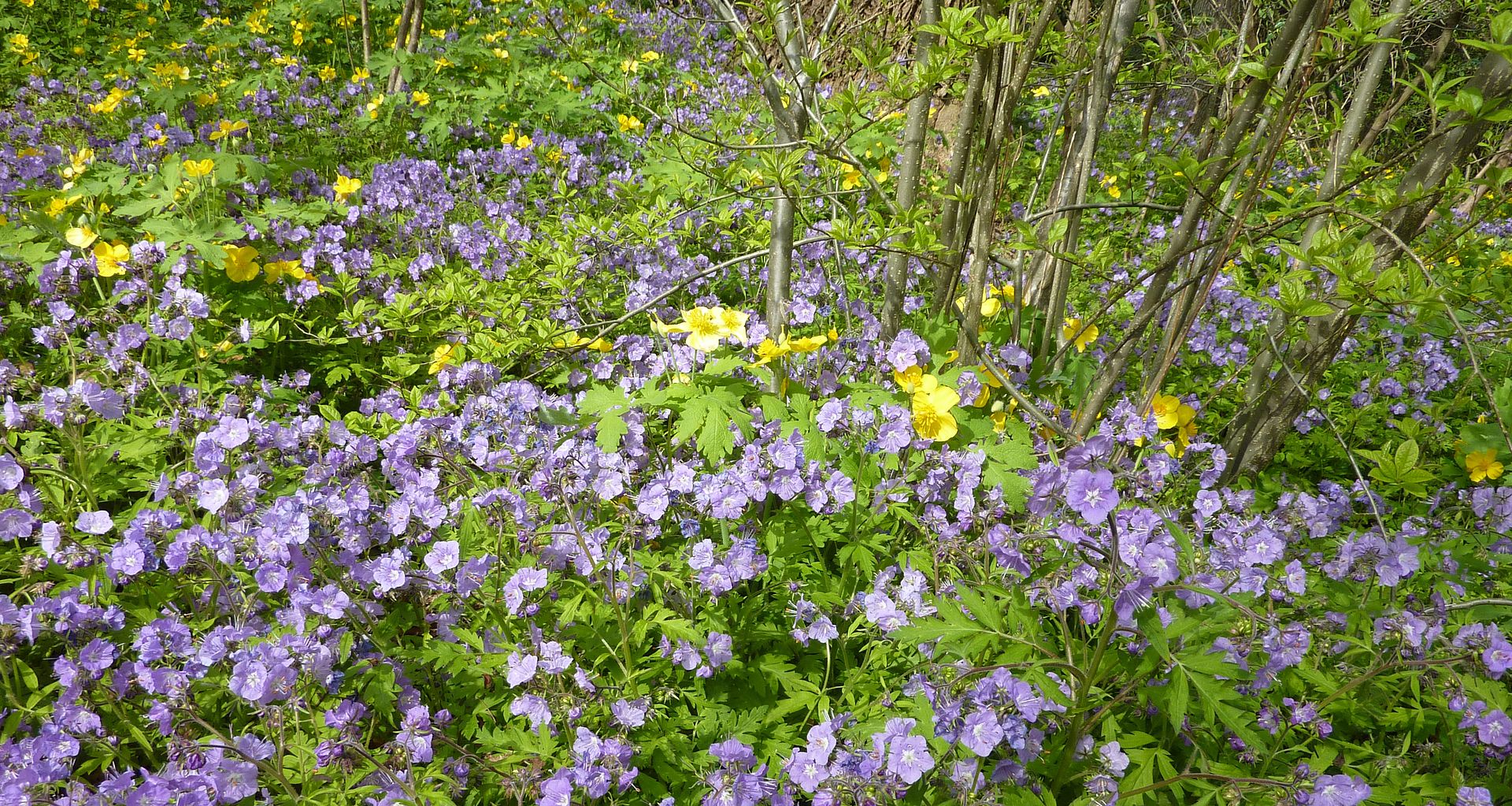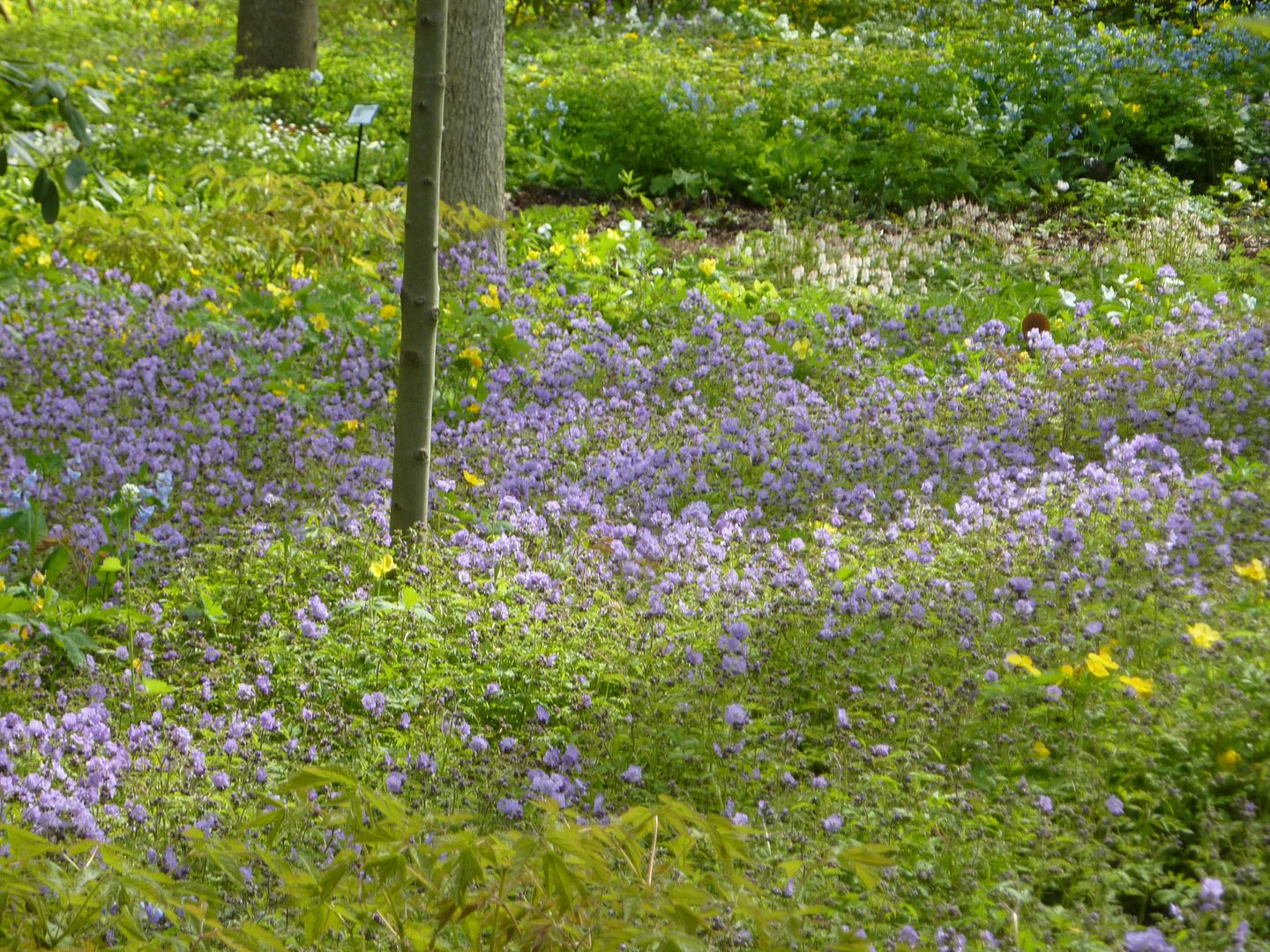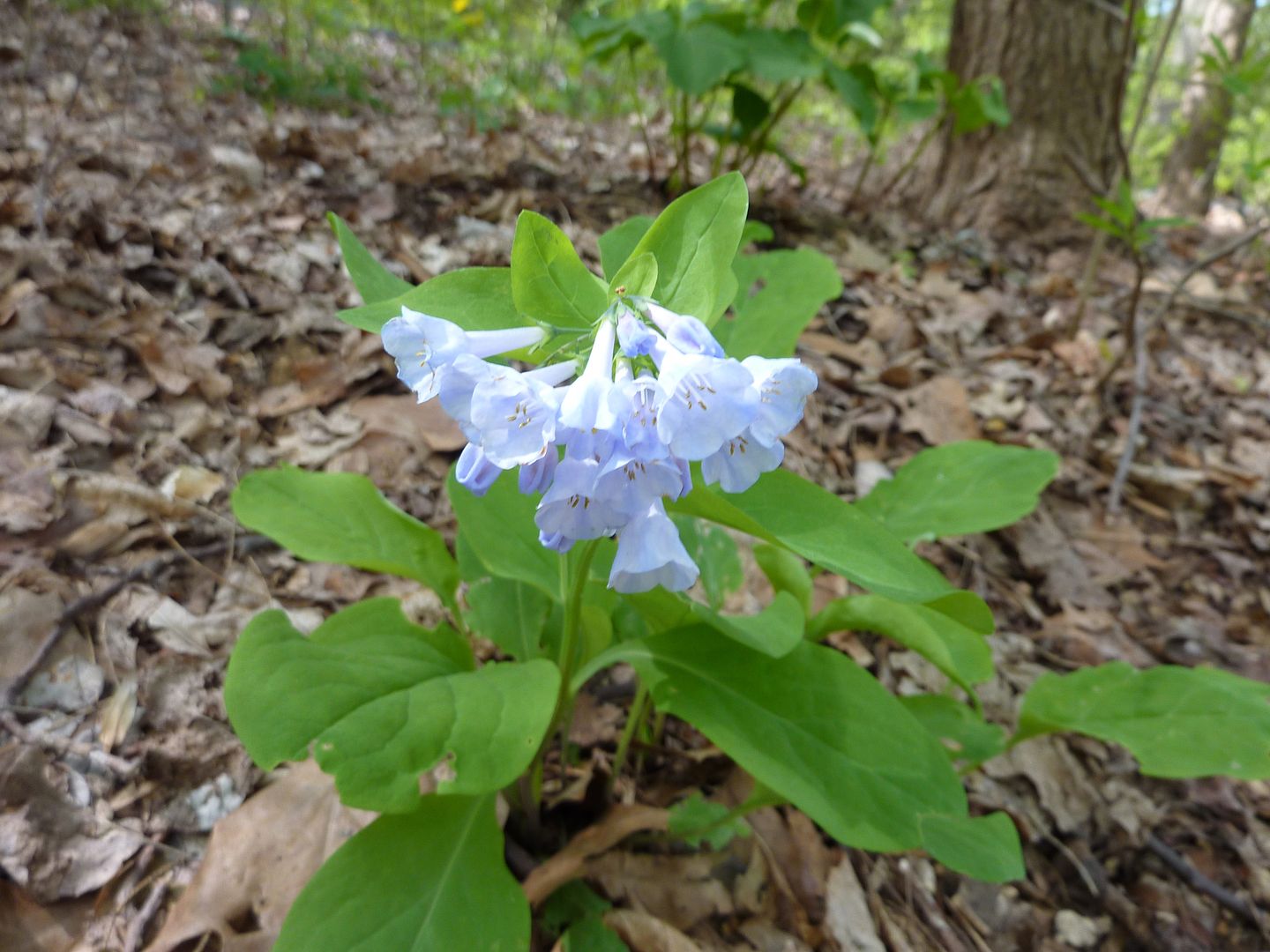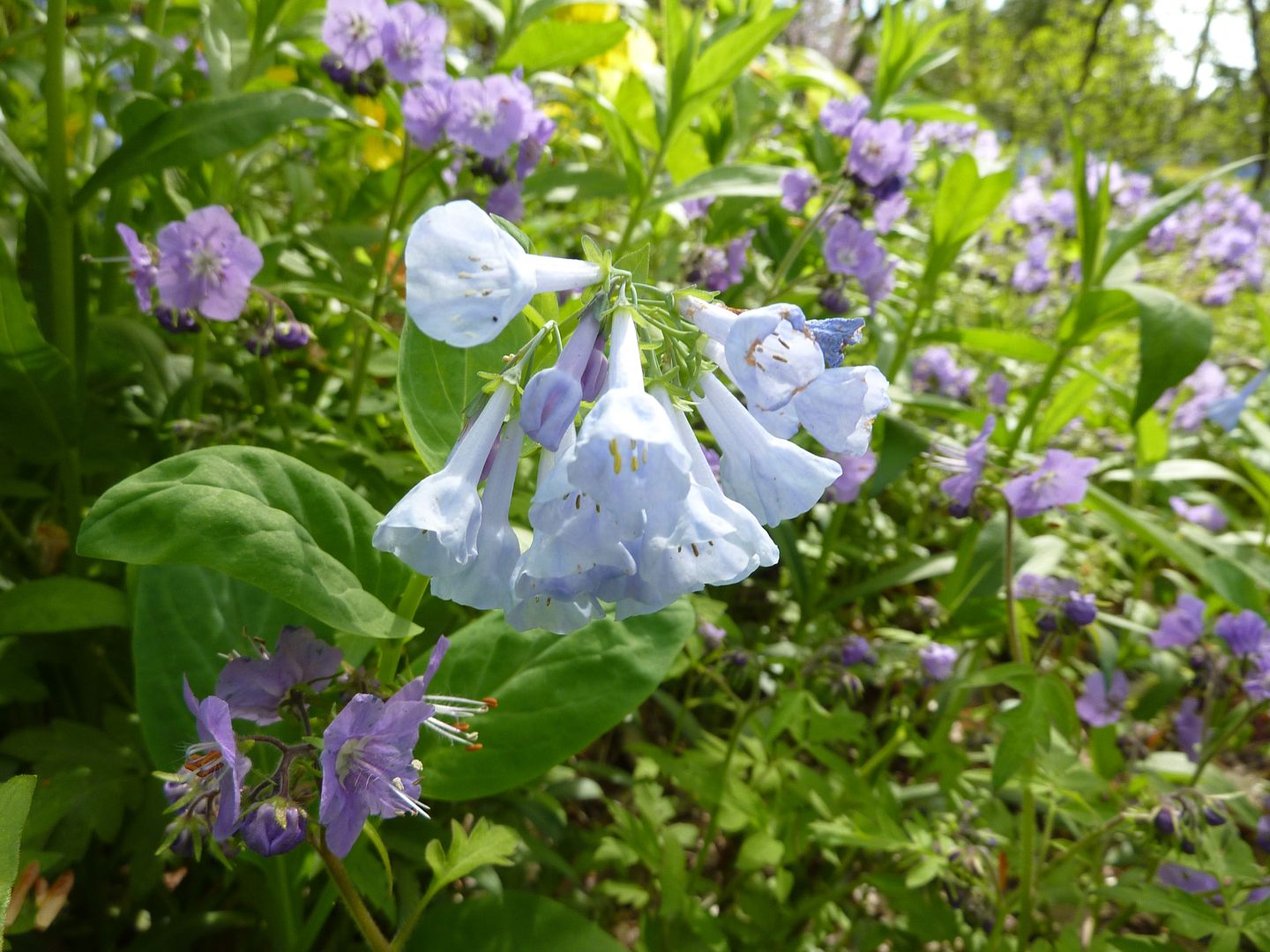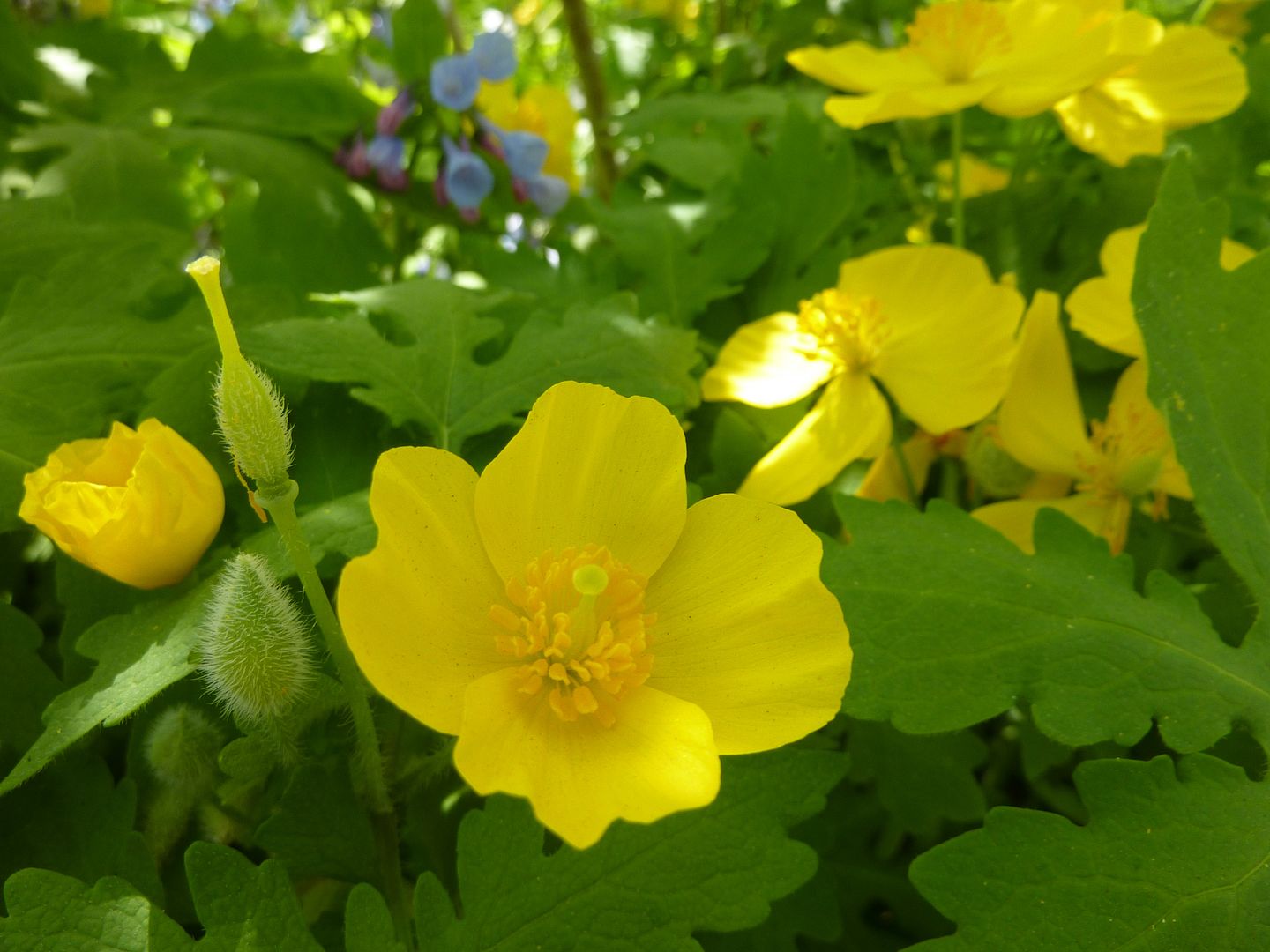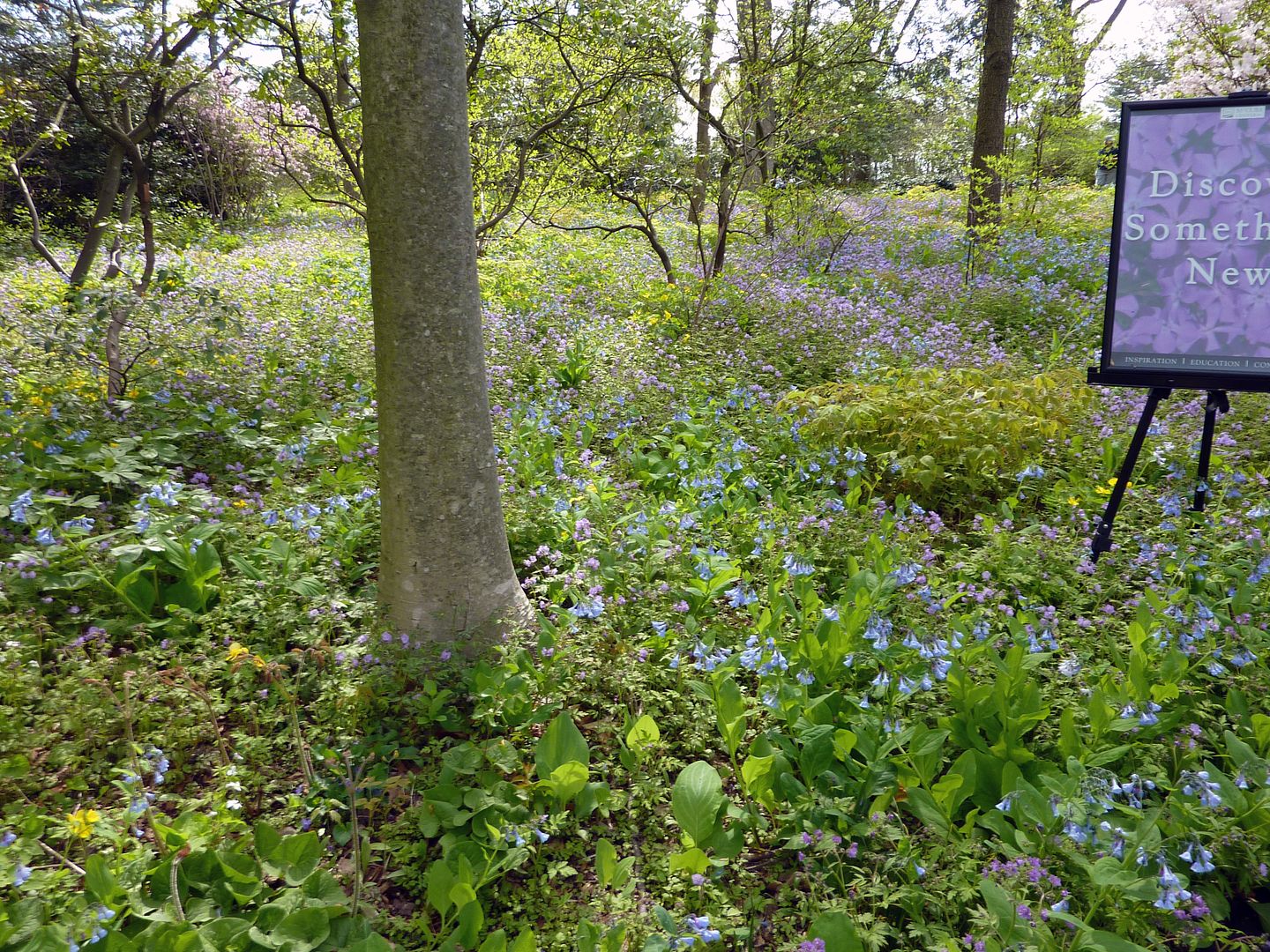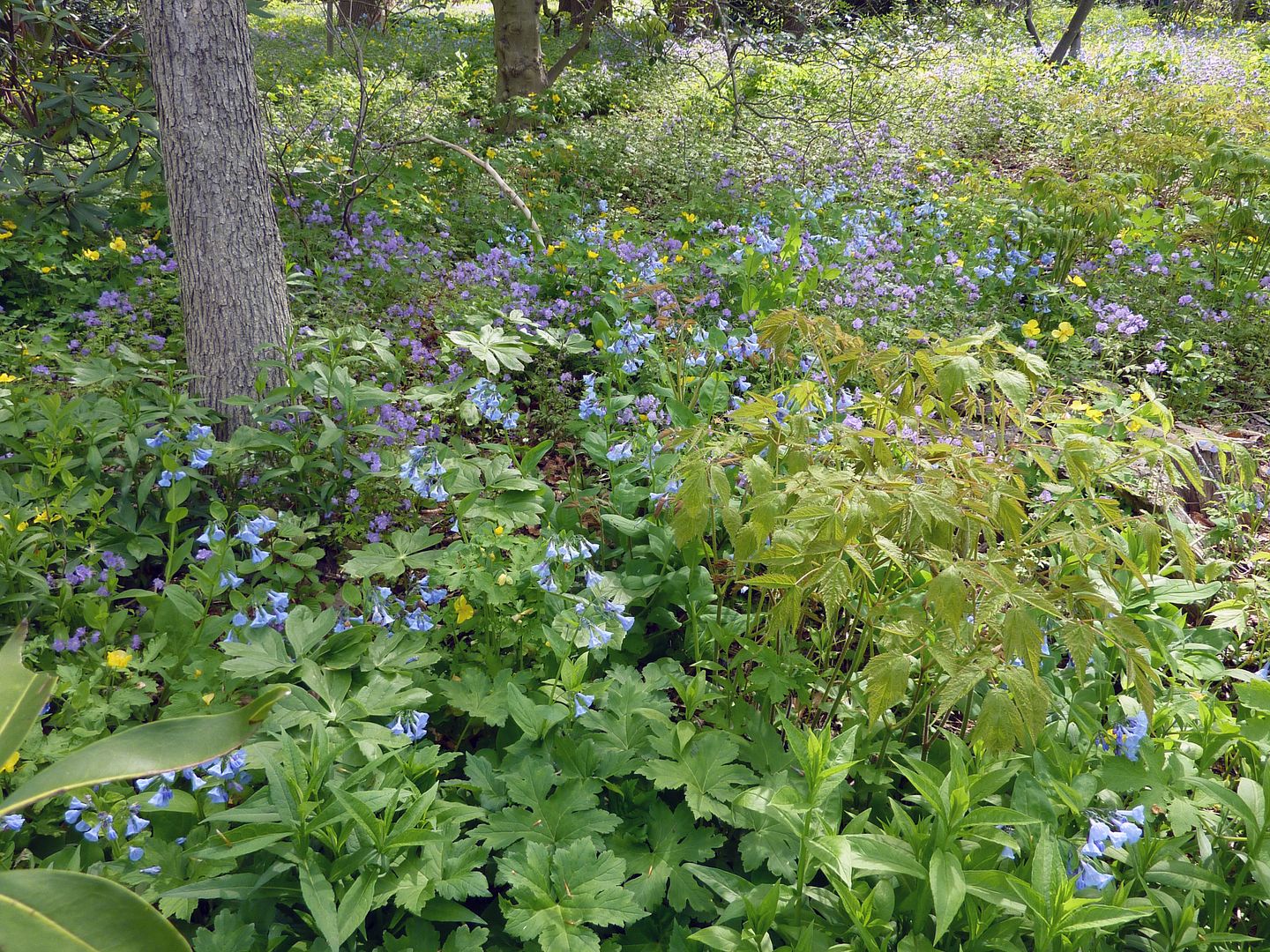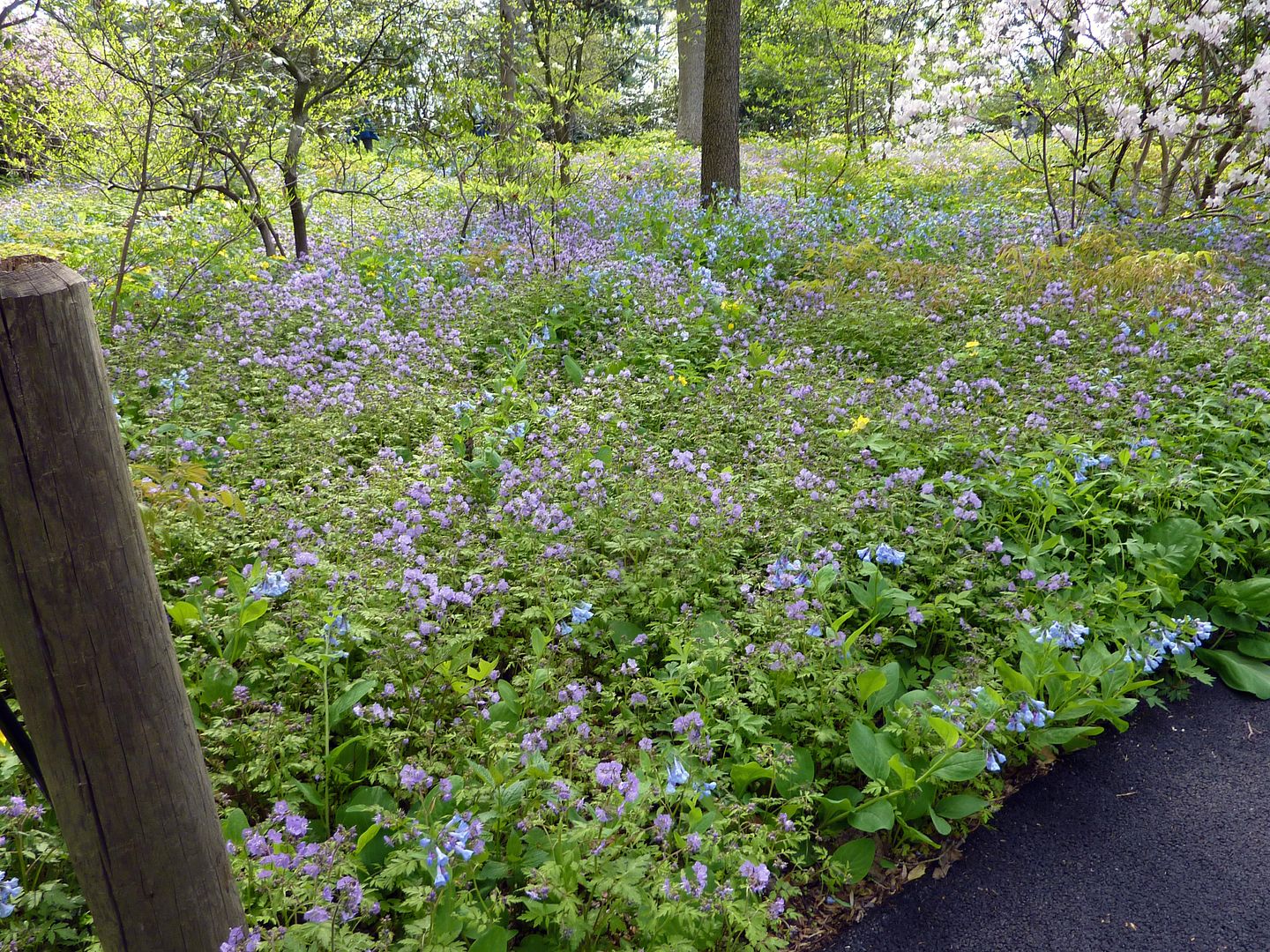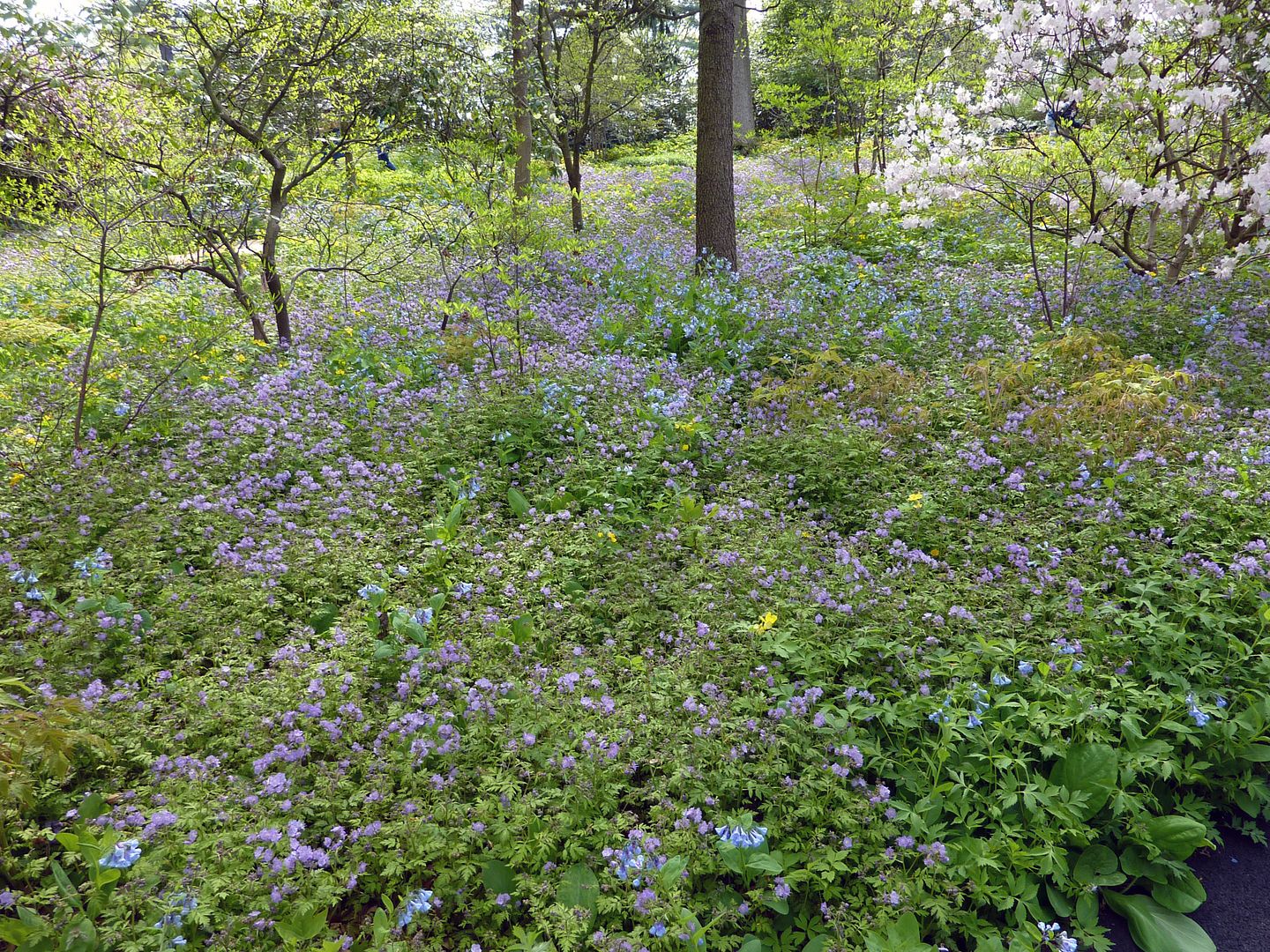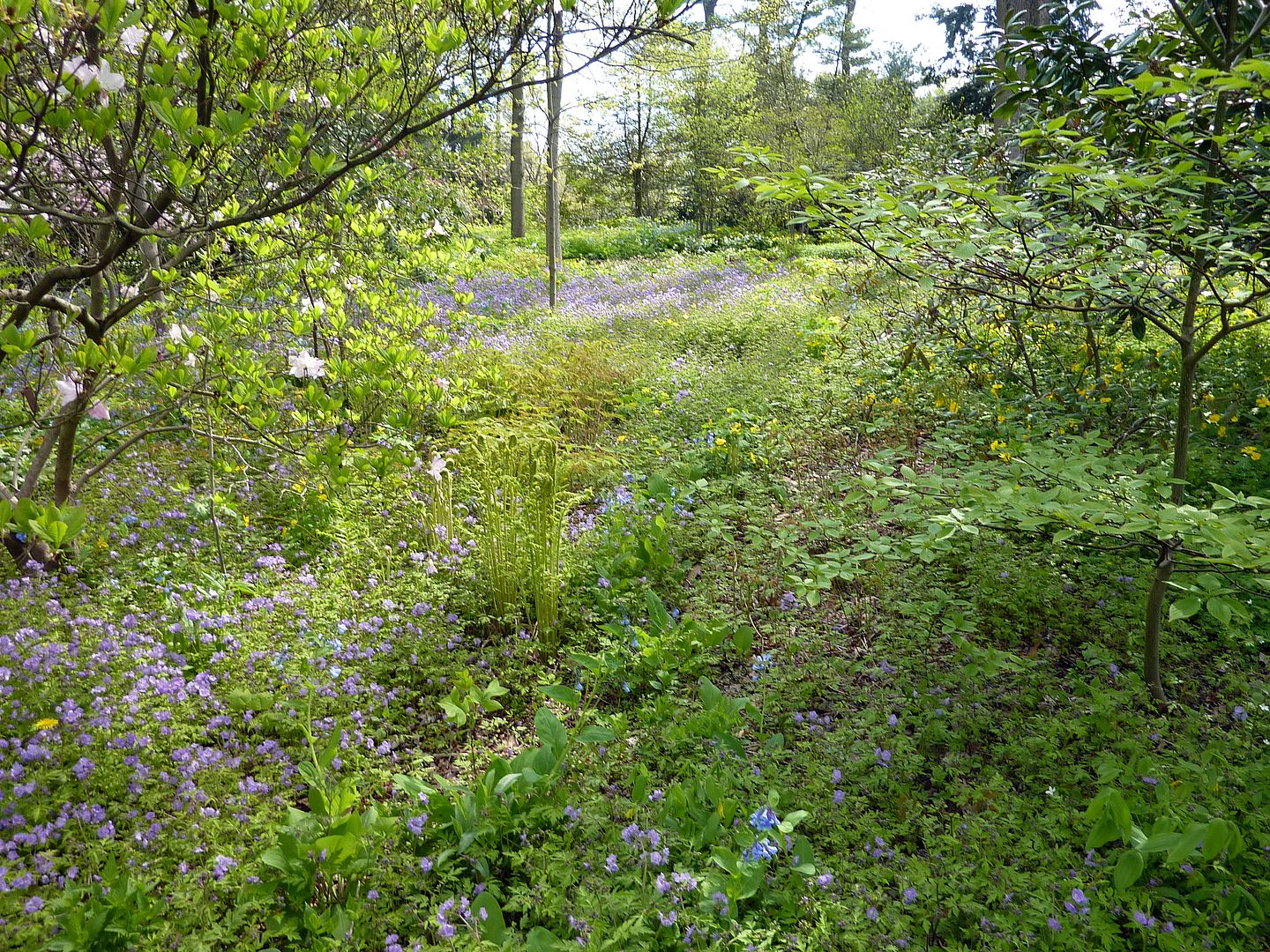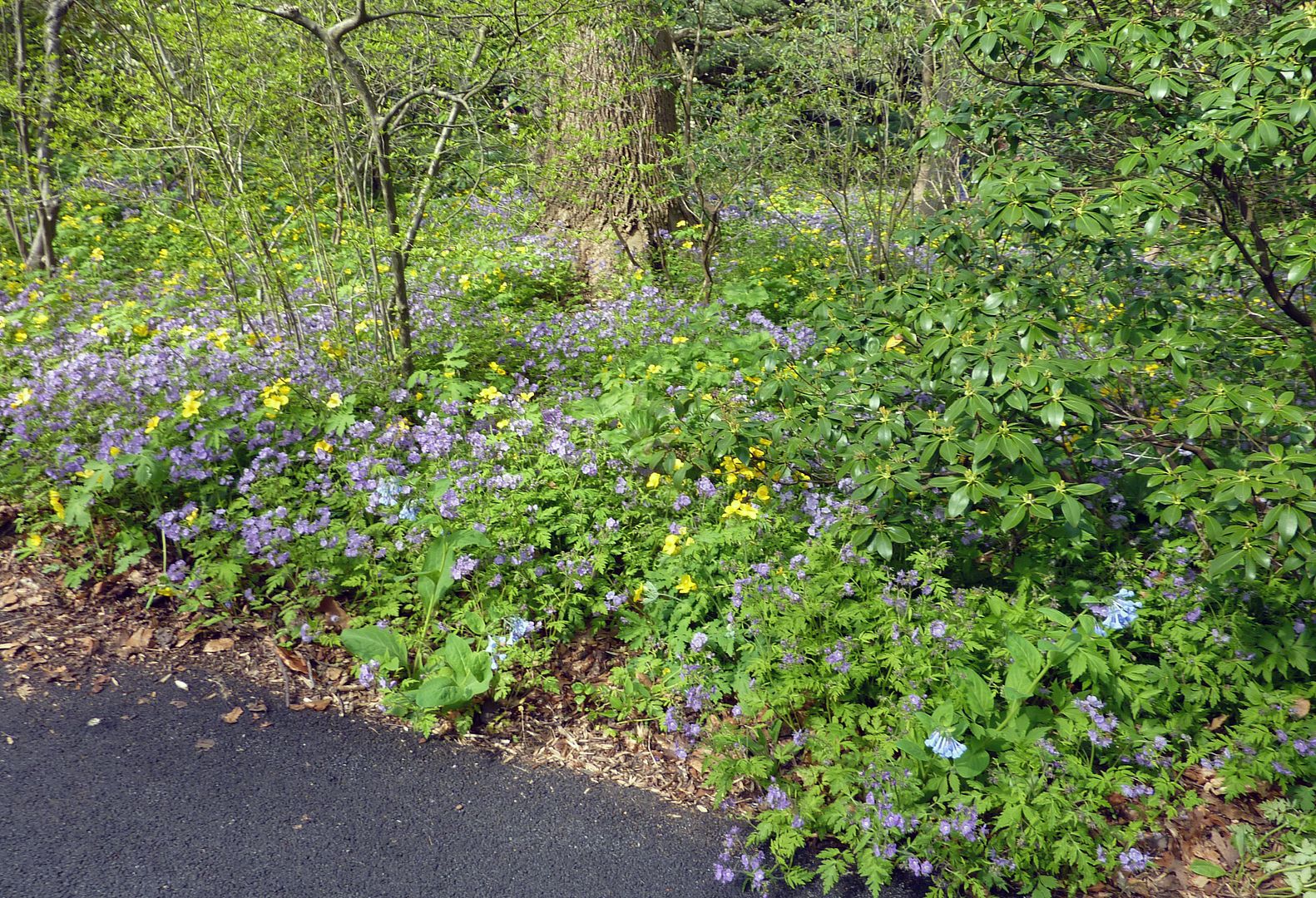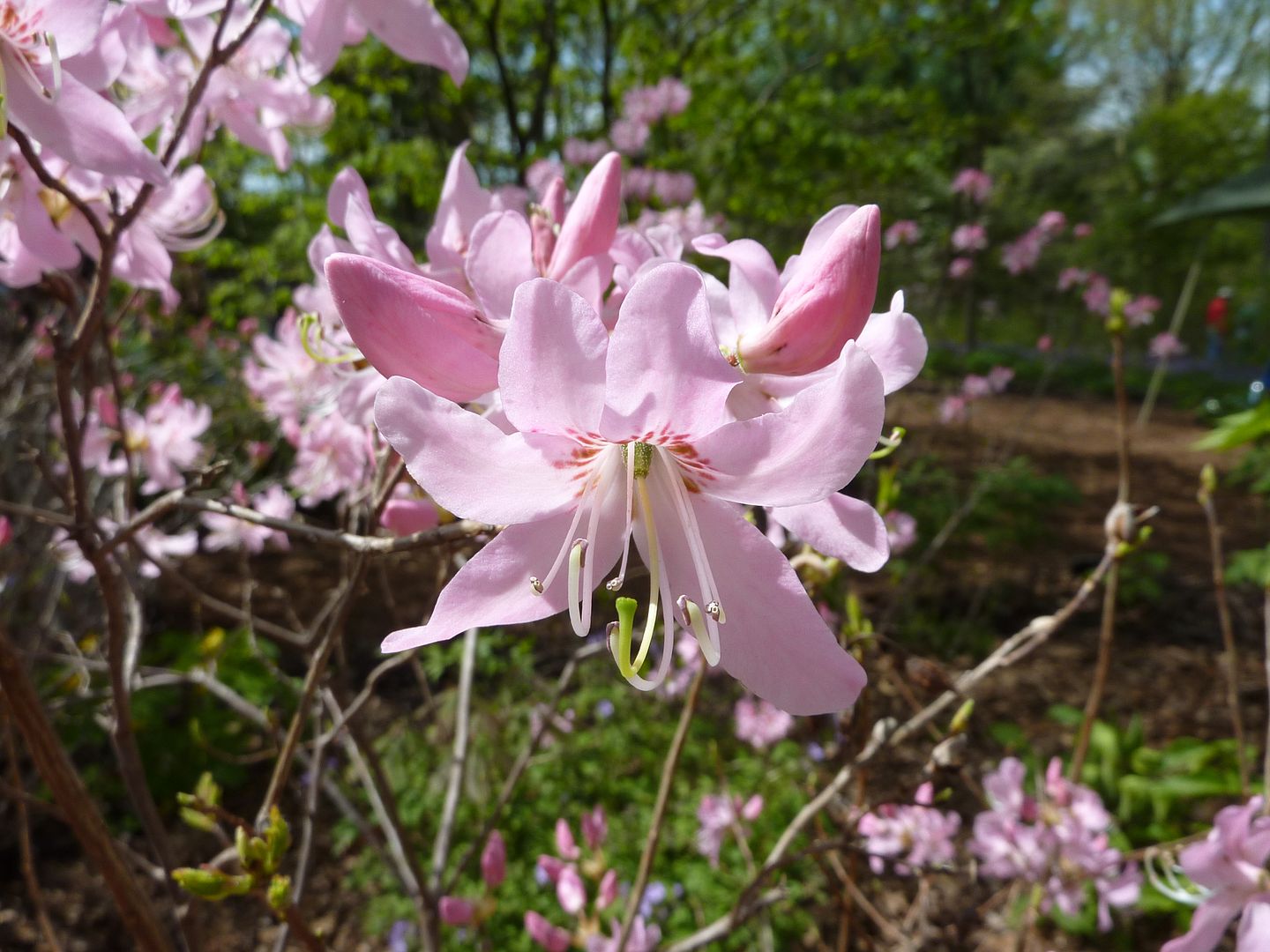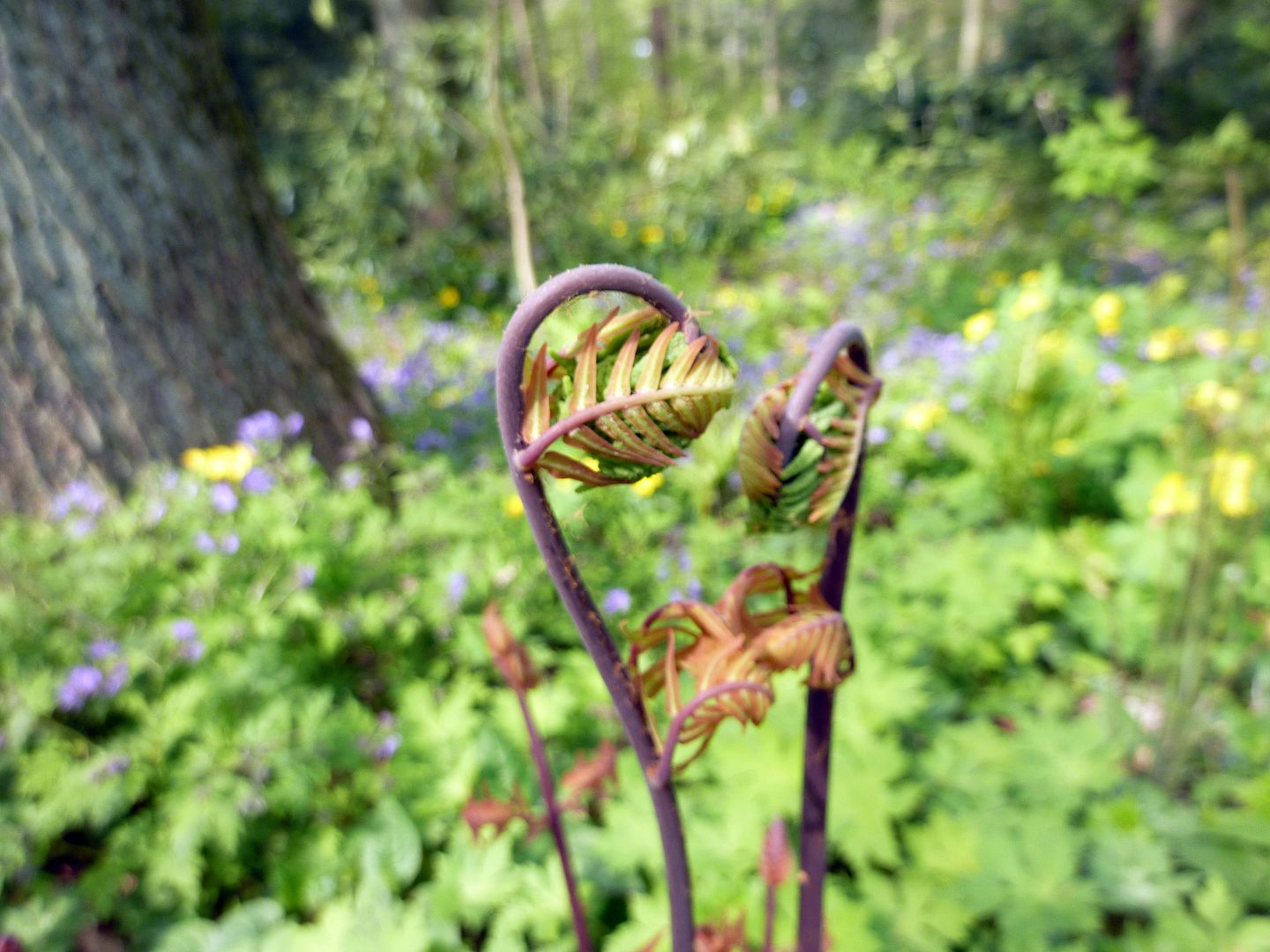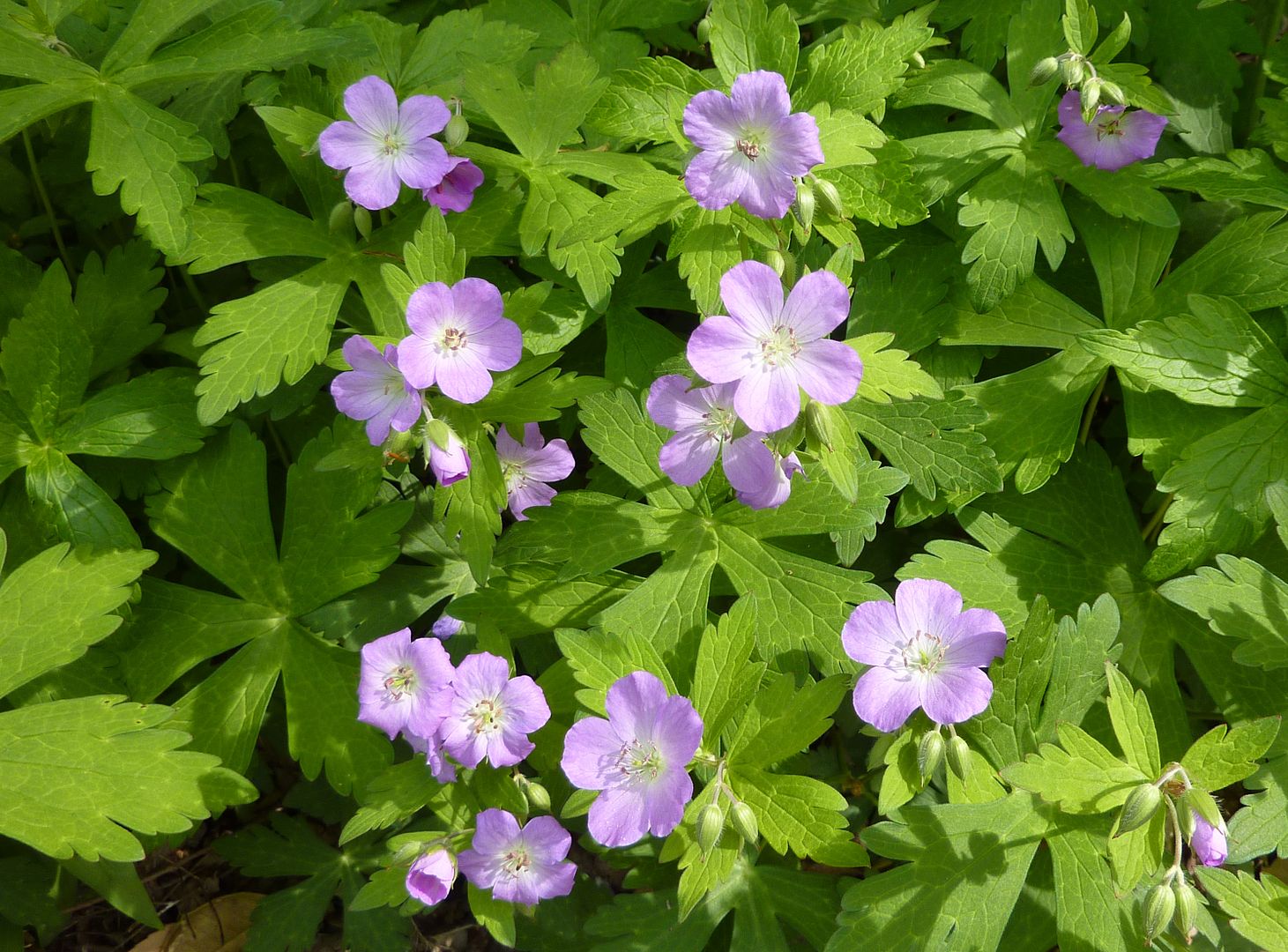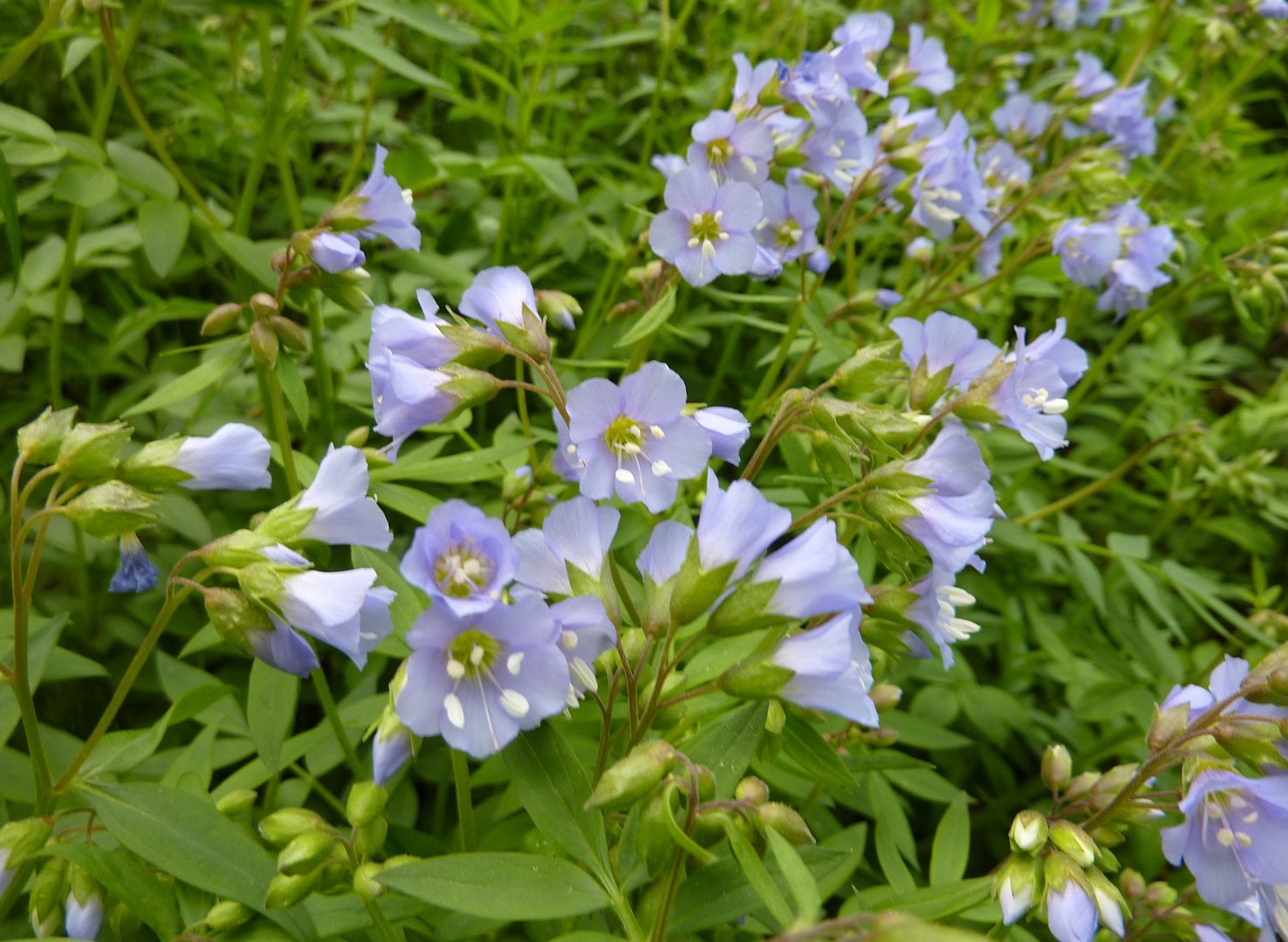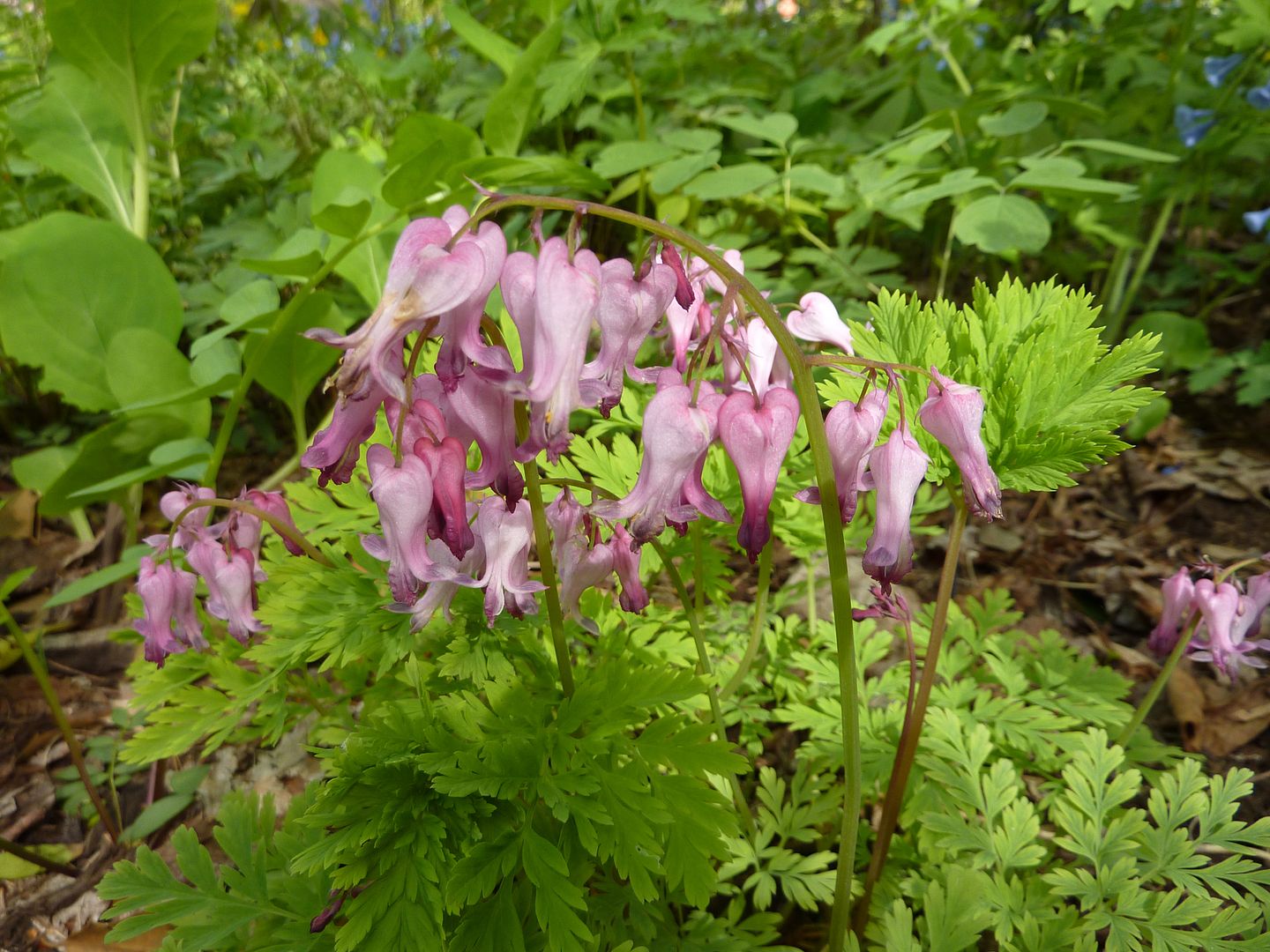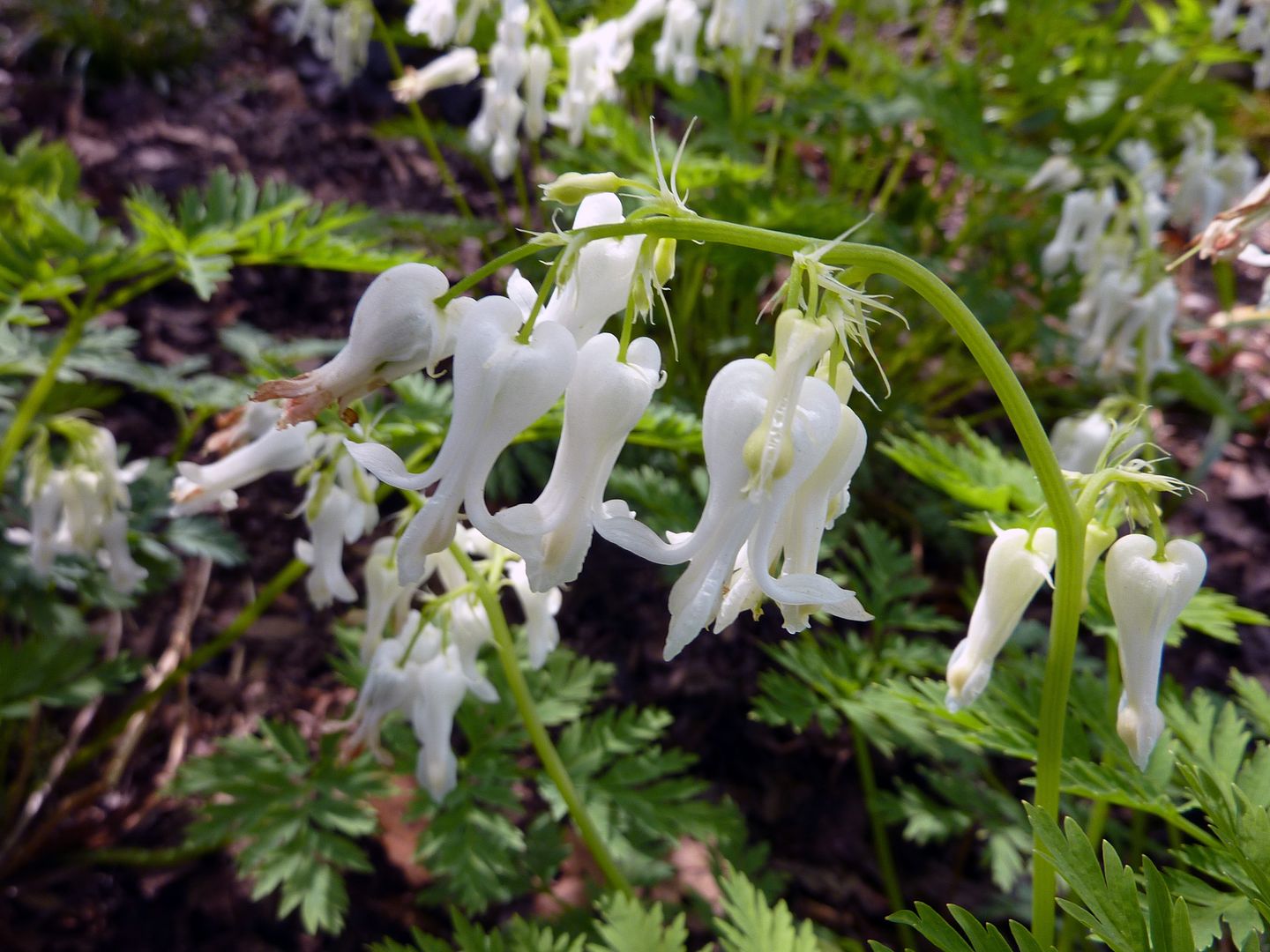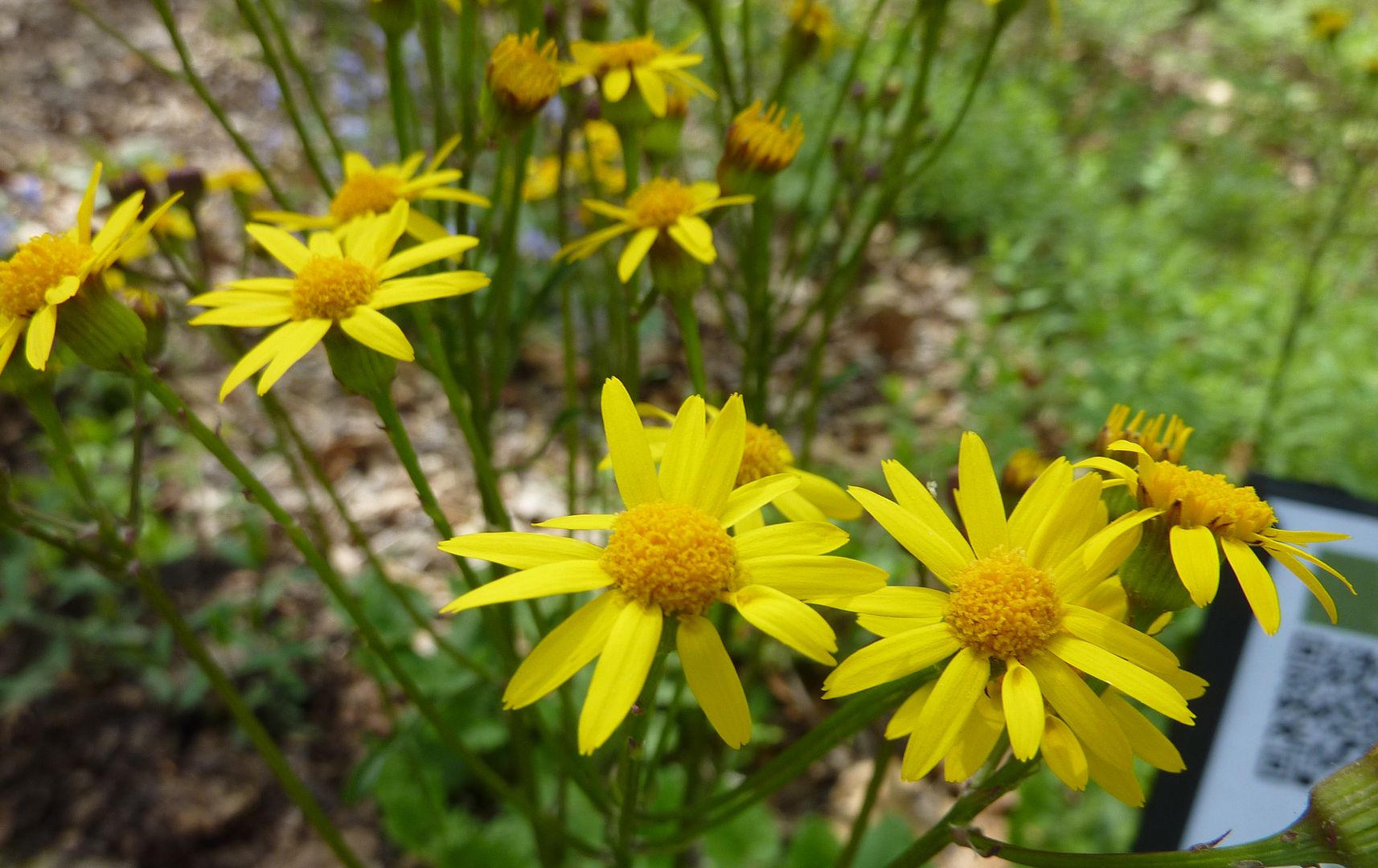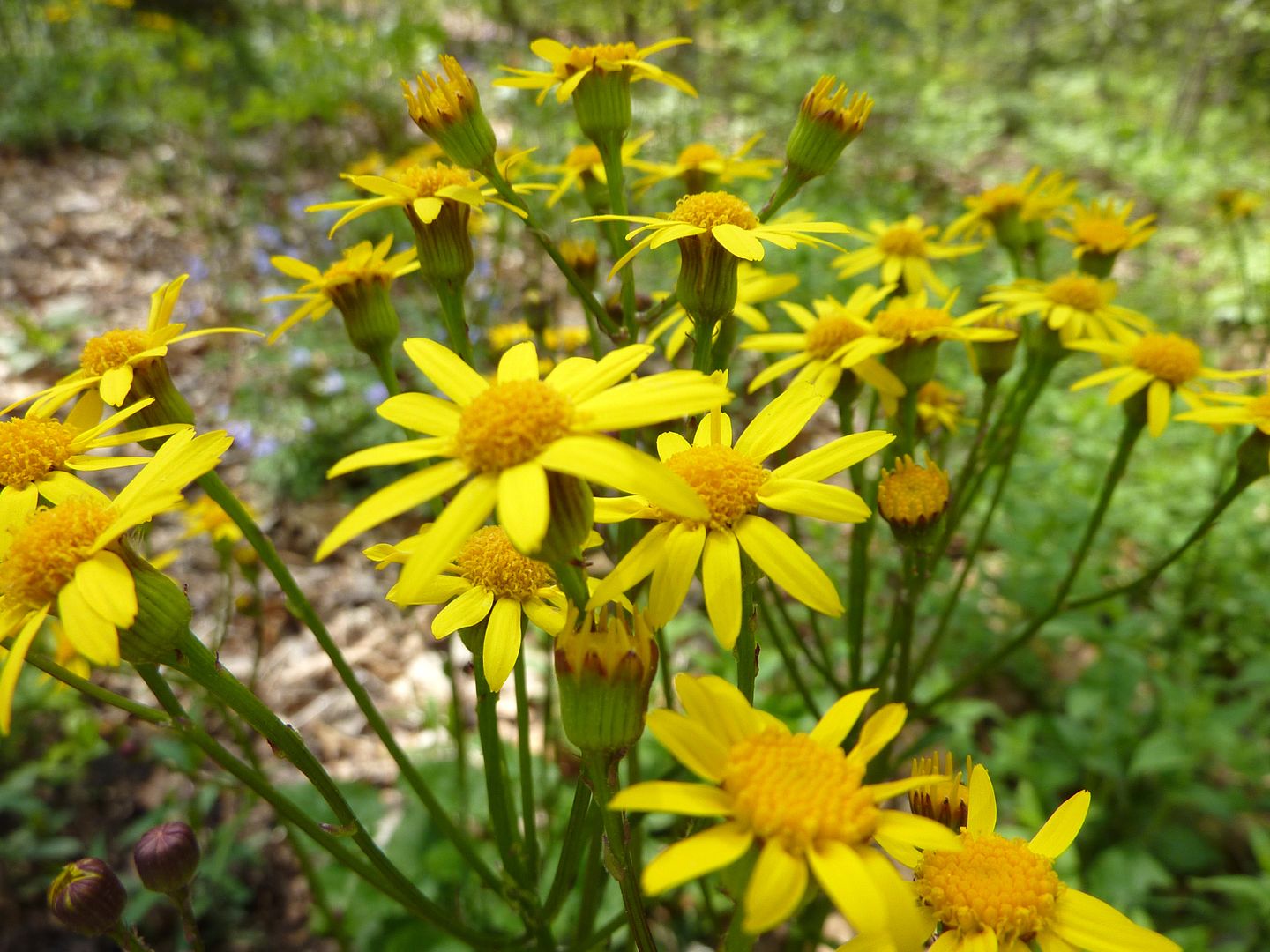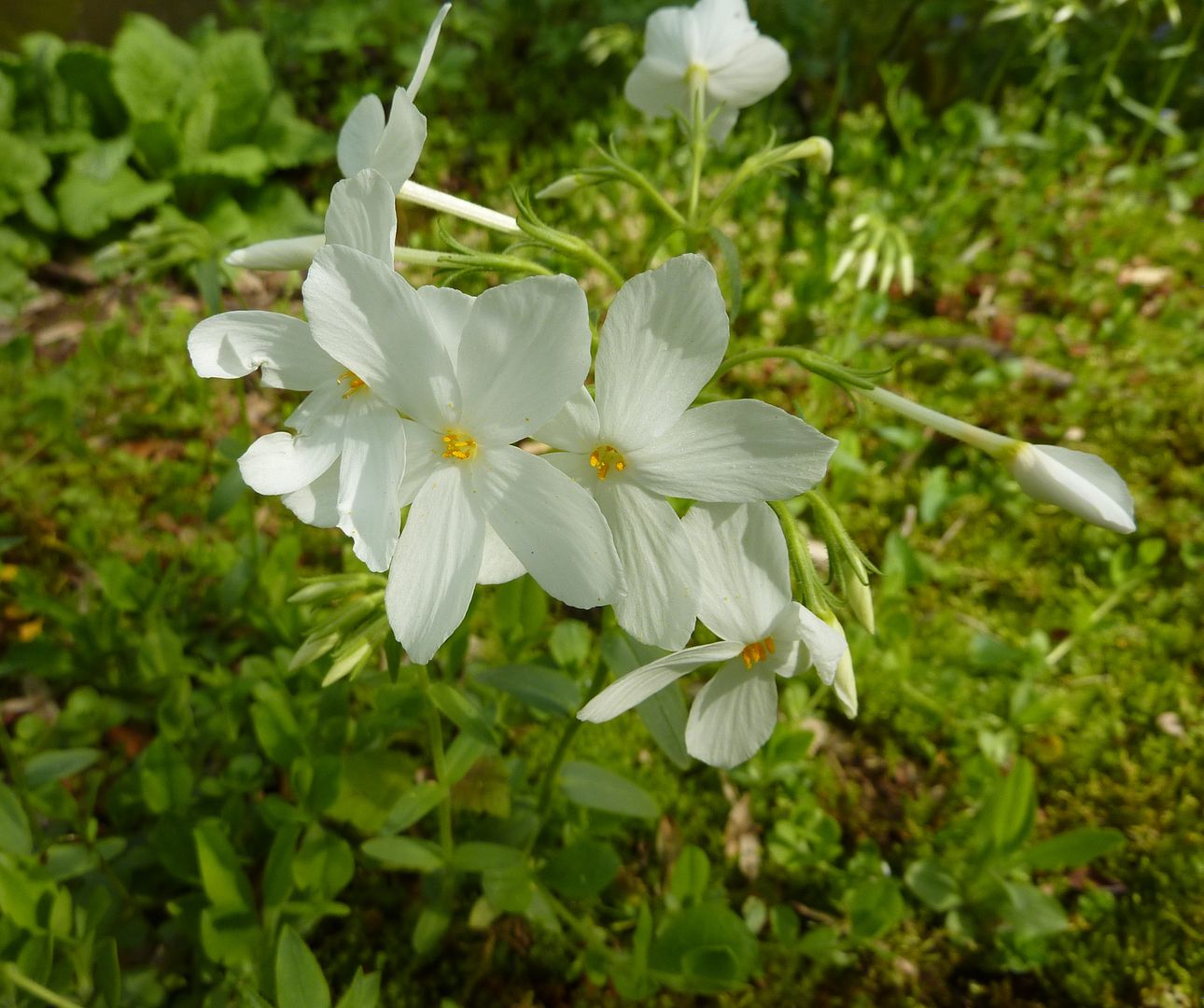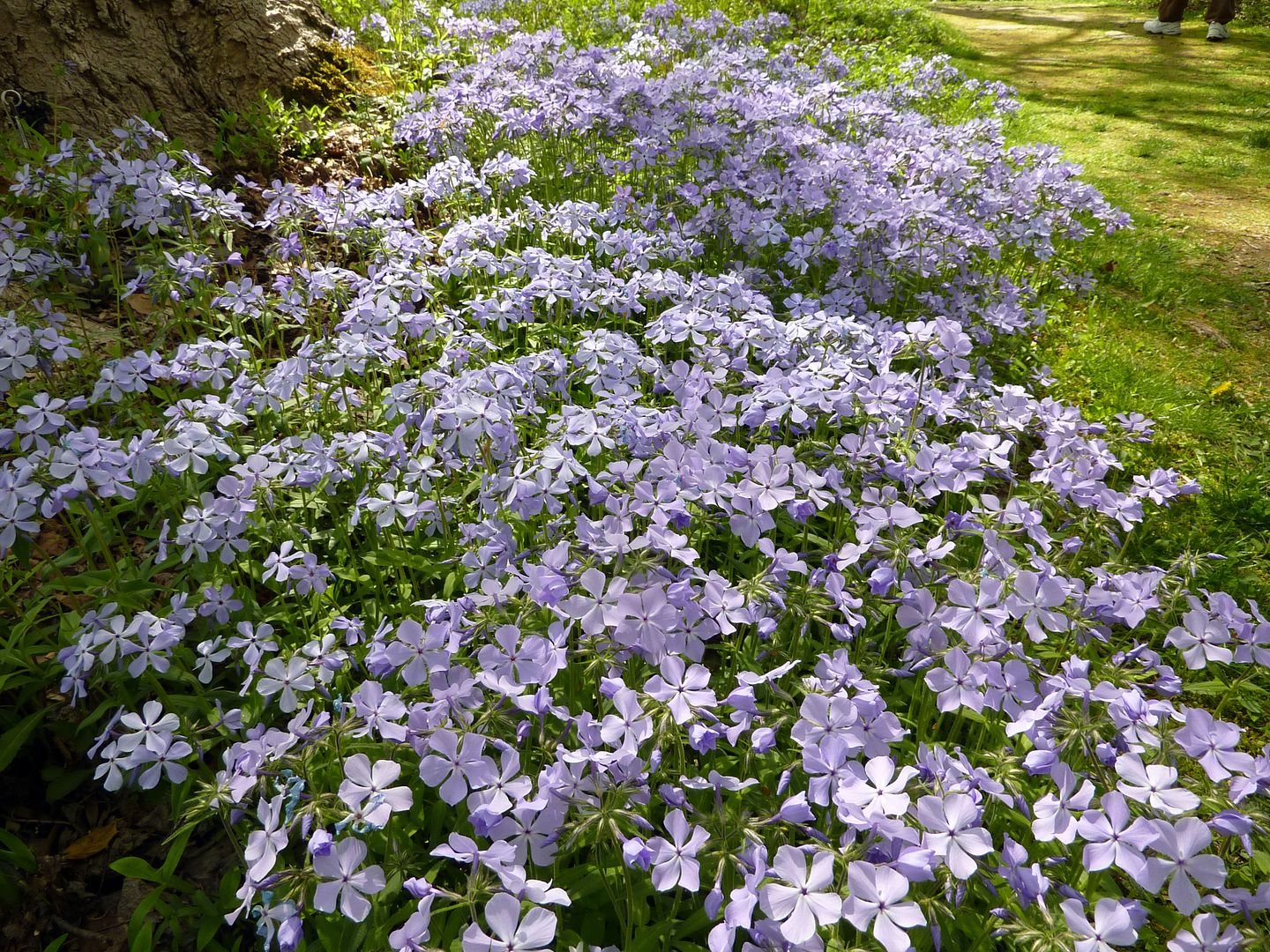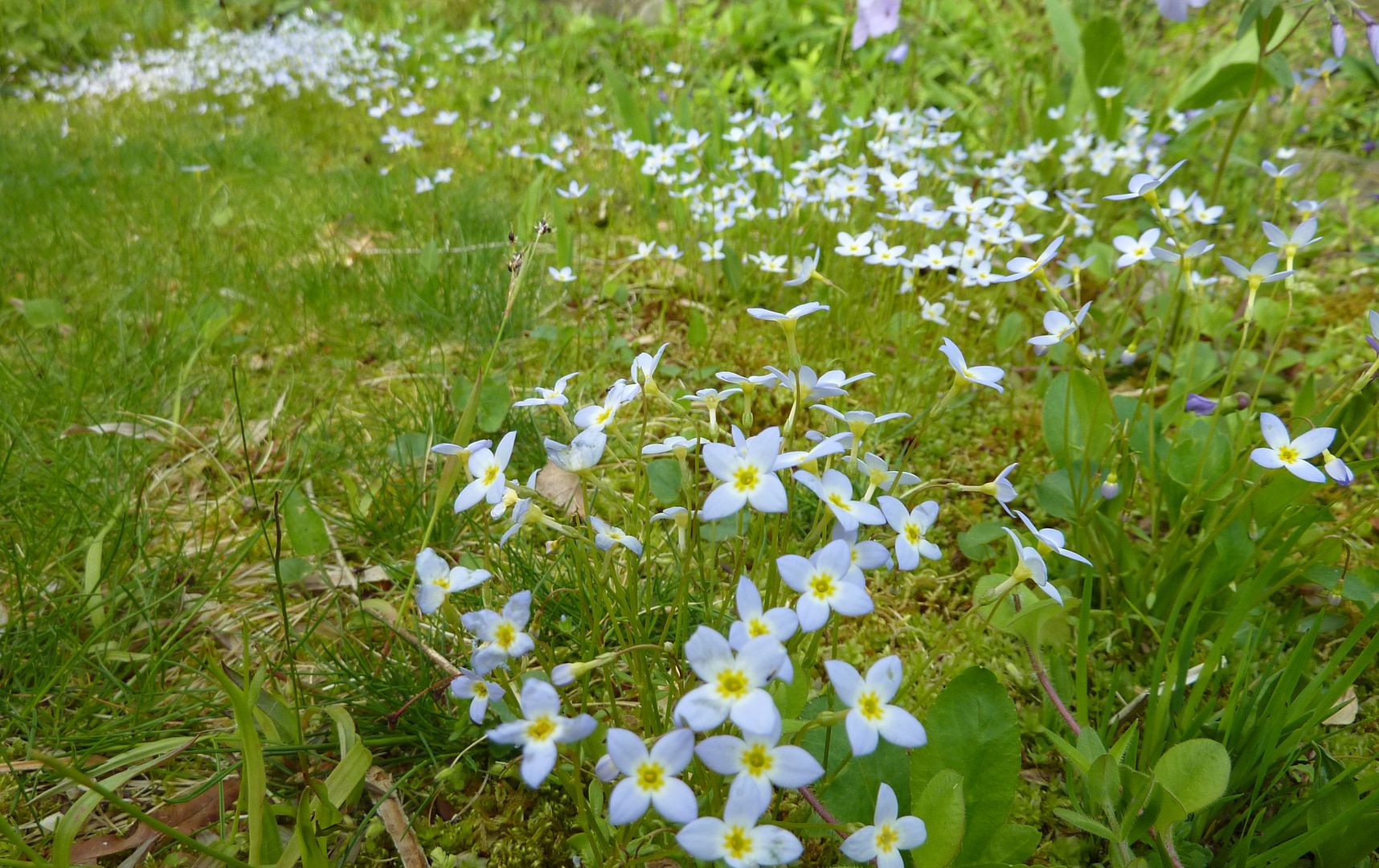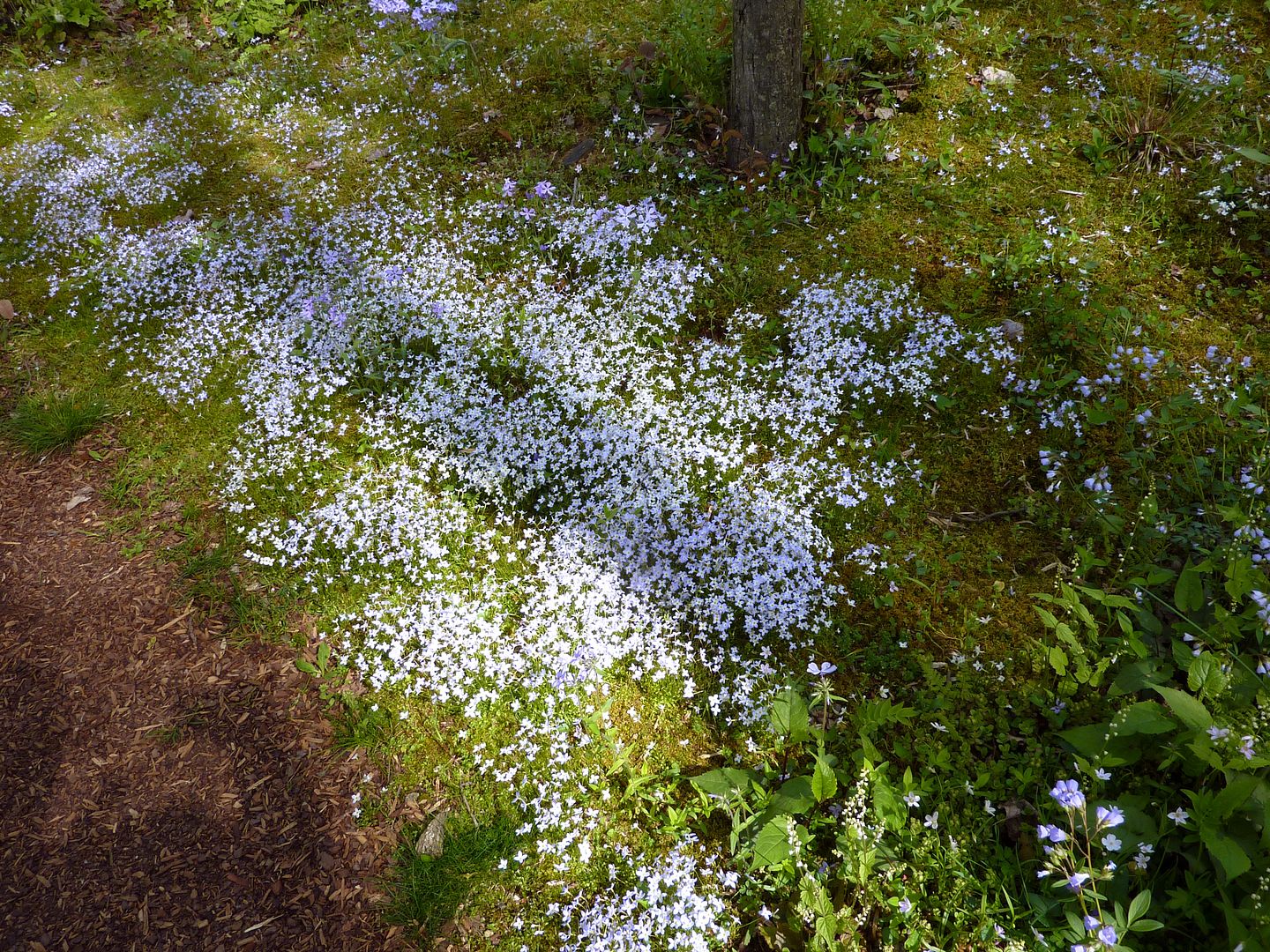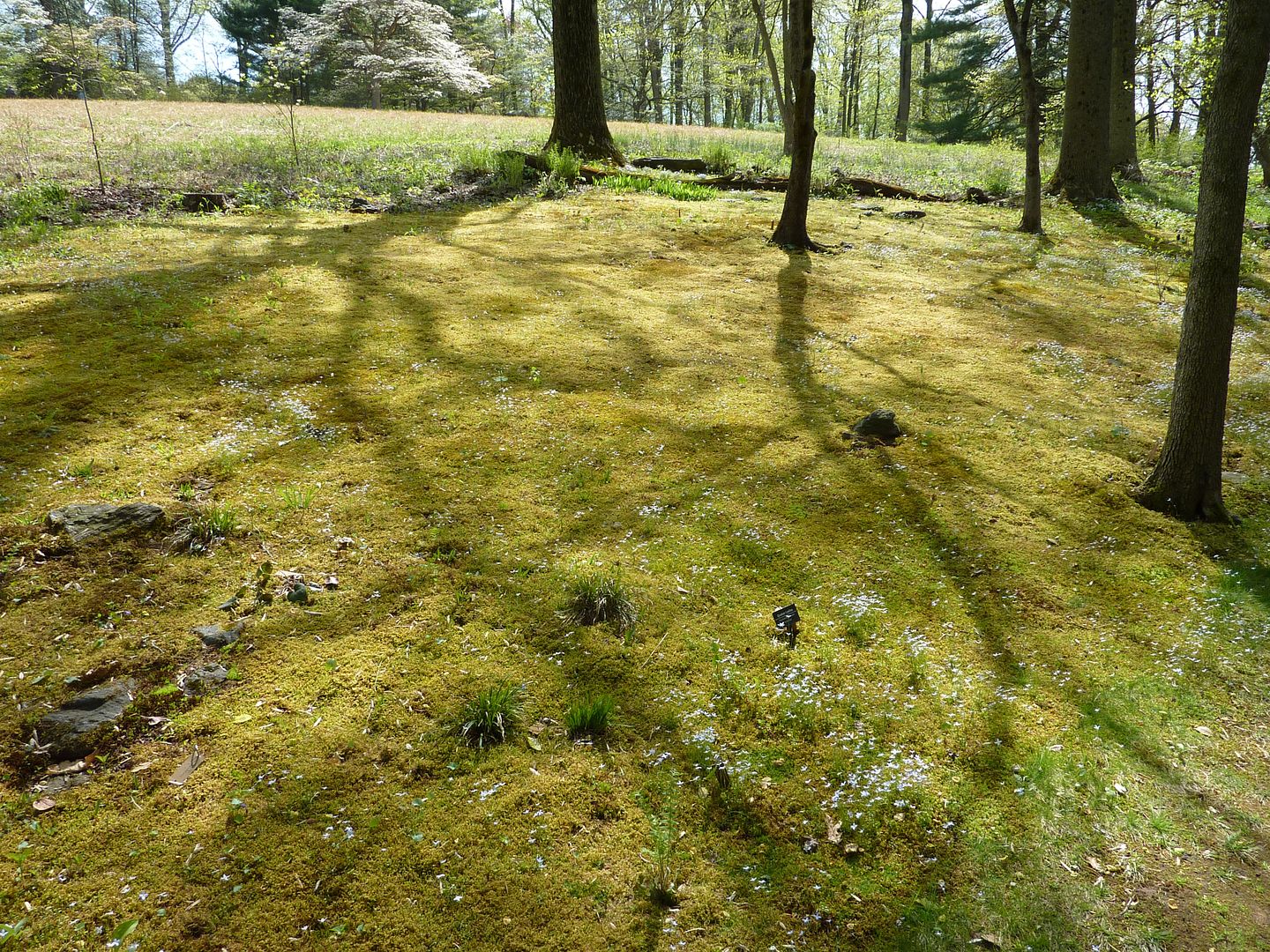Tuesday, April 30, 2013
Another Butterfly... again...
Alright, second girl. This is starting to get old and less eventful. I count two left to emerge and then hopefully I'll be able to get some caterpillars going after that. Releasing these into the wild my backyard typically results in them sunbathing (as seen above) and then taking off and flying away.
Honeybees on Fernleaf Phacelia
So of all the plants flowering at the Mt. Cuba Center yesterday, Fernleaf Phacelia, Phacelia bipinnatifida, seemed to be the winner with honeybees. That's not to say I saw a lot of them there, but rather that's the plant they found. Now, their gardens are in the middle of a wooded area, so whatever hives these bees were from are likely finding flowering trees first and the wildflowers second. I believe that if someone were to put a hive somewhere in the gardens, rather than on an adjacent farm, that we'd see even more honeybees working their plants, and even more on the Phacelia especially.
That said, honeybees aren't exactly beneficial to nature. They typically out compete the native bees, but that's a fairly broad statement. In the springtime there's almost too much for honeybee hives to pick of so there's plenty of food for native and nonnative bees. But if there's a native bee species that can only pollinate one or two species of plants (often something rare, endangered, or picky about it's growing conditions) and honeybees work it first, then yes that's a bad thing. Over the summertime flower selection becomes more narrow as most trees have already flowered for the year, and spring ephemerals have started setting seed to go dormant. Arid climates are another issue and make honeybees look so much worse because native bee populations tend to be so much more diverse there as they've adapted more closely to the desert plants and their bloom cycle.
So introducing a hive of honeybees can be a detriment to the environment. What was found in a recent study though, was while honeybees do come in and steal all the food, they were still pollinating the plants (I'm sure in most cases but not all), and in the course 4 to 8 years young saplings and patches of new plants of whatever they were working started to flower. Honeybees don't typically bother with small trees, or small patches of flowers, they'd rather point out the bigger ones and stick with that. So the native bees suddenly had a source of food they could use and their populations recovered some. It's just the initial hit of adding a hive (or a truck load of hives) takes a serious chunk of nectar off the table for indigenous species.
I believe that by planting native plants, we can feed the native bees, support more biodiversity, and still produce a honey crop. Which is why I was so thrilled to see the Native Plant Sale down the road was selling Fernleaf Phacelia, and I had to buy some! Hopefully they'll go to seed, I'll have more to transplant and grow, and maybe in a few years I'll have a yard that looks as amazing as the Mt. Cuba Center.
That said, honeybees aren't exactly beneficial to nature. They typically out compete the native bees, but that's a fairly broad statement. In the springtime there's almost too much for honeybee hives to pick of so there's plenty of food for native and nonnative bees. But if there's a native bee species that can only pollinate one or two species of plants (often something rare, endangered, or picky about it's growing conditions) and honeybees work it first, then yes that's a bad thing. Over the summertime flower selection becomes more narrow as most trees have already flowered for the year, and spring ephemerals have started setting seed to go dormant. Arid climates are another issue and make honeybees look so much worse because native bee populations tend to be so much more diverse there as they've adapted more closely to the desert plants and their bloom cycle.
So introducing a hive of honeybees can be a detriment to the environment. What was found in a recent study though, was while honeybees do come in and steal all the food, they were still pollinating the plants (I'm sure in most cases but not all), and in the course 4 to 8 years young saplings and patches of new plants of whatever they were working started to flower. Honeybees don't typically bother with small trees, or small patches of flowers, they'd rather point out the bigger ones and stick with that. So the native bees suddenly had a source of food they could use and their populations recovered some. It's just the initial hit of adding a hive (or a truck load of hives) takes a serious chunk of nectar off the table for indigenous species.
I believe that by planting native plants, we can feed the native bees, support more biodiversity, and still produce a honey crop. Which is why I was so thrilled to see the Native Plant Sale down the road was selling Fernleaf Phacelia, and I had to buy some! Hopefully they'll go to seed, I'll have more to transplant and grow, and maybe in a few years I'll have a yard that looks as amazing as the Mt. Cuba Center.
Monday, April 29, 2013
Mt. Cuba Center's 9th Annual Wildflower Celebration (3 of 3)
False Indigo, Baptisia australis, was just poking up out of their prairie.
These should quickly open up into the foliage and the flowers.
They're doing a trial on a bunch of cultivars available and I hope to be attending the class there at the Mt. Cuba Center. It falls on my birthday, May 16, so it's my way of treating myself.
One of the concession vendors had a popcorn maker that looked like it may have been the model-T of its day. I got to taste a little and wasn't impressed. The popcorn was fairly flavorless, didn't seem to be salted, and they'd used caramelized sugar (which was burned by just a hint) instead of butter or canola oil. Still it was good to see and try.
Elsewhere in the Trial Garden they were still running their Heucheras from last year. I was handed a flag and asked to put it next to which one I thought was the best. Heucheras aren't something I'm drawn to as most of them are either wind pollinated or only visited by flies, but many gardeners love them for their wonderful foliage and diversity of leaf color. For whatever reason, I seemed to be drawn to this copper colored one, Heuchera 'Southern Comfort' and I wasn't alone in my decision.
The forest edge garden is home to many dogwoods, elderberries, redbuds that are actually red flowering, and a fair number of other plants I'm sure.
Directly across from this garden was a kids event. In years past they'd focused on caterpillars, but this year they focused on ants and plants that disperse their seeds with packets of elaiosome! Best of all, they were given fruit snacks for carrying their seeds through an obstacle course!
The Round Garden was filled with dozens of nonnative plants being used as nonnatives should be, as ornaments to accent our native plants, rather than being the standard in our landscapes.
An Anemone caught my eye just down the way, but I don't think it's a native one. I could be wrong.
Also on the day of the Wildflower Celebration was a Raptor Bird Demonstration. Here a Screech Owl was placed upon a perch for visitors to take pictures of. Later on they had this little guy out when they talked about them but I don't believe we ever got to see him fly (they're nocturnal anyhow).
This was a Hawk (of some sort), forgive me, we were actually shown five or six different types of birds and I can't recall the names of them all.
All of these birds were rescues or born with defects. And rather than having them put down they're used for demonstration and educational purposes.
A few of them got to fly around. Mostly this was to and from trainers, and various stands they'd setup for them to land on.
I think this was a Red Shouldered Hawk.
This was a Red Tailed Hawk.
Here is a Turkey Vulture. This guy was quite the character. Prior to the show, the speaker had explained their birds might take off and land in the trees or venture about the area a little, and that this was fine. Mostly these birds don't get the chance to do this much flying in a given day and when they do they don't usually have this much open space to practice in.
Well after taking off he decided to land up in a tree, and then instead of returning to the trainer he flew up onto the main house.
And as he'd done this, he'd attracted the attention of other Vultures in the area which decided to fly down closer to see what was going on.
He took off and landed in a great big pine tree, and the other Vulture actually came down and landed in it with him. And I thought this was all amazing.
Did I mention this entire day was free and open to the public?
Mt. Cuba Center's 9th Annual Wildflower Celebration (2 of 3)
There are a few wildflowers growing among the moss such as Shooting Stars, and Trilliums that still put on a good show. I actually like the shadows of the trees laying down among these delicate wildflowers. It almost tells a story.
The Mt. Cuba Center is entrusted with maintaining a variety of Trillium species, and you almost have to buy their handy book if you want to identify them all out in the gardens. Trillium grandiflorum, was probably one of the most abundant one used in the gardens, though I think T. flexipes is found in more of their gardens and is a little bit more successfully grown.
A highlight to T. grandiflorum is it's big showy white flower. This one hasn't opened fully yet but already you can tell what it is. The pollen anthers to this species typically don't poke out of the flower that far at all. About five days to a week later they'll start to all turn shades of pink and magenta and about a week after that the petals fall off completely.
Trilliums are a staple of the woodland garden and it's sinful that they're not more commonly known and grown today.
An issue with growing so many Trillium species in one place is that they're fairly promiscuous plants. In nature you'd only ever find one or two species per several miles and they'd mostly be closely related to one another. Lots of plants will abort their seeds or are incapable of cross pollinating between species. Not so in Trilliums. Little flooks of nature seem to spring up all over the place. In the interest of species purity, these hybrids were mostly moved to the outskirts of the gardens, but a few have been embraced and were even given cultivar names.
Trillium grandiflorum 'good pink' is a form that is solid pink right when it opens.
Here's a little one that I must have been ignoring all these years.
Trillium pusillum. which is only a few inches high.
This one I believe is Twisted Trillium, Trillium stamineum, which is a favorite of mine. It's also growing next to some rather tall Spring Beauty.
It's called Twisted Trillium becuase the petals twist around.
Trillium luteum, which is one of the few yellow flowering species. They actually smell sweet and citric like.
Trillium flexipes, note the white flower that's more open than T. grandiflorum, and all the yellow of the pollen anthers and cream to white the stigma and pistil look.
Nodding Trillium, Trillium cernuum, has pollen that's almost blue in color. There's also just a kiss of red on the stigma. Normally the flower is bending down under the leaves to almost face the ground but these were mostly all up and showy.
Trillium simile is an absolute favorite of mine. I don't know what it is, but that all red pistil in the middle there makes it such a nice accent of color to the pale yellows, pale greens, the white, and the leaves.
Now having looked at all those, I'm at a lose to figure out what this species is. It has the sort of red that T. simile gets, and as that seed pod develops, this is about how I'd expect that color to bleed out. But then I look at, Trillium flexipes and Trillium cernuum, and wonder well what if they get this color and lose the others they normally have. I'm leaning toward it being T. simile just past it's prime, but only because the top flower petal being slightly bigger is something I see more in that species than other, but I can't really rule out T. flexipes because I don't know how soon their seed pod gains color.
This appears to be a faded Red Trillium, Trillium erectum.
Here's what an unfaded one looks like. They smell like awful rotting fish to attract beetles and carrion flies up to them. Thankfully one has to practically stick their nose into the flower to get that effect.
Bog Rosemary, Andromeda polifolia, and Swamp Pink, Helonias bullata, growing along a pond.
I may have to get one of these. I'm fascinated because I've never heard of this plant before.
The flowers are fairly charming to look at and the foliage seems like it would be interesting at other times of the year.
Swamp Pink, Helonias bullata, is always showy to see in person. Sadly this is a threatened species, and my understanding is that the deer treat this like cotton candy in the wild. Their seeds need the perfect amount of cold hours to germinate too. One week too much or not enough and they won't grow at all.
Mt. Cuba Center's 9th Annual Wildflower Celebration (1 of 3)
Yesterday the Mt. Cuba Center held their 9th Annual Wildflower Celebration. I've always loved the Mt. Cuba Center for it's wonderful classes, it's beautiful gardens, and the best part is, it's almost entirely comprised of native plants that are laid out in a naturalistic setting. One of the glorious things about this type of garden is that there's always something different flowering each time you go.
Plants tend to bloom at certain times of the year but depending on what type of winter, how warm the soil is, and how much rainfall we get, that bloom time can change dramatically from 4 sooner or later. And every plant reacts differently to these factors so there's always bound to be something different happening each time you go. For example, last year I saw loads of milkweed already pushing through the soil, there were loads of Amsonia in flower along side Wild Hyacinth, and loads of Foam Flower lining the walk ways. This year, Milkweeds had only just poked out of the ground, Amsonia was present but not flowering yet, Wild Hyacinths were unnoticeable, and the Foam Flowers had just opened their first blossom.
Their white flowering Eastern Redbud, Cercis canadensis var. alba, greeted visitors as they came in.
Normally this species is pink but this variety lacks those pigments. What I found more surprising was they had an assortment of this species that was actually had red flowers! Really they were a bright magenta but it was still stunning to see. The white flowering type I think worked best where there was a lot of black in the background, as either a very shaded forest, or dark trunks to trees.
Woodland Poppies, Stylophorum diphyllum, were the first wildflowers to abundantly line the paths.
Droves of May Apple, Podophyllum peltatum, used to overwhelm this plot of land and I can see they've either been thinned out or are just a few weeks behind schedule. None of the May Apples were flowering yet.
But that's all to the benefit of the woodland poppy, a plant who's seeds are dispersed by ants thanks to the elaiosome coating their sees. They're a lot easier to grow than Trilliums and get my recommendation whole heartedly.
Fernleaf Phacelia, Phacelia bipinnatifida, quickly joined up the trail. This is a wildflower that almost no one seems to sell, either as seeds, or bare roots. It's one I've been after because I know honeybees love it, as well as other Phacelia species.
They're biannual and grow in "damp woodland" areas. Though I've found anywhere that has leaf litter tends to have some dampness to it whether it's near the river or up the hill.
The two species started to blend well with one another, the yellow playing off the purple.
Woodland Poppy is actually a perennial but they seem to hold their own against the Phacelia, and it's likely the gardeners at Mt. Cuba help thin these out when they grow too abundantly. I recall years ago that Virginia Bluebells used to overwhelmingly conquer this part of the garden.
Here's one of the few parts of the garden where one can see through to another path, normally they have shrubs planted to block this from happening.
Virginia Bluebells, Mertensia virginica, joined in shortly after, but not in the vast sweeps I remember it. They can be aggressive plants, spreading both by seed and dividing underground in all directions. I'm told their roots run deep too, making them difficult to weed but even if one were to weaken the plant it would still be enough to add more things around them.
They became the blue mixing with the purple...
and this made an amazing effect. I would love to get these three plants as a seed mix with maybe a dash of a few other species to dot here and there. These three formed the bulk of an amazing carpet of flowers.
In reality they were only this abundant along one or two of the paths and then turned into smaller specimen plantings elsewhere.
But what a wonderful filler plant these are for all those places just off the beat and path.
This is how I want my shade gardens to look.
This was one of their Rhododendrons that was flowering and looked very pretty. They have a lot of different species (including one that flowers later on in July or August!) but most weren't blooming yet.
An assortment of ferns were mixed in all over among the gardens that were poking up with their golden fiddleheads, waiting to take center stage.
Wild Geranium, Geranium maculatum, was used more heavily in slightly more formal settings. Presumably because it doesn't spread as prolifically as the others.
Jacob's Ladder, Polemonium caeruleum, was also used to make up some of the blue in the forest floor, but not as extensively as the Virginia Bluebells.
Jacob's Ladder is another plant honeybees love, though I rarely get the chance to see enough of it growing together to get their attention. Bumblebees and mason bees were all over everything though.
Fernleaf Bleeding Heart, Dicentra eximia, were also used here and there.
I even found the white form along a pathway.
Golden Ragwort, Senecio aureus, lit up some of the particularly dark places in the garden. This is a wonderful plant that's easy to grow. They spread by seed and underground rhizomes, and I've even noticed their seeds are sought after by certain types of birds including goldfinches. Also in the photo are codes you could take a picture of with your phone, and the directs you to their web page with all the growing instructions on it.
The first 500 people to visit that day got to take home a free plant, and this year Golden Ragwort was it.
This was a rather short Phlox of some sort. White flowering obviously. There wasn't much of it but I thought it was neat. Phlox is surprisingly easy to start by seed which is what got me interested in this little plant.
Woodland Phlox, Phlox divaricata, was used more formally along a few paths. In previous years it had mixed with Foam Flower but those weren't really blooming yet.
Violet Wood Sorrel, Oxalis violace, actually opens up a brilliant hot pink/magenta color but quickly fades down to a pale pink color. The leaves to this genus looks almost identical to those common sorts of Clover.
Bluets, Houstonia caerulea, seem to have changed their position in the garden over the last few years.
They're a very delicate (biannual I think) plant that needs just the right conditions to grow. Moss and slightly dampness over the summer months seems to be critical but also there can't be any other large plants around that would out compete them.
When successful they grow to form a great big patch.
Up the hill is where they were previously in the gardens for many years. I remember seeing this at it's peak and there were so many Bluets flowering that I honestly mistook it for snow. Now though it's mostly just a patch of moss, and almost all the Bluets have either been transplanted elsewhere or died out mysteriously. I didn't get a chance to ask the gardeners what the case was but I feel it's a little shame there aren't as many here as there once was.
Plants tend to bloom at certain times of the year but depending on what type of winter, how warm the soil is, and how much rainfall we get, that bloom time can change dramatically from 4 sooner or later. And every plant reacts differently to these factors so there's always bound to be something different happening each time you go. For example, last year I saw loads of milkweed already pushing through the soil, there were loads of Amsonia in flower along side Wild Hyacinth, and loads of Foam Flower lining the walk ways. This year, Milkweeds had only just poked out of the ground, Amsonia was present but not flowering yet, Wild Hyacinths were unnoticeable, and the Foam Flowers had just opened their first blossom.
Their white flowering Eastern Redbud, Cercis canadensis var. alba, greeted visitors as they came in.
Normally this species is pink but this variety lacks those pigments. What I found more surprising was they had an assortment of this species that was actually had red flowers! Really they were a bright magenta but it was still stunning to see. The white flowering type I think worked best where there was a lot of black in the background, as either a very shaded forest, or dark trunks to trees.
Woodland Poppies, Stylophorum diphyllum, were the first wildflowers to abundantly line the paths.
Droves of May Apple, Podophyllum peltatum, used to overwhelm this plot of land and I can see they've either been thinned out or are just a few weeks behind schedule. None of the May Apples were flowering yet.
But that's all to the benefit of the woodland poppy, a plant who's seeds are dispersed by ants thanks to the elaiosome coating their sees. They're a lot easier to grow than Trilliums and get my recommendation whole heartedly.
Fernleaf Phacelia, Phacelia bipinnatifida, quickly joined up the trail. This is a wildflower that almost no one seems to sell, either as seeds, or bare roots. It's one I've been after because I know honeybees love it, as well as other Phacelia species.
They're biannual and grow in "damp woodland" areas. Though I've found anywhere that has leaf litter tends to have some dampness to it whether it's near the river or up the hill.
The two species started to blend well with one another, the yellow playing off the purple.
Woodland Poppy is actually a perennial but they seem to hold their own against the Phacelia, and it's likely the gardeners at Mt. Cuba help thin these out when they grow too abundantly. I recall years ago that Virginia Bluebells used to overwhelmingly conquer this part of the garden.
Here's one of the few parts of the garden where one can see through to another path, normally they have shrubs planted to block this from happening.
Virginia Bluebells, Mertensia virginica, joined in shortly after, but not in the vast sweeps I remember it. They can be aggressive plants, spreading both by seed and dividing underground in all directions. I'm told their roots run deep too, making them difficult to weed but even if one were to weaken the plant it would still be enough to add more things around them.
They became the blue mixing with the purple...
...mixing with the yellow...
and this made an amazing effect. I would love to get these three plants as a seed mix with maybe a dash of a few other species to dot here and there. These three formed the bulk of an amazing carpet of flowers.
And they work so well together.
They were growing under Rhododendrons and shrubs I couldn't identify.
But what a wonderful filler plant these are for all those places just off the beat and path.
This is how I want my shade gardens to look.
This was one of their Rhododendrons that was flowering and looked very pretty. They have a lot of different species (including one that flowers later on in July or August!) but most weren't blooming yet.
An assortment of ferns were mixed in all over among the gardens that were poking up with their golden fiddleheads, waiting to take center stage.
Wild Geranium, Geranium maculatum, was used more heavily in slightly more formal settings. Presumably because it doesn't spread as prolifically as the others.
Jacob's Ladder, Polemonium caeruleum, was also used to make up some of the blue in the forest floor, but not as extensively as the Virginia Bluebells.
Jacob's Ladder is another plant honeybees love, though I rarely get the chance to see enough of it growing together to get their attention. Bumblebees and mason bees were all over everything though.
Fernleaf Bleeding Heart, Dicentra eximia, were also used here and there.
I even found the white form along a pathway.
Golden Ragwort, Senecio aureus, lit up some of the particularly dark places in the garden. This is a wonderful plant that's easy to grow. They spread by seed and underground rhizomes, and I've even noticed their seeds are sought after by certain types of birds including goldfinches. Also in the photo are codes you could take a picture of with your phone, and the directs you to their web page with all the growing instructions on it.
The first 500 people to visit that day got to take home a free plant, and this year Golden Ragwort was it.
This was a rather short Phlox of some sort. White flowering obviously. There wasn't much of it but I thought it was neat. Phlox is surprisingly easy to start by seed which is what got me interested in this little plant.
Violet Wood Sorrel, Oxalis violace, actually opens up a brilliant hot pink/magenta color but quickly fades down to a pale pink color. The leaves to this genus looks almost identical to those common sorts of Clover.
Bluets, Houstonia caerulea, seem to have changed their position in the garden over the last few years.
They're a very delicate (biannual I think) plant that needs just the right conditions to grow. Moss and slightly dampness over the summer months seems to be critical but also there can't be any other large plants around that would out compete them.
When successful they grow to form a great big patch.
Up the hill is where they were previously in the gardens for many years. I remember seeing this at it's peak and there were so many Bluets flowering that I honestly mistook it for snow. Now though it's mostly just a patch of moss, and almost all the Bluets have either been transplanted elsewhere or died out mysteriously. I didn't get a chance to ask the gardeners what the case was but I feel it's a little shame there aren't as many here as there once was.
Subscribe to:
Posts (Atom)

